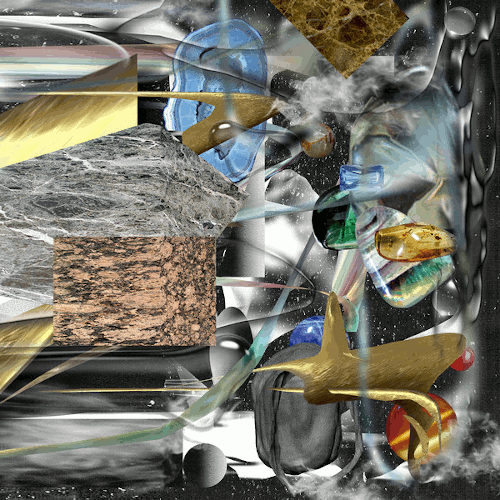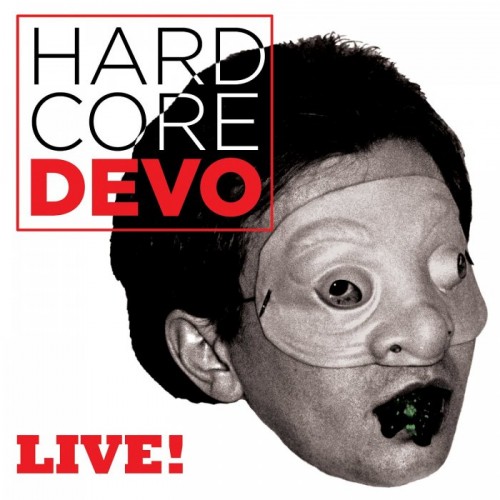Various – Advance 2000.3
Label: Mute Format: CD
What are the folks at Mute up to right now?
Advance 2000.3 isn`t really an album as such. It’s a compilation of the up and coming Mute (and Novamute) releases. You won’t find it in the shops, unless you work in the shops.
2000.3 has new releases from Erasure, Goldfrapp, Add N To (X), Cristian Vogel, Echoboy, Holger Hiller, Foil, Luke Slater, and Recoil. That’s a pretty varied mix, better than many compilations for sale. But this is Mute Records, after all.
Here’s a rough digest of the CD. Erasure are back with their first single in three years. “Freedom” is boppy House number with sprinklings of Kraftwerk-y vocals. Beneath it all the tune is still driven by a Synth Pop heart. It’s like the Eighties never went away. Goldfrapp’s “Utopia” is generally pretty epic track with lots of big synths.
Add N To (X) and Luke Slater provide moments of cute and groovesome Electro with “Plug Me In” and “All Exhale (Electropunk Mix)” respectively. Cristian Vogel’s latest single “Whipaspank” is a curious and wonderful chunk of techno.
Echoboy are one of the revelations for me. “Telstar Recovery” is Hawkwind for the post-Big Black epoch. (How many times can Big Black be safely mentioned in one month of reviewing?) It’s a drone Rock epic that’s been dragged kicking and screaming though a playground full of broken glass. Great fun unless you happen to fall off the swings. Holger Hiller is back with the minimal and demixed “Curmbox“. Foil are in the noisy Nirvana realms with their track “Superhero No.1”. Recoil’s track “Jezebel” is the other revelation of the CD – a bizarre and biblical rap with backing vocals provided by Diamanda Galas.
Yep, another packed month or three for the people at Mute.
-ap-
Various – The Answering Machine Solution
Label: Staalplaat Format: CD
“This CD celebrates the 100th cd release of Staalplaat. Not a mere compilation but a tool. It contains a wide variety of sounds that you can load on your answering machine . The first part of the CD are ready made pieces, followed by a series of sound-only material. You can use these to speak your own text (the Karajoke part). The third section contains material which you can leave on answering machines that you have called. And the fourth part is something special… This booklet contains a lot of texts for those who practise karajoke for their machines. Needless to say that you have to translate the text in your language!”
And that’s precisely what is. One of the best compilations ever, I guaran-f’ing-tee it. It’s a great collection of sounds with which one can hector the answering machines of friends and enemies alike. Some of the contributions from the European contingent share a fascination with American evangelical speakers and Jack Chick-level Christianity. Others hold a particular inquisitiveness and fascination with the human voice, and about the telephonic medium at large. Nigel Ayers‘ field recording of shamanic songs of Yemani upon installation of telephone equipment – to bring good luck – are particularly illuminating.
-David Cotner-
Various – At The Threshold Moment – A Tribute To Coil
Label: Else Format: CD
 The negative thing about tribute albums is that they can be an outlet for a bunch of otherwise unknown bands and artists to get some attention by producing variable-quality interpretations of their influences’ music. This seems for some reason to be a particular problem with dodgy Goth cover bands taking apart their Eighties heroes, with all the panache of a pub-rock band in full boozy flight. Fortunately, this is not the case with At The Threshold Moment, in that the contributors, drawn from members of the Coil email list , have chosen largely to make their pieces resemble remixes more often than not, or to produce tracks in the spirit of Coil instead of straight covers.
The negative thing about tribute albums is that they can be an outlet for a bunch of otherwise unknown bands and artists to get some attention by producing variable-quality interpretations of their influences’ music. This seems for some reason to be a particular problem with dodgy Goth cover bands taking apart their Eighties heroes, with all the panache of a pub-rock band in full boozy flight. Fortunately, this is not the case with At The Threshold Moment, in that the contributors, drawn from members of the Coil email list , have chosen largely to make their pieces resemble remixes more often than not, or to produce tracks in the spirit of Coil instead of straight covers.
A case in point are the two versions of “Absolute Elsewhere”, the joke for the uninitiated being that the original track was a blank B-side to the “How To Destroy Angels” single. This could easily have led to some “covers” as interesting as those which have appeared of John Cage’s “4’33″” – and to a point, Steven Stapleton already did that schtick a few years back on the official How To Destroy Angels remix album. J. Frede‘s “Elphswhere Mix” opts for what sounds like the ungrooved disc played through various delay and mixer effects to make a wash of glitches and screes, while COH sneaks out what might possibly be considered an extended mix/cover of the track as a suitable closing moment of the CD.
Among the occasional Coil covers/smaplings was the appalling Great White Hype “Protect Yourself” track a few years back, which twisted up “Protection” into a bizarre, horrifyingly unfunny Rap track about the group’s back catalogue. So it’s particularly ironic and not a little bit gratifying that Jowonio Productions choose to turn the same sources into a weird and strangely affecting analogue bass and breakbeat soundclash with Presley singing “Falling In Love With You” on “Coil vs Elvis” – definitley the oddest track on the disc. The other Jowonio track, “Tea With P & J” takes an equally strange wander through squelchy analogues and distended vocal snippets of a Punch & Judy show to Plunderphonic dimensions.
Likewise, Mkka‘s “Coiluntitld” takes various slippery snickers and moulds them into a meta-mix which has all the attributes of Coil through the years (pianos, eerie circlings and vocal samples included), made into a gloopy Ambient track. Other atmospherics and rumblings come in the shape of Amenti Suncrown‘s ominously minimal “Pzoar” and the tinkly snitches, frazzled chords and phased aetherial voices of their “Pollen”, while a short interlude of layered insect noises makes up 3Z13‘s “And They Shall Inherit”. Equally narcotic are Anne Drogyness‘ drone swirl “Cyproterone Acetate”, Dhex‘s effective slo-mo collage “Broken Piano Remix” with its ascent into electronic noise, and Else‘s own mysteriously half-intelligible voice and deftly-snipping electro irritant cut up. The Feigenbaum Point construct a mesmeric slap-back shimmer of thudding beats and distortion in “God Please Fuck My Mind For Good” and Paul Roth provides a noisy “Precursor To Entropy” as well as a shortened take on hallucinogenic synth project Time Machines‘ “2,5-dimethoxy-4-ethyl-amphetamine: (DOET/Hecate)”. This has a less urgently buzzing feel to the original – but possibly similarly trans-chronic results in the right chemical conditions.
Of those who choose to tackle the song-based material in more direct covers, Les Cochons de L’Amour bring a nice balance of hushed dynamics and dread to their sinister breakbeat and tape-mechanism rewind cover of “The Anal Staircase”, and even if their vocals lack the full intensity required they’re also quite an effective intro to the full-on (but nicely restrained) chunky beats. R‘s “Thump” smears feedback and echoing room recordings over a faithfully stop-start bass beat and melodica line. It’s hard to tell if this version was recorded in a Thai kick-boxing ring like the original, but it certainly does simple justice to the source, rising to an ear-splitting finale. Inimikal‘s “Red (Green Blue) Queen” mucks around with wibbly effects and disjointed, rolling breaks behind a chopped-up album version of the song, but doesn’t add a huge amount to the Coil original along the way. What Pox‘s “Gunsmoke” has to do with Coil isn’t immediately apparent, as it’s a Funky little groover involving samples of arguments about watching TV and Biblical quotation, but no doubt there’s some connection somewhere…
So as mailing-list tribute albums go, At The Threshold Moment proves that there are some creditably talented musicians and interpreters out there. What’s also gratifying is that the contributors have largely had the imagination to be neither too respectfully literal nor blindingly obvious in their methods and choices. Above all, the best recommendation is that this CD sounds like a rather good compilation which just happens to be inspired by Coil.
-Antron S. Meister-
Various – Audio Odditions #2
Label: Influx Communication Format: CD
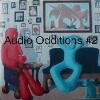 Ten tracks of drifting psychedelic ambience from Influx Communications of San Francisco, bound together into a compilation of evolving moods and quite effective unity of purpose and result – especially as the main idea seems to be messing with the listener’s head as well as expectations. U-R-I‘s “Mel and Cholera” gently rises up as the first track in a mode reminiscent of Coil‘s more ambient pieces from the Love’s Secret Domain era, as delayed and volume-controlled sounds, including flute of decidedly non-soundtracky sibilance. Ion Sports ring into more shrply-attacking squalls as a telephone calls up a storm of processed environmental noise, tape-adjusted vocal snatches and ominous twinkling guitar detritus. So far, so Isolationist.
Ten tracks of drifting psychedelic ambience from Influx Communications of San Francisco, bound together into a compilation of evolving moods and quite effective unity of purpose and result – especially as the main idea seems to be messing with the listener’s head as well as expectations. U-R-I‘s “Mel and Cholera” gently rises up as the first track in a mode reminiscent of Coil‘s more ambient pieces from the Love’s Secret Domain era, as delayed and volume-controlled sounds, including flute of decidedly non-soundtracky sibilance. Ion Sports ring into more shrply-attacking squalls as a telephone calls up a storm of processed environmental noise, tape-adjusted vocal snatches and ominous twinkling guitar detritus. So far, so Isolationist.
The mix of appropriately odd sounds with the more beautiful selections which the compilation title suggests continues in a laid-back, whispery Dub Electronica fashion through “Touch” from Voice Of Eye and the expectantly-layered bloops and whooshes of S.Q.E.‘s “Don’t Leave Me”, which deteriorates nicely into cut-up samples of various moans and crashes before a virtual orchestral close. Bloodbox‘s “The Sky Is Falling” makes the requisite apocalyptic manouvres from bulging atmospherics on to distant deep-level bass rumbles and vague rhythm terrain in tectonic fashion; Edward Ka-Spel‘s “Dream Stealer” is remixed by CD compiler Fruitless Hand into a suitably semi-waking muse of psycho-mythological storytelling merged in and out of the tidal synth reverberations.
The mood is broken, but not destroyed, by Orchis‘ “The Innocence”, a lovely little acoustic guitar-based song featuring effective female vocals and some subtle electronics which could call both Dead Can Dance and The Wicker Man to mind, should the need arise. After this interlude of more direct beauty, Kaosmik Kitty and their “Kaosmik Afterbirth” are even more unsettling than if heard in isolation. Cats yawls are run through echo boxes until they become a supernatural chorus of auto-flanging voices from the aether, and the interleaving of moans and whimpers with the more disturbing kind of synthesizer settings make a darkling return. The end of this track is unpleasantly effective in a manner very reminiscent of Monte Cazzaza or Hafler Trio.
So it’s left to Troum to whistle up a windtunnel of layered drones to bring everything back down to a more stable plateau, even if this might not be as comfortable as it first seems. The sort of big sound which at once quietens and fills the void of sounds between the everyday noises in the background (or the skull if listened to on headphones) “Rigor Vitreus” makes for a soothing descent into the canine shenanigans from Sebastien (the avant-guard dog) and his family portrait. If this is what his home is like, it’s not a comforting place to live, but at least an eventful one.
-Antron S. Meister-
Various – Audio Odditions #2
(A Second Opinion)
U-R-I twists the tones from the harmonium or something very like it. The winds bring another place to bear, someplace filled with cliffs and faraway but not so far that it couldn’t be seen by looking over the shoulder, by looking back. The horns ride hard against the growing mist but the circles are so alluring, they gravitate towards them instead. Ion Sports calls you on the telephone. An answer and breathing up cubic yards of hiss. Twirling feedback travels over the breadth of a guitar and a faintly familiar reverie casts various palls over various places. Voice of Eye summon shivering tones and whispers whispers and a certain amount of gas, which the piece can quite rightly be claimed to be. It flows seamlessly into “Don’t Leave Me” by S.Q.E. – mists of notes/tones and how closely do the themes of experimental music parallell the themes of “popular” music? How far removed is it? The sounds collapse into a snatch of conversation and how deeply is the undercurrent running? Much crescendo, rising and falling. “Atonal music” and a weeping precedes the bowing of the strings.
Blood Box seeps in sidiously, a hand of sand across the depth of twilight and yes, another fine example of fuck music, except that it is too long for anything but the direst quickie. Edward Ka-Spel, in turn, steals the dream, and he can take every one I have except the dreams of the snake wearing a vest rolling a big doughnut, and the one where I find out what his real name is. It’s a very slight piece – an almost-forgotten kiss in youth – and one wonders what was cut and what was kept.
Orchis sings a song of “Innocence” and must all our vaunted ideals be capitalised? Can’t they be accepted at face value – are there some ideals that have escaped questioning? The haze of effects drapes itself gracefuly across the singing and thrum. Kaosmik Kitty is just that, and meeeeeeeeeeeeeeeeeeeeeeeeeee ow. Its alleyward sonatas chime in time with the feedback of non-felinear maschines and is it the return of Katzenmusik? No, just the dulcet tones of a panting hellsbellscat, woof. Oh, and in addition, and quite rightly – barf out, fer sherr. Troum brings the rain of drones, this one short, that one tall. A faint metallic taste is divined. A gentle rhythm buoys the sea of sounds, into port, onto a later (but not final) destination… Sebastien weighs in with the sound of dogs and squealing – a family portrait, so it would seem.
-David Cotner-
Various Artists – BBC Radiophonic Workshop: A Retrospective
Label: Mute Format: 2CD
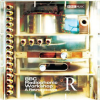 This weird, quirky collection of TV themes celebrates the 50th anniversary of the BBC Radiophonic Workshop. A huge collection of alien landscapes, analogue oddities, bizarre kitsch, and jingles resynthesised and filtered beyond all recognition. It features contributions from workshop regulars such as John Baker, Delia Derbyshire, Daphne Oram, Elizabeth Parker, Desmond Briscoe, Paddy Kingsland, Peter Howell, Malcolm Clarke and others. Of course, the original 1960s Doctor Who theme and TARDIS sound are included. They most easily recognised pieces of Radiophonic work, but the one hundred tracks on this double CD show just how varied and productive the workshop was.
This weird, quirky collection of TV themes celebrates the 50th anniversary of the BBC Radiophonic Workshop. A huge collection of alien landscapes, analogue oddities, bizarre kitsch, and jingles resynthesised and filtered beyond all recognition. It features contributions from workshop regulars such as John Baker, Delia Derbyshire, Daphne Oram, Elizabeth Parker, Desmond Briscoe, Paddy Kingsland, Peter Howell, Malcolm Clarke and others. Of course, the original 1960s Doctor Who theme and TARDIS sound are included. They most easily recognised pieces of Radiophonic work, but the one hundred tracks on this double CD show just how varied and productive the workshop was.
Odd medievalisms like Clarke’s highly filtered track “Hurdy Gurdy” rub shoulders with synthesised sea shanties and full on kitsch such as Kingsland’s “Broken Biscuit Club”. There are points that are reminiscent of the filtered classicism of the Clockwork Orange sound track. Other moments are pure ambience and soundscape. The hundred tracks also show just how experimental the workshop was. If Syd Barrett had made TV themes this is how he would have done it. It is no exaggeration to say that they were every bit as experimental and important as Pink Floyd’s early sonic experiments or The Beatles’ production-as-an-artform album Sergeant Pepper’s Lonely Hearts Club Band. At the same time as the pop and rock experiments of the 60s, people at the BBC were busily exploring new territories and doing things no one had done before. This was before the days of well established and efficient methods of manipulating sound with a computer. Delia Derbyshire made the Doctor Who theme, one of the first purely electronic pieces of music, in the days before sequencers let alone computers. She recorded synth tones on tape and then cut and spliced them together to create the now famous tune.
This pioneering quality is one of the reasons that the Radiophonic Workshop has such an enduring influence in the world of electronica. As more and more people return to analogue the workshop stands as an important point of reference. After all, they invented many of the rules in the book. You’ve just got to hand it to the BBC for setting up something so experimental and innovative. The Radiophonic Workshop may have closed it doors in 1997, but this timely retrospective is an important and often bizarre reminder of their work.
-Alaric-
Various – A Bell Is A Bowl Till It’s Struck
Label: Beta-lactam Ring Records(US)/Beta-lactam Ring Records(UK) Format: CD
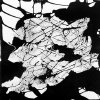 Opening with the first version of the Legendary Pink Dots‘ “Stitching Time”, which reveals what is initially a much slower original to the stunningly psychedelic track which eventually appeared on Shadow Weaver. Instead, a slow vocal chant from Edward Ka-Spel rides flatly over a cirling, untreated guitar melody as the electronic emerge into a swirl of wibbly synths and keyboard choir sounds over un unrelenting pulse. As the vocals become increasingly coloured with tone and emotion, the song takes on a similar character to the final version as the guitar and keyboards soar as effects and pitch bends are added, falling down into the lengthy memory of yet more sinister cut-up additions in line with the LPD’s “Premonition” series and a briefly emergent sax line.
Opening with the first version of the Legendary Pink Dots‘ “Stitching Time”, which reveals what is initially a much slower original to the stunningly psychedelic track which eventually appeared on Shadow Weaver. Instead, a slow vocal chant from Edward Ka-Spel rides flatly over a cirling, untreated guitar melody as the electronic emerge into a swirl of wibbly synths and keyboard choir sounds over un unrelenting pulse. As the vocals become increasingly coloured with tone and emotion, the song takes on a similar character to the final version as the guitar and keyboards soar as effects and pitch bends are added, falling down into the lengthy memory of yet more sinister cut-up additions in line with the LPD’s “Premonition” series and a briefly emergent sax line.
Troum‘s “Lumen” sweeps up from the echoing hallways into an undefined state of levitated Ambience and disquiet; it’s parameters are based in a recorded real-world environment, but the results are strangely redolent of dreams of passing through limbo or purgatory and onwards into choral electronic redemption as the heavenly host play their keyboards to a detuned Doppler shift. As is to be expected, journey times through non-material states may vary, but this one takes a good 23 minutes. Eric and Tanith Lanzillotta bring their sound sources back down to earth with a bump and contact-mic scratch, pursuing the sound of diaphragm in close proximity to target object, more often than not unidentified and unidentifiable fodder for the microphone. Audio squiggles. Buzzes. The rustling of wire grille on object, and what might be the deconstruction of the pickup itself into hums and gentle feedback. It’s odd to note the amount of comforting familiarity this recording process brings, like being under the bedclothes with a tape recorder as a child.
A return to musicality comes via Stimulus, who are “Setting Moods For Sending Information” at the piano. While the keys play out the sad melody, extraneous noises point towards other means of enjoying sound; the data might be obscure, but its transmission soon becomes clearer as the chords rise up through effects processing with a cross-echoed hum and a background scrawl of radio noise. Gently distanced, this piece evokes timeless empty rooms where the echoes of music play after the pianist and party have moved on and the ghosts await the arrival of transdimensional investigators. A different aetherial channel is playing on The Abrasion Ensemble‘s receiver: as the staticky voice sings into the void, the Ensemble play their pipes and drums around about. Only these instruments are literlly of the plumbing or metalwork variety, and they make their workers’ playtime one for the improvisationally-inclined with the addition of bowed power tools or power electronics alike. Lastly, but not at all leastly, Okazaki Fragments uncurl their oscillators with a relaxing jaunt from the mid-range over the low-end before turning up the audio heat to higher pitches and stabbing disgorgments of synthetic noise into the mix as hints of wordless voices echo off the vaults.
-Antron S. Meister-
Various – Below The Radar
Label: ROIR Format: CD
 Subtitled The Best Of Wordsound Dub, this compilation provides a decent snapshot of the label which brougth the world DubHop and Illbient by the bucketload, and bass is quantities previously only available in small earthquakes. It is a truisim of Dub reviews to make that sort of statement – the paradigm of bottom-end analogies leans into descriptive excess in direct proportion to the lowness to which the artists can go, but there’s a particular quality to the rumbling sound which emanates from the speakers at Wordsound HQ and then on to the listener.
Subtitled The Best Of Wordsound Dub, this compilation provides a decent snapshot of the label which brougth the world DubHop and Illbient by the bucketload, and bass is quantities previously only available in small earthquakes. It is a truisim of Dub reviews to make that sort of statement – the paradigm of bottom-end analogies leans into descriptive excess in direct proportion to the lowness to which the artists can go, but there’s a particular quality to the rumbling sound which emanates from the speakers at Wordsound HQ and then on to the listener.
This possibly has something to do with the artist’s preference for slow bassline which linger with malice aforethought, contempating chest-excavations and heartbeat-slowing rhtyms aplenty. That Dub tendency towards time-suspension is evinced by masters of doomy nodding Illness including Wordsound I-Powa‘a terrifically miserable “Dungeon Of Dub”, Dubadelic‘s meandering “Operation Duppy Conqueror” and the similarly Hammer-haunted scat-Dub operatics of “High”. Both this track and Slotek‘s more than downtempo breaks, horror film samples and scratchy vinyl atmosphere on “Born God” hold much transatlantic affinity with the spooky landscapes of The Third Eye Foundation, while “One” brings Gospel shouts and Baptist praises into conjunction with detuned Dub Electronica of a similar unfriendly mood.
Ditto Spectre, whose “Mayday/Nightstalker” reminds just how dark and moody the Illness album from which it hails really is, riding on a spine-tingling staccato violin theme, isolated screams, shivery/squittery analogue synthery and Reggae bass of the wall-warping variety. The Ill Saint’s second track “Revelations” is warm and welcoming by comparison, but only marginally with processed vocal snippets making for a dismal aspect. Mick Harris shows off even more dirty sounds than he presents as Scorn in his guise as The Weakener, and “Closed Door” shivers with live drums and disturbed electronics in familiar style, Scarab bring more spooky moans, chimes and bass from the edge of the pit on “Fall Of The Towers Of Convention”, whose flutes, gurgling samples and drums conjure images of Lovecraftian rituals more than they do pleasant ambience. So it remains for Wordsound mainman The Eye‘s compilation exclusive “Stolen Moments” and Bill laswell and Style Scott‘s “Crooklyn Dub Syndicate” tracks to provide the relative return to lighter areas in more (relatively-speaking) upbeat form, chugging away on a more traditionally-skanking (-skunking?) Dubwise donner und blitzen groove and Islamic digital bass and drum workouts respectively.
As a sampler for Wordsound, Below The Radar does an excellent job, showcasing and teasing the dirtier parts of the Dub palette. The proper recommendation is of course to search out all their releases, but this compilation provides a neatly-condensed sample of the dark delights on offer for the uninitiated.
-Antron S. Meister-
Various– – Beretta 70
Label: Crippled Dick Hot Wax Format: CD,2LP
Once again, those sleazy peeps at Crippled Dick unleash a selection of long-neglected exploitation soundtracks on an expectant world. Here it’s the sound of (presumably) tough, street-smart and suavely violent Italian cop thrillers of the Seventies which get the archivist’s treatment in a showcase of often derivative but frequently fun gems from a genre which mixed the kick-ass style of Dirty Harry and Shaft with the turbulent political and economic realities of a country which showed a capacity for extreme state, criminal and paramilitary violence – naturally with a hefty dose of sexy chicks in macramé bikinis and heroes with alarming moustaches if the cover’s anything to judge by.
The tack and film titles speak for themselves – “Blazing Magnum” from Una Magnum Special Per Tony Saitta; “Folk and Violence” (from Napoli Violenta); “New Special Squad” (from Roma Violenta – there’s a definite theme detectable here) -and the music itself is brash, propulsive and highly kitsch in a Funky kinda way (or Disco as the decade’s flavours change). Prime perpetrators of the (Hammond) organic groove are Goblin whose “La Via Dela Droga” doesn’t quite have the visceral insanity of their Giallo (horror) soundtracks for the likes of Dario Argento or (later) George Romero, but sets the scene for the bombastic themes to come.
Key moments are the sub-Tom Jones wailing of “Goodbye My Friend” (Guido and Maurizio de Angelis) or the disturbingly Goodies-like “Mark” (Adriano Fabi and Sammy Barbott) – and this is just in the first four tracks. The de Angelis’ are also responsible for “Driving All Around” – Isaac Hayes with curious guitar inflections – and “Life Of A Policeman” too, which has the classic Seventies interest in flutes, folky acoustic guitars and choirs which dogged more soundtracks than was probably healthy, and feature on quite a few other pieces here – as does a Bluesey harmonica on their “New Special Squad”. Also worthy of note is Bixio- Frizzi-Tempera‘s “Nucleo Antirapina,” featuring a “Peter Gun” bassline, phased analogues and choppy, hypnotic road-movie guitars in an end-title theme which is possibly the best piece here.
Where Beretta 70 scores is on the interface between low-budget brio and commercial bandwagon-jumping, filtered through both European interpretations of the Hollywood template and a couple of decades of relegation to late-night television to realise the possibilities of what were ultimately disposable cultural artefacts. They certainly don’t make them like this any more – they just pastiche and remix them instead.
-Antron S. Meister-
Various – Between Or Beyond The Iron Curtain
Label: Crippled Dick Hot Wax Format: CD,2×12″
 Ever wondered what Jazz was like in the days of Cold War on the far side of the Iron Curtain? Well this album, subtitled Rare Grooves from Eastern Europe 1967 – 1978, is full of the dark and devious music that was all set to subvert the prevalent ideology and make the youth jump and jive in outrageous Western manner. No matter how hard I try I keep seeing images of unsmiling uniformed stiffs desperately seeking to keep this from the ears of the proles. But you can’t keep the Devil’s music down, can you?
Ever wondered what Jazz was like in the days of Cold War on the far side of the Iron Curtain? Well this album, subtitled Rare Grooves from Eastern Europe 1967 – 1978, is full of the dark and devious music that was all set to subvert the prevalent ideology and make the youth jump and jive in outrageous Western manner. No matter how hard I try I keep seeing images of unsmiling uniformed stiffs desperately seeking to keep this from the ears of the proles. But you can’t keep the Devil’s music down, can you?
These rare tracks come from Poland and Czechoslovakia with one from the GDR and, as you might expect, they are a mixed bunch. Some sound like the kind of thing you hear when you’re being kept waiting in a phone queue and your call ‘will be dealt with’. Others, like Gustav Brom, offer Jazz-Funk that recalls the more restrained moments of the Baden-Baden Workshop Band. There are some muscular solos from trumpet and baritone sax on this track though the rhythm section seem unable to rise up and give them the push that might have sent them even further into exploratory flights. Grupa Organowa Krzysztofa Sadowskiego offer a similar take on the genre and have equally exciting trumpet and tenor solos that raise the temperature somewhat. A rather limp Hammond solo takes it down a bit, for me.
I expected Adam Makowicz‘s “Drinking Song” to be a more raucous affair but the drinks on offer would probably be of the cocktail variety. It’s all cool electric piano and relaxed percussion and there’s nothing wrong with that. The Novi Singers do a kind of group scat with some vocal soloing which was never going to trouble Poland’s regime but it might have suited certain sixties film scores. More interesting is Jazz Celula, a band that boast a guitarist who, at times, sounds like Phil Miller, and they also have a tight brass section, including a tenor saxophonist who displays some of Coltrane’s influence. They are a band I would like to hear more of. Prague Big Band is equally worth hearing and feature a valiant flautist over a massed brass and Jazz Funk soundscape. For a change from that Karel Velebny & SHQ lay down a vibes and sax dominated piece that contains echoes of Zappa‘s “King Kong” riff. There is also a freer feel to some parts of this track which is refreshing.
So, throughout the 16 tracks there are lots of Funky riffing bass and keyboards and since the subtitle says ‘grooves’ that’s what you might expect. You won’t find anything here that represents a challenge to the boundaries of Jazz. There is nothing as daring as the music produced by many of the South African musicians who injected life into the British scene during this era. They too were used to working under conditions of oppression. Maybe in Eastern Europe this was as bold a statement as was possible. I’m glad it’s survived and outlived the regimes that thought it posed such a threat. It is a partial picture and I hope there will be more to come to reflect further the diversity of Jazz in the Europe of those times.
-Paul Donnelly-
Various – Bip-Hop Generation V.1
Label: Bip-Hop Format: CD
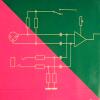 I was accused of “wiggling a little bit” while this CD played in my unaware-ish background. Putting it on with my full attention, I can see why. The overall sound of this is one of repetitive beat club music, easily danceable for the most part, nicely ambient in a lot of cases and noise turned to music start to finish. V.1 is the first in a ambitious series of an promised four per year compilations of various artists who seem to have completely free licence as to how they create their music. With an empahsis on machine sounds, experimental computer tricks and so forth, as promised in the text, I was a prepared for a little more experimentalism. Not that there is anything wrong with the results thus far, I just feel it all sounds a bit standard. The collection of players is impressive: Marumari, Schneider TM, Massimo, Goem, Ultra Milkmaids, and Phonem. Schneider TM does noise up some simple beats into a fuzzy electric Goth dis-symphony. Goem’s sampler is most assuredly disturbing and the highlight of all is Phonem with the darkest of any fax machines and ominous space botherings cooked into minimalized Garage Drum-n-Bass.
I was accused of “wiggling a little bit” while this CD played in my unaware-ish background. Putting it on with my full attention, I can see why. The overall sound of this is one of repetitive beat club music, easily danceable for the most part, nicely ambient in a lot of cases and noise turned to music start to finish. V.1 is the first in a ambitious series of an promised four per year compilations of various artists who seem to have completely free licence as to how they create their music. With an empahsis on machine sounds, experimental computer tricks and so forth, as promised in the text, I was a prepared for a little more experimentalism. Not that there is anything wrong with the results thus far, I just feel it all sounds a bit standard. The collection of players is impressive: Marumari, Schneider TM, Massimo, Goem, Ultra Milkmaids, and Phonem. Schneider TM does noise up some simple beats into a fuzzy electric Goth dis-symphony. Goem’s sampler is most assuredly disturbing and the highlight of all is Phonem with the darkest of any fax machines and ominous space botherings cooked into minimalized Garage Drum-n-Bass.
Philippe Petit did a good job in finding artists who could compliment and mix together on plastic when he assembled this collection. I believe an ongoing series of showcases such as these could promise the dance world a more interesting future. It always seems that the overriding desire of experimental artist is not to become mainstream; however, if these people all get a break into clubland, they may indeed find their niches. If this sort of noise became the convention, all dancers would be better off.
-LIlly Novak-
Various – BiP-HOp Generation v.2
Label: BiP-HOp Format: CD
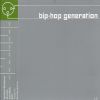 This is the second in BiP-HOp‘s series of international compilations of glitches and blips, and very good glitches and blips they are. v.2 contains music by six different artists from six different countries, whose Minimalist techno and Musique Concrète mix together in ambient loops and Electro corruptions.:
This is the second in BiP-HOp‘s series of international compilations of glitches and blips, and very good glitches and blips they are. v.2 contains music by six different artists from six different countries, whose Minimalist techno and Musique Concrète mix together in ambient loops and Electro corruptions.:
- Bernhard Fleischmann (Austria)
- Arovane (Germany)
- Warmdesk (USA)
- Köhn (Belgium)
- Wang Inc. (Italy)
- Laurent Pernice (France)
Bernhard Fleischmann’s acoustic/digital squeals sit comfortably on top of dreamy avant-Pop melodies. The single track by Arovane, “Uwe Zohn”, is a delicate texture of analogue melody and static rhythms. William Selman, AKA Warmdesk, provides some pulsating noise Techno, a mixture of thumping beats and glitched interference. At present he is working on an album of Musique Concrète based on public transportation. Köhn’s Jürgen De Blonde has contributed a four-piece short story about Hubert, his landlord. Wang Inc’s tracks are delicate Electronica inspired by NATO disasters in Kosovo or based on the random notation of three notes. Laurent Pernice mixes 4-track tape rendered Musique Concrète with cascading techno rhythms.
So that’s the detailed description of the compilation. BiP-HOp themselves hope to create a document of today’s creative forms of Electronica, which they do very admirably. The artists’ agendas may be different, but the quality is there throughout.
-a.p-
Various – Bip-Hop Generation V.3
Label: Bip-Hop Format: CD
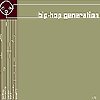 Third in Bip-Hop‘s engaging series of showcases of international electronica brings further developments from six artists to the attention of the discerning masses. Neotropic‘s two tracks mix Dub diversions with reflective swings of virtual brass, big electronic percussion blasts and an ambient sensibilty which doesn’t condescend. Instead, Raz Maslen prefers to make her samples chatter and laugh eerily to the slow, solid clunk of a rhythm which doesn’t go anywhere much but still manages to do so as if with a purpose.
Third in Bip-Hop‘s engaging series of showcases of international electronica brings further developments from six artists to the attention of the discerning masses. Neotropic‘s two tracks mix Dub diversions with reflective swings of virtual brass, big electronic percussion blasts and an ambient sensibilty which doesn’t condescend. Instead, Raz Maslen prefers to make her samples chatter and laugh eerily to the slow, solid clunk of a rhythm which doesn’t go anywhere much but still manages to do so as if with a purpose.
Bovine Life‘s tracks are short sprinkles of chimes and electonic warps, pretty enough until the feedback convinces otherwise. Echoes make beats make buzzing ditties make fragmentary chills on simple filtered analogue themes, then bringing up some thumping low-end pulses or arrhythmic bleep and squarks on “Cabin fever”. Charming, in their own way, and quite warmly so. Pimmon exacts micro-surgey on the innards of whatever the sound sources he favours might once have be, resurrecting them in reversed, glitched and thrummed formats. Progress is obscure yet open; the density is there, occasionally it just lies under the digital surface somewhere. Sometimes “When Heddon Falls” sounds like a Seventies psychedelic trip track cut up and folded on itself, backmasking and all. “Twilled” gets closer and nastier, building the intensity of the spluttering samples to boiling point and back down to a laptop simmer, while “Matthew Flinders” loses itself in the innards of software playing tag with the sounds and never quite making ends meet.
There’s a deep-down love of linear beat programming evident in “Artificially Amplified Raindrop Deepest Thoughts For Sale” from Zonk’t, and despite the title this one’s a bit of a rhythmic wrencher, doing things with distortion, bleeps and drum machines around the eponymous water globule and sundry echoed effects. Atau Tanaka opts for big swirling sounds, derived from the sampling and processing of images converted to digital information taken by Nobuyoshi Araki for “Bongdage.rmx”. Wherever the sound sources derive from, they end up getting sequenced into a cyberpunk shower of shrill delay effects on a bed of reverbed sample beats. “Sv_vs” scrunches a Prophet synth into unrecognisable shape to similarly digital if more restained effect. Last up is Novel 23, whose music attempts tugs on the heart strings through the application of distended melodies which inspire immediate reference to both Vangelis and Synth Pop, and Autechre back when they were keeping the rhythms vaguely linear.
-Freq1C-
Various – Bip-Hop Generation v.4
Label: Bip-Hop Format: CD
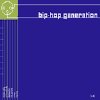 This fourth instalment of “sound adventures, ambient landscapes, creative and melodic musica” draws on artists from France, USA, Australia and the UK to give some impression of what is happening on a global basis. There are inevitable similarities but individual voices begin to emerge after a couple of listens. Mira Calix opens the UK contribution with a track which is hypnotically minimalist. There isn’t much happening but the blend of electronic percussion and the croaky voice that is almost buried in the mix is somehow compelling. At times it made me think of the dry rustlings of insects, at others it was more like a primal strangulated blues.
This fourth instalment of “sound adventures, ambient landscapes, creative and melodic musica” draws on artists from France, USA, Australia and the UK to give some impression of what is happening on a global basis. There are inevitable similarities but individual voices begin to emerge after a couple of listens. Mira Calix opens the UK contribution with a track which is hypnotically minimalist. There isn’t much happening but the blend of electronic percussion and the croaky voice that is almost buried in the mix is somehow compelling. At times it made me think of the dry rustlings of insects, at others it was more like a primal strangulated blues.
Si-cut.db is really Douglas Benford in solo manifestation. The first of his two contributions is a spacey contrast to the Calix with touches of Dub. Keyboards, samples, percussion and some unidentifiable noises are mixed in a piece that seems to float or hover, expanding and contracting, in an exotic universe of its own. His second piece kicks off with a more ‘Funky’ set of beats and the ghost of a slapped electric bass. The percussion pops and rattles around another Dub-ish soundscape and, again, I found it hypnotic. Music you can easily lose yourself in. From the USA, Twine produce a soft-focus sound where small bells collide with objects running up and down the strings of an unnamed instrument. It’s gently melodic and trance-like with occasional jarring instants and the contrast works well. The combination of electronics and conventional rippling guitar creates a constantly shifting sound surface.
New Yorker Datach’i is much harsher with static crunching and maniacal voices surfacing briefly through a dense electronic web. At times, the abrupt changes of direction made me think of certain constructions conjured by Faust. His second piece, “Truax” is less frantic and uses more sparse electronic percussion. It is similarly web-like but the material is finer and more delicate. From France, Vincent’s_Price has a leaning towards Dance in places, with electronic rhythms being prevalent, but its an arid sort of dance. Maybe it would be better heard in the context of a piece of contemporary dance since this is one of the areas he composes for. The final piece comes from Australia’s Cray and somehow combines elements of other tracks on the CD. Using grating static, cut-up samples and threads of dessicated melody he runs the range of Electronica and sets up a twitchy landscape of shrunken and magnified sounds.
Inevitably, some pieces are more memorable than others and offer glimpses into sonic palettes that will be worth watching as they develop. I look forward to the next instalment.
-Paul Donnelly-
Various – Blue Haze: Songs Of Jimi Hendrix
Label: Ruf Format: CD
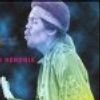 To me, Jimi Hendrix‘s “Angel” is one of those songs that always makes me dread the ending, simply because that means the song’s over and I’d be perfectly happy with a 90-minute version of it. So it’s only fitting that the artist covering “Angel” on this tribute CD is one of my very favorite musicians, Eric Bibb, and his version of the song, performed exclusively on a delicately-miked piano, is just as heartbreakingly beautiful as the original. Bernard Allison‘s version of “Hear My Train Comin'” is good, too – a well-done, subtle, solo steel-string version of the Blues song. These two songs are worth picking up the disc for, but the 14 other songs are fairly unmemorable electric Blues renditions that near-completely obscure the depth of the originals.
To me, Jimi Hendrix‘s “Angel” is one of those songs that always makes me dread the ending, simply because that means the song’s over and I’d be perfectly happy with a 90-minute version of it. So it’s only fitting that the artist covering “Angel” on this tribute CD is one of my very favorite musicians, Eric Bibb, and his version of the song, performed exclusively on a delicately-miked piano, is just as heartbreakingly beautiful as the original. Bernard Allison‘s version of “Hear My Train Comin'” is good, too – a well-done, subtle, solo steel-string version of the Blues song. These two songs are worth picking up the disc for, but the 14 other songs are fairly unmemorable electric Blues renditions that near-completely obscure the depth of the originals.
-Holly Day-
Various – The Bronze Story
Label: Essential Format: 2CD
As indicated by the title this is a musical history of the independent label Bronze Records. It was started towards the end of the Sixties by Gerry Bron, even though he does not really remember exactly when. That is how things were done in those days. When I was first confronted with this double CD-set I recognized how many Metal pioneers had seemed to have graced the history of Bronze, and this notion mixed with the name made me think it was a specialist label, directing their attention to a specific genre of music, like a Seventies Wax Trax or Earache. I was wrong.
Bronze seems to have been a dumping ground for anything that wouldn’t fit into the mainstream in the Seventies and early Eighties. So we are confronted with a maddening eclecticism from the second rate, Neil Young-ish crooning of McGuiness Flint, to the dull Prog fusion of Paladin and Mike Gibbs, to the unique punk of The Damned and onwards – or rather downwards – to the tawdry and outright incapacitated rock(so-called) of Tempest and other wannabe Pop hits that never quite made it. These include the downright puke-a-delic awfulness of Robin George and his song “Heart Line”, complete with early Eighties synth work that would make Starship proud. And there are many more, but let us not get bogged down in the swamps of distaste, it was after all Bronze that brought us Uriah Heep, Angel Witch and the mighty Motörhead.
As far as Metal goes the label was a paragon of virtue, but it was probably due to the fact no one wanted to touch those bands just as they didn’t want to touch Sally Oldfield (another failed Bronze Bossa-nova pop act). But there is also Hawkwind on this collection, which when picked up in the late Seventies by Bron were painfully uncool, but who were also obviously geniuses. And lest we forget, there is also the brilliant symbiosis of Beefheart and Skynyrd that is Juicy Lucy. All in all, the thing to do is to get the original albums and stay clear of this history, cuz it ain’t pretty. Get down to your record shop and get Uriah Heep‘s Look at Yourself, Motörhead’s “Ace of Spades”, Hawkwind’s In Seach Of Space and Angel Witch’s brilliant self titled debut instead. That will do!
-Dag Luterek-
Various– – Chinese Whispers
Label: The Sprawl Imprint Format: CD
A kind of musical game of tag played with a set of samples originating with Stereolab, passed through various remixers’ studios before final re-assemblage at the hands and samplers of Tim Gane and Andy Ramsay, Chinese Whispers brings a certain novel structure to the usual lack of methodology inherent in the remix album. Perhaps optimistically billed as “The remix album with no composer … the track with no name,” each piece is turned over by the next producer in line, starting with Sons Of Silence‘senergeticly-tumbled “Agent XX”, with the surprise element kept up throughout by anonymous onward transfer of the source material .
So much for the theory – the practice reveals a process which is often largely transparent to the listener, an ultimately results in what is basically a rather good compilation, held together by a shifting sense of common origin and progression. Ultramarine make a funky post-House contribution, which segues into Mike Paradinas‘ attenuated Cheese & Bass routine of “Unbutton My Coat”, splattering the melody under intermittent noodly squalls of electronic detritus; Freeform (digi-)dub this into “Chiney Biskers” to Ambient-ish effect, while Slang apply the gradually accreting breakbeats from nought to about forty. It’s Bedouin Ascent who has the wisdom to apply some parallelism to his processing (and yet more echo and delay), plus some variation in the onward rush lest it build too far too fast.
Si Begg picks up the baton, slips in some sarky samples and into bleepy semi-Funk mode before the slow-down taken by Subtropic‘s chilled “Tanje” squarks the low end nicely. It’s around here that the original samples seem to have got thoroughly lost, and T-Power helps the confusion with “A Hamster Is Not Just For Life,” showing what all those years of Junglist paranoia lead to – a highly admirable disrespect for source material or danceability, even if this leads to some Jazzy tendencies which can easily be forgiven by the queasy slipmat treatment given to the beats and resulting pieces. Final say is given to Stereolab, who close the circle in a style which shows a decided influence of occasional collaborators Mouse On Mars – and is no worse for all that – slipping Latin inflections and Mood Music fragments into a surprisingly abrupt closing vignette.
Perhaps Chinese Whispers represents one avenue for the remix album to explore – rather like the themed compilation – where the collaborative is emphasised over the solely interpretative, as with Thurston Moore’s Root project, and as Techno Animal vs. Reality hinted at the start of the year. There’s a lot of single artist mixing going on to variable effect – it sometimes seems that every other record released is a remix – and this sort of more considered effort could go a long way to invigorating a practice in danger of stagnation.
-Freq1C-
Various– Classic Plant
Label: Leaf Format: CD,3LP
Drawing together a selection of tracks from the last three years’-worth of EPs on the Leaf label, Classic Plant certainly contains a few highlights from an impressive back catalogue. The number of artists who have gone on to wider recognition following their Leaf debuts include Boymerang, whose “Autumnal” combines a post-summery bass warmth with a frigid undertow of sustained keyboards, and Witchman, who seems to be operating the Gothic breakbeat franchise from his suitcase of tricks, ably represented by his darkly wasted “4am On Point”. Likewise, The Sons of Silence cover the ground from splattered digi-dub skank of “Silence Go Boom” to the micro- macrocosmic head trip samba of “A Grain of Sand” with aplomb, while the bass-dropping breakbeat track from Luger makes for a speaker-trembling proposition. An old monster dub favourite from Twisted Science, “Cold Fusion”, presents a pleasingly fucked-up sensibility, as do Richard Thomas’ skewed jazz ambiences and A Small Good Thing’s smoky, sinister, lounge-noir constructions. Less inspiring are the sub-soulful wails slipped into the otherwise engaging Four Tet offering, which rudely distract from the quality on display here. As label compilations go, Classic Plant is head and shoulders above the average sampler, containing similar levels of gems and rarities as such previous worthies as Blast First’s Nothing Short of a Total War.
-Freq1C-
Various – Clicks + Cuts
Label: Mille Plateaux Format: 2CD,3LP
 Since the groundbreaking emergence of what was once lazily definable as the “Oval sound” – glitched CDs, sound sources processed through sequencer, sampler and soundboard into esoteric, ill-defined fragments of noise – in the mid-Nineties, there has been a steady development in the bitstreamed swatches of muscial and sonic detritus. This is a transitional form of non-linear music composition several stages removed from the mere programmed formulae of MIDI: the bastard child of the breakbeat and the sound loop, super-stratagem of the studio automaton. Clicks + Cuts comes with a handy mini-manifesto outlining its aims, to present “an introduction to the functioning of 21st Century minimalism, the collection of schools of sound to come, the schools of life to follow.” Such assertions may be a tad grandiose, but of course the key word in that sentence is “introduction” – a primer perhaps, a next-gen catalyst for digitized deviance to come.
Since the groundbreaking emergence of what was once lazily definable as the “Oval sound” – glitched CDs, sound sources processed through sequencer, sampler and soundboard into esoteric, ill-defined fragments of noise – in the mid-Nineties, there has been a steady development in the bitstreamed swatches of muscial and sonic detritus. This is a transitional form of non-linear music composition several stages removed from the mere programmed formulae of MIDI: the bastard child of the breakbeat and the sound loop, super-stratagem of the studio automaton. Clicks + Cuts comes with a handy mini-manifesto outlining its aims, to present “an introduction to the functioning of 21st Century minimalism, the collection of schools of sound to come, the schools of life to follow.” Such assertions may be a tad grandiose, but of course the key word in that sentence is “introduction” – a primer perhaps, a next-gen catalyst for digitized deviance to come.
Does it succeed? Yes. Why? Because, however familiar this sort of granularised re-sourcing and regurgitation of the snips and slices, manipulated by the very mouse clicks and buffered cuts of the collection’s title, has become, it still sounds largely fresh, exciting even on occasion. Some of the essential names are here, of course: Pansonic, Pole, SND – and some less obviously known for their abstract collages than their dancefloor destructions – Panacea being the prime example. Many are perhaps more obscure or quietly making names for themselves where it matters – Stilluppsteypa, Kit Clayton, Goem, Ultra-Red – and some perhaps pseudonymous or just as yet unknown in their unfamiliarity: Autopoesies, Vladislav Delay, All. Largely their names and faces are irrelevant, except as markers and pointers waypoints for those drawn into auditioning the compilation as a whole, hallmarks of competence, pointers to patterns ready for extension, and nodes to recognize in future.
Functionally poised between the ambient and the engrossing, on the cusp of experimental and the eerily mental, Clicks + Cuts bubbles, clips, coils and uncoils, grooves even with a dynamic, machined dub sympathy for the pulse beats of more analogue realms. Switchbacked and banked by bass beat particulates for the cruise to fizzing, scratchy meditations, track follows track with the apparently predictable elements of what fervently assumes itself to be of a new, self-titling genre signposting a course subjected to the composite intelligences of humans and the hard-disc, RAM and software capabilities of their cybernetic minions and friends. What does it sound like? The spaces between the databank walls of the shiny digital future which is seemingly back on the broader agenda after its traverse into the dead-end directions of space travel and universally democratic, clinical minimalism. A bitmap played directly into a soundcard and taken as the template for something musically other. It is feedback replayed upon itself, far advanced beyond the primitivist delve into the primal keen of overdriven amplifiers and string on wood of the Post-Rockers (for all its viscerally emotional fascination), layers within layers emerging suffused with the glow of its own possibilities and promise.
-Freq1C-
Various – Clicks & Cuts 2
Label: Mille Plateaux Format: 3CD
 A year on from the scene-shifting definitions of Clicks + Cuts, and already that compilation has had the accolade of being used as the handy catch-all term for a sound (or is it the other way around…?), joining the glitch as the rapidly evolving term de jour of Twentifirst Century software music. Sounds largely taken not only out of context bu time and place, run through a bundle of exponential programmes, plug-ins and filters emerge with a curious warmth. Slowly the mechanistic worlds of sequencer and quantising have come under the spell of fractal processing, micro-surgery conducted on music, texture and amplified bitstreams.
A year on from the scene-shifting definitions of Clicks + Cuts, and already that compilation has had the accolade of being used as the handy catch-all term for a sound (or is it the other way around…?), joining the glitch as the rapidly evolving term de jour of Twentifirst Century software music. Sounds largely taken not only out of context bu time and place, run through a bundle of exponential programmes, plug-ins and filters emerge with a curious warmth. Slowly the mechanistic worlds of sequencer and quantising have come under the spell of fractal processing, micro-surgery conducted on music, texture and amplified bitstreams.
Now the discs are three, as most of the artists who contributed to volume one return to the series, so too are newer arrivals, well-established, alter-egos or otherwise: Cyclo, Geeez’N’Gosh, M2, Auch, Full Swing, Taylor Dupree, Fennesz, Mikael Stavöstrand, Clicks & Cuts 2 easily becomes a who’s who of the glitch circuit, and the comparisons and contrasts are there to be made between artists and sounds. There are so many though – 36 tracks in all – that dedicated individual listening can soon become subsumed in the ebb and flow of styles. Deracination is the name of the game, as HipHop, Dub, Techno, House, Ambient, Electronica, Musique Concrét, Electro and as many other styles of sound arrangement merge, fold and are manipulated into a dynamically evolving whole. What stands out too is the forward-looking feel of most pieces; the wheel may not exactly be being re-invented any more, but it is being given a thorough-going rethink.
For once, the feeling that post-everything music and sound design is struggling for a place in the general scheme of history (remember that?) is assuaged by this collection. Processes are being still worked out and have a lot left to offer, but the general sense is of a well-understood set of tools undergoing widespread exploration. Of course, the downside is that the eerie factors once engendered by unfamiliarity have receded; clicky-cutty glitches are not just on the verge of accessibilty, but heading off in (admittedly mostly leftfield) mainstream directions as may perhaps be evinced by Björk‘s choice of compilation contributors Matmos as her tour band for 2001.
Electronic music has upgraded itself again; the alpha and beta test stages of v.9-10 (v.11 perhaps?) are largely understood; the bugs may not be fixable as such – thay are after all a major component of the sound – but the current edition are less likely to crash the entire system. For better or worse, the laptop and their meta-systems music are preparing to take over the world.
-Freq1C-
Various– – Collision Course
Label: Ill/PIAS Format: CD,2LP
Smash and grab time at the Breakbeat-HipHop interface; fourteen tracks of boomshackalacka bass and scuzzy production values from several sides of the Atlantic, Baltic and a few other seas. Noisy rowdies like Biomuse, Patric Catani and 2nd Gen rub shoulders with the effervescent Raggabastardisations of DJ Scud & Nomex – whose “Total Destruction” gives as good a kicking to the vocalist-drum machine pairing as has been heard in a good while – and so much the better, especially when inviting the chastisement of Neo-Nazis, courtesy of Alec Empire‘s chaotic reading of Ice‘s “Trapped in 3D”.
The twisting rewind, the frantic (former) hihats, the snatched and garbled vocals of toasters or record-samplees – and the all-encompassing BASS – make Collision Course not just an apposite title, but a statement of intent on occasion. Where would the world be without Fever to get queasily ill with the beat? How can the enveloping low-end of Elastic Horizons be denied without industrial-strenght earplugs or a short yank of the power cable? Imagine driving down the idealized-version of the Euston Road with this loaded in the boot-speakers, fuelled on a musical amphetamine rush… and too many years of hyperspeed virtual car stunts (or digital Wing Chun in Bomb 20‘s case) – and wait for the impact, as whatever else it may be, this collection isn’t one to encourage limitation or safety.
Drums and bass, bass and synths, samplers on overdrive – what the producers of this corruptingly synapse-bypassing music seem intent on is a downhill motor-race into the flames, or at least a shot in the head from a grassy knoll. As a fragment (some original to the collection, some not) of the vast selection of such material proliferating out on the fringes and seeping into the (increasingly less relevant) middle ground where the Funk mashes up to the Industrial and as much Technoid noise as you can eat, this album makes for a half-mindless, arse-wobbling excuse to fall just as close as required to the edge; or even right over the top of the world, Ma…
Various – Copier Collider
Label: Quatermass/Sub Rosa Format: 2CD
Wherein a sound bank is established by one of The Young Gods as La Batie Festival and several individuals make withdrawals and deposits.
Scanner comes out of the corner with very adept typing and where are the cheers? Whither goeth the “live sound”? It’s slightly reminiscent of the letter sent to Maximum Rock’n’Roll where the author thanked the Punks for buying the bootleg Misfits CD. Said recording was merely old 7″s played on a boombox to a chorus of drunken, bawdy friends and then remastered. To Rococo Rot further steep the equasion (and in this corner) with the eternal cheep of deep space transmission and the opening of a package of Tang. Their reflective, meditative tones hearken back to a picking up of rocks on earth which make the moon glow silver. Bump and Grind – do just that. Of course, as there are 360 degrees in a circle (and even more in an oven) – so, too, are there as many ways to describe the movement. It’s upbeat and beat-up. Reversal of coin and the train is entering the station…
David Shea rides the graviton rainbow from poor Barugon‘s back, through the aviary and down amongst the primordial soap. Lathering in whisltes, he nod-nods the beat into curlicued existence, slap slap slap slap. Rehberg and Bauer shuffle their scratches through the fleshy bond that has by now no doubt formed between them after so many releases. Tubular whorls of sound stretch, totally awesome, from their computer world and what food was served at La Batie? What fueled part or all of this? Extra sound ticks at the imagination and bursts free as a question.
Second CD-ed DJ Olive herds a crowd of crows across the devotional pipe organ/acetylene torch combo. They disperse – thoughts of Graeme Revell drummed into their heads. The scratches are slowed down to a bacterial consistency, flitting here and that way like the orgone energy you see in the very blankness of this page. It ends(?) with the screaming of the jingle-lilies. Kreidler delves into that sambaesque underworld, drying out a bottle of loneliness. It is as thought you’ve waited in the car for the bomb to explode and your wristwatch beats louder than your heart. Yes, YOU. The snapping of the timing mechanism; the hiss of the fuse. A narrowness edges on, into the eardrums. A ghasp and the loop of sirens – faint contents under pressure? And no sound has blossomed up that sounds like any other from the sound bank; the mother box.
Vincent Haenni plucks the umlaut from his name and punches holes into a stainless steel pan to fit them. After this, the tension crescendoes until until until the bass and popping locks onto the speakers. The explosion of the previous comments knocks pipes to the pavement periodically and the rain begins to fall. Finally – on to Stock, Hausen and Walkman. These emperors of A.D.D add carnal knowledge of anarchy (the nice, apolitical kind) into the bank, replacing the notes with portraits by Boggs and is this why there’s no group that follows them on this copulation? They drop sonic stalactites onto stalagmites of sound, so turvy-topsy is the pressured process. In the end, they refrain from trying to get the car keys they’ve dropped in the lava, because hey, man – they’re gone.
-David Cotner-
Various– Compact Disc Volume 4
Label: Ladomat 2000 Format: CD
They`ve done it again. The saga continues, here`s another Ladomat to bring back the colour to your faded music collection. Once more they bring you some rather nice hand crafted German House garments. Needless to say, House wasn’t the only thing Ladomat and the artists on this CD put into the wash. Electro, Funk, and individual experiments were put in there too, their colours ran in the best possible way.
The problem with House, and dance music generally, is that its getting rather conservative. It all sounds the same, and it sticks to the tried and tested formulas. But the music is banging and the dance floors are still banging too. After all, people on the dance floor want music they can dance to. You can dance to the music on this CD, believe me. Its more groovesome and funky than a hundred of last year’s floor fillers put together. And best of all, its just as good to listen to on a Sunday afternoon when you’re cooking lunch. Yes, Ladomat have brought us a collection of artists who make good music in its own right, not just because you want to strut ya thang.
I could go on at length about all the tracks, churning out wild metaphors `til the cows come home. They’re all good, they all have their own character unlike many dancey compilations: where track follows track with little discernable difference. I`ll just stick to a few examples though. Some familiar names to Freq readers are here: the prodigious Arj Snoek and Forever Sweet.
Initially, I wasn’t too fond of the Justus Kohncke Remix of Forever Sweet`s “Don’t Speak”, as it’s a remake of Abba‘s “The Winner Takes It All”. All the hype surrounding the Abba revival mystifies me. I`m glad of the second look at this track, though. Its grown on me. Its dreamy and drifts in and out, the lyrics just happen to come from an Abba song. This is by no means a revivalist carbon copy. In retrospect I`ve hit the mental undo button on my original run down review. Popacid‘s “Bonny” starts off the compilation. It’s laid-back House that blends into 303 Techno very well. Whirlpool Productions` “From: Disco To: Disco” is superb. A synth processed voice starts off the mantra:
“From: Disco To: Disco
From: Disco To: Disco
From: Everybody
From: Everybody”
James Brown would be proud – this tune is just so damm funky in its own weird geeky, off the wall way. I love it. Egoexpress‘ “Telefunken” continues the strange Electro. Egoexpress are more on the side of Hip-Hop sampladelic Funk. Grab James Brown and stuff him a bank of filters. All in all, this is a great compilation. Why? Go back to the start of this review and read it again.
-Alaric Pether-
Various – Counterintelligence
Label: ECR / SPV Format: CD
Dandy emerges with a subtley whooshing hiss. The channel is changed and static rules the roost for a short while. Bells distort into ripples heaving into crackles. The seamless transition leads Aube to his lead, or some other kind of metal; it is not specified. Tones pool to their heights, but slowly, slowly. Rhythms intercede and the ghost of improvisation hovers well above, ending in a clear tap tap tap. Kreidler‘s rhythms are slightly more conventional – helicopters in the background and the drum beat behind the zowies with the bass as a strong horse, flowing into the fast Motorik of Newt, clap clap clap. It is as if zippers are racing down a fabricsoaked raceway and the bottles whistle from the bleachers. The music of a drive down a deserted downtown that is not as lovely as our Lulu once painted it.
Voltaic sneaks in on databitten skis, slaloming down the course in seamless energy – the agony of the feet? The flange carries the sounds up to separate parts of sky, and back again. Converter rides in on the wind of the moan of exertion, grainy and sweaty as that may seem, forming a cloud of intention. “Only you can kill the brain”. A quote. And grainy beats decapitate, left and right and back again. The hair of the dog whips around and bites down hard. It is not for nothing that this piece is called “Denogginizer”. Monolith carries in waves of rougher statics and places them on the table. Contemplative. Sonar‘s engine seeks and seeks, idling and ready for the rhythmic race through all time. Pail‘s synthesizers spill out a rainbow of beats, the metallic ring caught in the hurricane and swept up beyond sight.
Mimetic Field hides a woman’s voice deep within, speaking from beneath the grassline and up through the fog that expands and contracts at each of her breaths. The mist vanishes at the daybreak of the breakcore beats. Si-[cut].db, whose phrasing of name changes more often than his tempoes, brings in a gentle meditation on the Beat and its attendant chilluns – a fine respite and repose. Haujobb? It’s reasonably mild-tempered and if there is such a thing as hot-air-balloon-morning music, it has arrived. Nude softly pushes into view a whispered woman, and then the hectic beats flood in. Is it this way – the whispers of a woman and the crackling beats – juxtaposed for explicit purpose? Bit-Tonic starts the slow, langorous crawl from the amniotic fluid swirling about her, and up into this world, shedding the carapace and all those little pops and zings that it entails…
-David Cotner-
Various– Crippled Champions – The Crippled Bargain
Label: Crippled Dick Hot Wax Format: CD
In which Crippled Dick Hot Wax showcase their current roster of Sixties (mostly Porn-related) sountracks and Nineties noise. Divided betewwn the Soundtrack Generation and the Young Nerds Generation, the first category naturally includes a track from their most infamous release, Hübler and Schwab’s swinging score for Vampyros Lesbos. Thoughout the Sixties half, the key word does seem to be be swing – with brass section, Hammond and walking bass, with sitar, synth and drum, across Europe’s seamier soundtracks to kitschadelic action films whose production values are those of Spaghetti Westerns, with music to match.
The pieces collected here are fine examples of the genre, far more explosively raunchy than the tamer (though no less engaging) Sound Gallery series. Virtuoso works of hyperdelic banality, there hasn’t been much pop music of this intensity available until the recent emergence of Japanese groups on the Western consciousness in recent years, a link which is made less tenuous by Ubaldo Continello’s scatologically funky “Shit Sushi”, which is about the most bizzarre track here, a disco extravaganza which simultaneously boggles the mind and turns the stomach.
The Nineties collection is less obscene, but no less strange, collecting tracks from recent releases by the likes of Earthlings, Dandruff Deluxe and Lydia Lunch. Jonathan Fire*eater provides a rocking “Search For Cherry Red”, which is about the best of the rest, telling the tale of switchblades, lost loves and motel rooms to the accompanying swirl of organ and rhythm section in a direct continuation of the mood of the Sixties low-rent thriller soundtracks of the first part of the collection. Similarly The Valentine 6 mix bold sax and energetic R&B thrash up in sleazy crooner style, but by the time Plainfield, H.Oilers and Bloodburger BC kick in, the mood has gone decidedly arsequake Noisecore speed thrash, even if the latter bung in a sitar among the distorted guitars. Collaboration of the year must go to Marianne Faithfull and Oxbow, who take Rhythm & Blues into rasping territory with aplomb.
Crippled Dick are genuine eccentrics in a world gone slightly off-kilter, and this collection showcases not only their commitment to re-releasing some of the strangest music of an over-revered decade, but the more unfathomably unfashionable contemporary groups who quite possilbly couldn’t have found a better home anywhere else.
-Antron S. Meister-
Various– Death Garage /Kata Jungle
Label: Katasonix Format: 12″
Katasonix‘ debut release is a collection of some of their roster in various remix combinations, mashed up into sides defined very loosely by the genres they aim to corrupt. The Death Garage side dumps XXignal‘s “Anticlimax (Inhumans Moreerotic Female Orgasm Analog Mix)” straight off as a clattery dose of moans and pumping beats which make a mockery of a genre which is itself already quite aware of it’s own limitations – but is nonetheless on the darkside of the neo-Disco force. As for Bobby Diablo, he Meets The Inhumans Uptown to produce the churningly off-rhythmic “Diabolique,” bringing some sub-Speed Garage rewinds, dropout bass and an edgy skunked-out feel into the Illbient equation for good measure.
Stelco‘s “Off The Rails (Pandemonic Katatense mix)” is an even more paranoid track – taking its time to get going with the spookily restrained breakbeat assault, and biding its time with some ominously tingling trebly bits in the interim. Not some much a dancefloor piece as one for the spine-chill out area. Kode9 complete the descent into psychotropic unease with the curiously unfunky sprays of hypertrophied snares and thoroughly mangled bass splurges of “Katak:heatseeker” (Intercept Desertfox remix),” which wraps up the EP in misanthropic hammer-drill & bass style.
Contact Katasonix for ordering details.
-Freq2D-
Various– – Deutscher Funk No. 02
Label: Caipirinha Format: CD
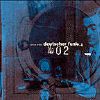 Thirteen tracks of Germanic Electronica from the likes of Tarwater, the liquid machinations of Lithops (AKA Jan Werner of Mouse On Mars), Holosud and others equally well-known but in various collaborative guises, none of which are exclusive to this compilation, which is selected by Burnt Friedman, (AKA Nonplace Urban Field) and also appearing here with Atom Heart as Flanger for their scurrying, springy, and slightly faceless “Music To Begin With Part 2”. To add to the interlinked feel of a community at work, Atom Heart also appears in Naturalist guise with another slice of attenuated bass-heavy, post-Jazz-Funktronica, while Holusud is of course Cologne’s very own Fx Randomitz and Schlammpeitziger in busy mid-range mode.
Thirteen tracks of Germanic Electronica from the likes of Tarwater, the liquid machinations of Lithops (AKA Jan Werner of Mouse On Mars), Holosud and others equally well-known but in various collaborative guises, none of which are exclusive to this compilation, which is selected by Burnt Friedman, (AKA Nonplace Urban Field) and also appearing here with Atom Heart as Flanger for their scurrying, springy, and slightly faceless “Music To Begin With Part 2”. To add to the interlinked feel of a community at work, Atom Heart also appears in Naturalist guise with another slice of attenuated bass-heavy, post-Jazz-Funktronica, while Holusud is of course Cologne’s very own Fx Randomitz and Schlammpeitziger in busy mid-range mode.
Jazzanova‘s “Caravelle” opens up the CD in typically exuberent style, with their furiously rollicking Jazzy breaks tumbling over Bossanova rhythms in collision with some decidedly Housey grooves, which is all very nice, but not a patch on the deliciously warped “Overlooking Is” by Subtle Tease (Justus Koehnke of Whirlpool Productions and Kai Althoff of Workshop). This is one of the more slyly insiduous little grooves around, travelling on an effective base of a simple bassline and wobbling main loop (apparently sampled from a suitcase), but with some seriously skewed improvised lyrics (in English) and samples on top – this one is not only very odd, but makes tracking down the The Goings Of An Offer album it is taken from essential.
In fact, Lamé Gold‘s interpretation of “Heartbreak Hotel” is a little peculiar too; electronic strings and strained vocals combine in a downbeat TripHop style which wrenches every last melancholic drop from the Rockitschmeister’s old standard to quite good effect. The odd lyrical theme continues with Tarwater’s rather marvellous “No More Extra Time” from their excellent album Silur, while string samples also seem to be be popular choices alongside the electric pianos and rewound snares, cropping up on Wunder‘s elegantly tea-dancing (with two lumps) track “Noitz’ Cacao”, alongside Felix Kubin‘s slightly cheesy poppings and whirrings on “Bruder Luzifer”, and at various points throughout.
Harald Ziegler and Frank Schueltge make a fascinating polyrhythmia from a selection of toys, naturally bringing to mind Nurse With Wound‘s similar tinkerings, with equally amusing/ominous results, and it’s nice to hear something again from Asmus Tietchens (adopting the persona of Hematic Sunsets) with an extract from Music From The Aroma Club, which is quite different from his usual concerns with more abstract soundscapes, showing a predelicition for brass samples and rather sprightly grooves. In all, Deutscher Funk No. 02 provides plenty of samples of the burgeoning German electronica scene, though it would have been nice to hear some exclusive tracks, and will take a reasonable tolerance of neo-Jazz Funk to enjoy all the pieces on offer.
-Freq1C-
Various – Dope And Glory : Reefer Songs From The Thirties & Forties
Label: Trikont US Format: CD
Anyone who still thinks the Sixties were the great dope era should have a listen to this. Fifty tracks which unashamedly celebrate the weed and, in most cases, make no attempt to disguise the subject. OK, maybe “Spinach Song” could just be about the stuff that Popeye used but Julia Lee & Her Boyfriends‘ spirited Jive leaves you in no doubt which greens are on offer here. Some great trumpet and sax too.
Titles like “I’m Gonna Get High”, “Weed Smokers Dream” and “Save The Roach For Me” don’t even pretend to be ambiguous and Tampa Red delivers the first in that list like he means it while The Chicago Five kick along behind him. Fats Waller had a prodigious appetite for many things and on “Vipers Drag” he sleazes his way through a dream about “…a reefer 5 feet long”. He sounds as though he’s having a good time anyway. The song appears elsewhere too as “If You’re A Viper”, though with out Fats’ dopey Scat. The Meltones‘ crooning makes “Mary Jane” seem like an innocent song about the girl next door who is “…just the kind you could take home to mother” but they also remind us how “stunning how cunning this girly can be”. Less innocent, perhaps, is “Sweet Marihuana Brown”, whose dangerous allure is captured in lyrics like “Every time you take her out/she’s bound to take you in”. Little devil.
Some songs highlight the reefer lover’s struggle with the law. Imagine their chagrin when “The `G’ Man Got The `T’ Man”. The song is still delivered with verve by the unrepentant Cee Pee Johnson & Band. There would be other `connections’ who could step in and supply the `jive’ after all. `Jive’ “this modern treat makes life complete” is celebrated by the fact that “Stuff Is Here” and that “The Man From Harlem” really could cheer up the gloomiest gathering. Other herbally refreshed characters like “Reefer Man” and “Dopey Joe” flit in to deliver their goods then vanish. Most of the songs are celebratory but a few register the need to escape from grim reality. “Knockin’ Myself Out” is featured three times and each woman’s voice is desperate. Take your pick from Yack Taylor, Lil Green or Jean Brady. Larry Adler‘s lugubrious “Smoking Reefers” also suggests that dope is only “to get beyond the misery” while Jazz Gillum warns about his “Reefer Headed Woman”.
Of course you can just enjoy some of the music. “All Teeed Up” and “Golden Leaf Strut” don’t need words. Marvel at how the surface noise keep perfect time on the first track. Then listen to the superb New Orleans Jazz circa 1925 of the second track. And while you listen there’s an informative booklet that tells you something of the lives and times of reefers and those who championed them. Whether it comes to a canablis café near you or is supplied direct, Dope And Glory is a thoroughly life enhancing experience.
-Paul Donnelly-
Various– Dreamscape Vol. 1 – 12 Old Skool Classics
Label: ESP Promotions Format: 3LP
What ever happened to Hardcore? At some point after the schism with Jungle Hardcore became this abomination cross between the music from Play School and Gabba, in my opinion most of it’s throwaway shit. Dreamscape tell us: “Over the past year we have noticed an ever increasing popularity in Old Skool/Classic Arenas . .” This triple vinyl set (yay!) is a fat slab of just that . . . blistering breakbeats, spazzy rave synths, and sped up stolen rap samples. In short it rocks like a mother fucker.
For me the classics have to be DJ Solo, DJ Red Alert & Mike Slammer – “In Effect”, and Manix. I could become very self-indulgent and unobjective about these tracks if given the chance. Another thing I love about this record is the diveristy, it`s geared towards DJs and you could have hours of fun with this slab of vinyl and a set of decks. Obviously it adds plenty of gems to an Old Skool set, but listen to the tracks – DJ Solo`s “Darkage” would sit very well with a serious Jungle set, and at a squeeze I think some of the tracks could fit comfotably with a tough breaky House/Garage set (not least because House and Garage have caught up with the Old Skool tempo.) Great record, the only thing that worries me is its availability. It think Dreamscape may have released a record that suffers the problem they wanted to counter: rarity of the tracks. This is a limited edition. Of course, all this means is that you might have trouble getting your hands on it, but once you have don`t let go of the fucker!
– Alaric Pether –
Various – Drum And Bass: The Collection
Label: Classic Pictures Format: 2CD+DVD (PAL only)
 There’s certainly a lot of Drum & Bass in this collection, with a substantial selection on the DVD while the two CDs stacked onto the spindle contain the same tracks as on the video disc, with a load more for good measure on top. While the merits or otherwise (never mind longevity) of including The Knowledge magazine’s Drum & Bass Awards 2001 as presented by Goldie are not only debatable but downright questionable, the video selection has some entertaining highlights of long-term value. However, one of these isn’t Kosheen‘s live PA with their track “Suicide”, which embodies all those supposedly impassioned Soulsy-Bluesy vocal clichés while riding along on what is a fairly reasonable breakbeat groove which tears along pleasantly enough at chart-friendly speed.
There’s certainly a lot of Drum & Bass in this collection, with a substantial selection on the DVD while the two CDs stacked onto the spindle contain the same tracks as on the video disc, with a load more for good measure on top. While the merits or otherwise (never mind longevity) of including The Knowledge magazine’s Drum & Bass Awards 2001 as presented by Goldie are not only debatable but downright questionable, the video selection has some entertaining highlights of long-term value. However, one of these isn’t Kosheen‘s live PA with their track “Suicide”, which embodies all those supposedly impassioned Soulsy-Bluesy vocal clichés while riding along on what is a fairly reasonable breakbeat groove which tears along pleasantly enough at chart-friendly speed.
Far better are the “Drum & Bass Mix” sections, where instrumentals and the odd vocal track inluding an icily technoid video to Goldie‘s “Ghost” fuzz, bubble and twitch the beats to footage of happy ravers dancing hard to the squelchy bass boom. What lifts the mixes up into the realms of psychedelic entertainment of the best kind is the way that the otherwise dull images of party crowds are filter through every liquid, gloopy, colourful effect in the digital box of tricks imaginable. As the foreground and background alike are sent shimmering and strobing off into abstraction to the stepping mania, the sure and certain satisfaction lies in knowing that any party, club or space where people are gathered together in chemical and herbal union will appreciate the largely abstract trippy visuals more than a little. Quite highly, in fact, and these sections are quite good for lying back and getting lost into the flickering, pusling textures for relaxation too, especially the intense high-contrast kaleidoscopes which pulse and morph on the “Mix II”.
Similar trickery when applied to the shuffling masses attending the live “Helter Skelter At Sidewinder” club video brings things even further into the realms of MDMA madness, as distended varicoloured throngs spill with fish-eye logic into the bulging figures of DJs working the shivering bass and relentless percussion off the decks and into the fabric of the imagery itself. While the presence of figures in motion largely recognizable as humans doesn’t quite have the same cybernetic impact as the “Mix” lightshows, the live delerium has its fair share of spasmodic moments. DJ Craze‘s live set has a heavyweight bass and rewinds galore to the yet further dissociated computer versioning of what was probably once a live image. Dominated by shades of grey and colours as often implied as included in the palette, the effect is once again lysergic to the best of its abilities. When the MCs get all active calling on the whistle crew to blow their horns for a sudden return to straightforward documentary footage, it’s an odd intrusion of representative normality in the beginning of “Mix III”, but once again everything disappears into a welter of retina-jarring strobes and solarized club scenes. Abnormal unreality resumes it’s cyberfunkadelic course to the churn and skip of fragmented beats and throbbing low end of Dark Spirit‘s somewhat Tranceish “Blessed Be The Funk” accompanied by multiplexed patterns of glow-stick kaleidoscopes, but it’s left to the bleepy circuitous rhythms of “Fever Pitch” from Lights Out to draw a hallucinogenic curtain to the main DVD in a last spasm through colour-washed psychedelic oblivion.
The extras on the DVD are basic – a few hard-to intuitively-navigate profiles of some of the DJs involved (largely redundant) and a nicely-done animated menu front end which does somehow manage to imply there’s more on the disc than there actually is. No matter, as Drum And Bass: The Collection functions rather superbly on the abstract level as a selection of dazzling eye-candy accompanied by some well above-average Drum & Bass of somewhat Ambient tendencies.
The two CDs are pretty much a bonus in this pack, but also do well enough on their own merits. Studio versions of the tracks included on the live video mixes make for variety, and there are some twists and turns to be extracted from the molar-drilling stabs, gurning grooves and hyperspeed beats on offer from the likes of Rough Rider, Kickin Joolz, the sinister Bad Company or Ray Keith and his dynamic segues from smooth to frenetic. There’s plenty of sinister, tearing darkness edging in among the more blissed-out, Jazzy and/or Souled-up stylings (often within the space of the same track), and the mood is mostly hardcore and heavyweight, if not especially full-on innovative. One of the benefits of Drum & Bass as a genre having lost its fifteen minutes of fashionability to the sheen and gleam of UK Garage is that there’s no longer the urge to sell, sell, sell. Instead, the bulk of the artists here plough their rhythmic furrow in the certain knowledge that the future for which the genre promised itself is already here, so they might as well get on with it and make some stomping tunes for the faithful.
-Freq1C-
Various – A Dubber’s Guide
Label: Dubhead Format: CD,LP
 While I was listening to A Dubber’s Guide I was trying to fathom why I enjoy a lot of Dub. I mean you pretty much know what you’re in for; the deconstruction/reconstruction of sound, the stretching out of rhythms, the creation of new textures. Or, as someone put it to me once, “they fuck around with the drums and bass a lot”. OK, so that may not be what these and other artists set out to do. Whatever it is, I find myself coming back to stuff like this. It’s great music to relax to and let it wash over you.
While I was listening to A Dubber’s Guide I was trying to fathom why I enjoy a lot of Dub. I mean you pretty much know what you’re in for; the deconstruction/reconstruction of sound, the stretching out of rhythms, the creation of new textures. Or, as someone put it to me once, “they fuck around with the drums and bass a lot”. OK, so that may not be what these and other artists set out to do. Whatever it is, I find myself coming back to stuff like this. It’s great music to relax to and let it wash over you.
One outfit I’ve heard and enjoyed bits from, The Love Grocer, has a mighty horn section and generate a full sound while Jah Warrior‘s “From The Bottom Of My Heart” is stripped down to skeletal drums with a few keyboard and vocal layers thinly spread over the track. The shifting percussion is given plenty of space to ricochet around in. Goldmaster All Stars occupy ground somewhere between the two, sparse in places but powerful brass beefs it up with a simple but memorable theme. This is what I enjoy most, the blend of stark rhythm with layered melody bringing colour to the construction. But, having said that, the barest of all tracks here, from Etherealites, is a fascinating Dub with percussion way up front and metallic keyboards splashing about deeper in the mix, surfacing occasionally.
There aren’t many vocals on the album but the voice on Headmix is used as another texture, sometimes acappella , shredded and echoing along with the simplest of drum and bass backings. Some brief but melodic brass too. So, a good and varied selection of Dub and, no doubt, a useful shop window for other releases from Dubhead.
-Paul Donnelly-
Various– – Dubhead Volume Four
Label:Shiver Format: CD
Where has all the Digi-Dub gone? Timewas, there were mountains of new releases shivering timbers and vibrating the walls, electro-dub style. The answer is of course, back to the underground of clubs and festivals – where would a British summer (no matter how grey) be without a collection of trucks and tents in an East London field, gently vibrating with the earthquake bass of the regular sound systems and the throb of Trance Techno?
For the dubplates required for the sound system, look no further that this compilation. Mixing up the digital roots in a (mostly) familiar sample-heavy way are the likes of Dub Organiser‘s Classical-dropping skank, Armagideon‘s “Spontaneous Combustion” – which throws in a beautifully sliding digital bass with a stomping stepper’s rhythm – or the Basque Dub Foundation with their light confection of sparkling echoes and good old-fashioned analogue bassline; and this is just the first three tracks.
Each following track delivers little in the way of surprise or astounding invention. Instead there is the uplifting chant of Jah Free‘s thoroughly enjoyable “Dub One Another”, the clever echo chamber of Hydroponics’ virtual cut and paste Ska-dub “Here Comes The Judge” or the heavyweight propulsive chug of Drumhead, and none the worse for that. Spliffed out and still managing to be as eclectic as previous editions, Dubhead Volume Four is a far more pleasurable if mainly undemanding celebration of a self-reliant group of producers and artists less dependant on hype and more on delivering the head-nodding goods.
-Antron S. Meister-
Various – Early Modulations:Vintage Volts
Label: Caipirinha Format: CD+book
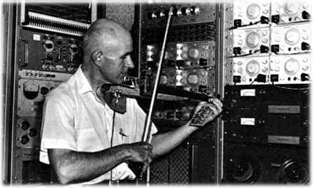 A speech synth singing “Bicycle Built for Two” accompanied by a Bontempi may sound rather cheesy. Why? You may ask. Well imagine that you’d never heard a speech synth before – or even knew that computers could perform speech synthesis. Max Mathews changed all of this, hacking away at Bell Laboratories on a computer that had less memory than your toaster. It becomes a little more impressive, if still rather cheesy.
A speech synth singing “Bicycle Built for Two” accompanied by a Bontempi may sound rather cheesy. Why? You may ask. Well imagine that you’d never heard a speech synth before – or even knew that computers could perform speech synthesis. Max Mathews changed all of this, hacking away at Bell Laboratories on a computer that had less memory than your toaster. It becomes a little more impressive, if still rather cheesy.
“Bicycle Built for Two” is a good introduction to Early Modulations, and while it doesn’t necessarily sit comfortably between the works of John Cage, Iannis Xenakis, and Pierre Schaeffer – but that’s beside the point. This compilation isn’t aiming for total consistency, it’s a sampler of early electronic music – and the first speech synth is quite some landmark. It helped earn Mathews the title of “Father of computer music”. Why else did HAL sing “Bicycle Built for Two” in 2001: A Space Odyssey?
 Early Modulations doesn’t set out to preach to the converted. It doesn’t want to present us with another compilation of modern classical pieces. What it wants to do is bring us the roots of today’s electronic music. It follows on from the Modulations Soundtrack featuring artists such as Derrick May, Donna Summer, and Juan Atkins. It’s a reminder that electronic music didn’t start with Techno, Disco, or even Kraftwerk for that matter.
Early Modulations doesn’t set out to preach to the converted. It doesn’t want to present us with another compilation of modern classical pieces. What it wants to do is bring us the roots of today’s electronic music. It follows on from the Modulations Soundtrack featuring artists such as Derrick May, Donna Summer, and Juan Atkins. It’s a reminder that electronic music didn’t start with Techno, Disco, or even Kraftwerk for that matter.
It may sound like stating the bloody obvious to say that electronic music has roots – but in a room full of people going ballistic to Acid Trance or Jump-up House, how many would necessarily know or care for the roots? The same could be said for the roots of Rock and Roll, so it’s not a unique point. Will Early Modulations succeed in converting the fervent hordes of Acid Trance into roots-aware Electro connoisseurs? Somehow I doubt it. For God’s sake, stick a drum machine through a P.A. and crank it up to full volume – come 4 a.m. people will still go ballistic to it. This album is not a compilation that requires amphetamines to derive any sort of positive appreciation – thankfully.
Early Modulations is a mass of patch cables and screechy tape loops. Ultimately it’s the kind of thing that’s going to appeal to wierdos like myself who are into Autechre and other mutilated Electro masterpieces … people who are likely to know most of the artists anyway. In that sense this collection probably fails in its intentions. Don’t hold your breath waiting for this to kick it large on the dance floor. Early Modulations is not about dance music – not by any definition I know of. Who cares though? It’s nice to have the Electro roots recognised – even if it won’t alter the fact that the charts are still going to be choked up with the likes of Alice DJ. Personally, I think its great. I want a DEC PDP 11, I want to make Mainframe Gabba.
-Kirk Diamond-
Various – Easy Tempo, Volume 10 – End Titles
Label: Easy Tempo Format: CD
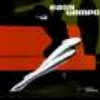 Time, once again, to don dark shades and wonder where to have coffee tonight, where you and she cannot be seen by prying, gossipy eyes. Now, if someone’s eyes are spreading gossip – run, run quickly! You don’t need that kind of supernacheral trouble! Piero Umiliani sets the stage with a jaunty jalopy of sound, bouncing on malefemale vocals ma nah ma nah, and the organ and wire percussion speeds us along on our Vespa – quickly, or the world will end! Either that, or, at the very least, you’ll be fashionably late.
Time, once again, to don dark shades and wonder where to have coffee tonight, where you and she cannot be seen by prying, gossipy eyes. Now, if someone’s eyes are spreading gossip – run, run quickly! You don’t need that kind of supernacheral trouble! Piero Umiliani sets the stage with a jaunty jalopy of sound, bouncing on malefemale vocals ma nah ma nah, and the organ and wire percussion speeds us along on our Vespa – quickly, or the world will end! Either that, or, at the very least, you’ll be fashionably late.
Bruno Nicolai‘s menace of horns juxtaposes with sultry femme vox and strings and do the trains run on time if exposed to this propulsive-yet-lackadaisical music? Ennio Morricone, ah yes, signore. The usual? The usual. Vittorio Paltrinieri‘s “Rhythm of Life” brings together a couple of minutes of lively vocal blah blah blahs, melding into the French chanteusery of Philippe Sarde‘s “On Ce Voit Ce Soir”. Wee wee! Slow dancing before you go out to fight SPECTRE. As you saunter out to your Aston-Martin, Carlo Rustichelli‘s “Swing e Sesso” gives you fortitude la vita sessuale after those spies are histoire. Many soothing harp sounds and police chases abound.
Piero Umiliani, Armando Trovajoli, Carlo Pes, Stelvio Cipriani, Gino Conti, Armando Trovajoli – oh, it’s all too much, too late, too suave and too debonair for my nimble fingers to get out into the world, but if you see this re view, you know that you should acquaint yourself with all Easy Tempo releases – volare volare ichitare!
-David Cotner-
Various – Emre (Dark Matter)
Label: souRce Research Format: CD
 A smattering of shattering, and the volume is checked quicker than a mongoloid goalie at the Stanley Cup. Source Research: how should volume be approached in terms of full appreciation? Define “full” and “appreciation”? Cyclobe‘s baby cries in anticipation of a spoonful of jelly, which itself is attacked by birds and bats. Is a group beholden to a carved-out, personal atmosphere to tote around for the reasonably near future tense? Fingers stab from the fog – an oaken directional finder gesturing many hands toward many paths. A voice kicks the grinding wheel down one less travelled. It’s heard to wheel around, falter and wobbletumwobble like a flipped coin missed.
A smattering of shattering, and the volume is checked quicker than a mongoloid goalie at the Stanley Cup. Source Research: how should volume be approached in terms of full appreciation? Define “full” and “appreciation”? Cyclobe‘s baby cries in anticipation of a spoonful of jelly, which itself is attacked by birds and bats. Is a group beholden to a carved-out, personal atmosphere to tote around for the reasonably near future tense? Fingers stab from the fog – an oaken directional finder gesturing many hands toward many paths. A voice kicks the grinding wheel down one less travelled. It’s heard to wheel around, falter and wobbletumwobble like a flipped coin missed.
Andrew Poppy plays the hesitant automatic bells, encouraging more heady resonance the better they get to know him. Raindrops fall and the scene is that of the female protagonist (heroin) discovering something loathesome but enduring the indignity of having seen it from afar. COH turns the tuner on his netmork, moving from station to station. Has he found the apocryphal dial? A hum suppurates the speakers. Shazbat. And there are few places left on earth where one can escape the sound of a motor. The dial fractures into a miniature sun with countless solar flares radiating eternally outward, infiltrating even telephone tones…
Leif Elggren joins souRce research with a garbled word and a sweep of sound. The uttered mutterings hang softly in the air, made of sand – a smile that gently sifts itself to earth. Angel? A passage erupts – which should be reprinted at some point, or stamped. I’m glad the powers-that-be got tired of nuclear winter, because it sure hasn’t shown up in the ‘paper lately. Coil‘s aura breaks as John Balance falls into the water. The slow fracture of sound that ensues – interpretation of falling? Slipping? Breaking? A synthesis? Bells pool around the motion of all three; a slow motion it is. “It’s going to rain…” – a Fortean time in the old town tonight?
Ovum divides his sound – no matter how small – over 15 tracks. How Swede it is. The spiralling wind slices a statue from the shadows, hectoring the roughewn edges away and continuing, ever-grating, vanishing from whence it came. souRce research ends this world on a palindromic note, and beyond that, there just isn’t that much more to say…
-David Cotner-
Various – Errorcycle
Label: Throat Format: CD
“Win/Mac Datatrack” – or so it is written. And inside such a lovely transparent wallet! The shortcomings of the CD-R can sometimes be overlooked due to really nice packaging. Memo to myself… cdt sends a sam:o:gram. It melts into the next piece, by Svstriate. Prepared in shivers and sizzles, in anticipation of the time when sounds last for days and days instead of mere compilative moments. Wipeout. It is as if the sounds of the crash are being experienced in slow flowmotion – faraway, so close? Iot whips the speakers into the airline frenzy, testing the tweeters in such a way as to hide the source but dazzle with crackles and thrum. What may be even more surprising than the sounds used – are the intervals of time in which they EXIST.
Wolfgang Rottger‘s “Burnt Out Carousel” pulses, reflections in the mirrors directly beside the show-ponies. Speeding, slowing, telling the story of the title in a very peripheral way. How deeply do memories inform soundworks, even so solitary as these? Musical Nature pulls its sounds and voices (?) slowly from some other point in time – and it seems that the focus of these minimalist works is not necessarily “less”, but “more”. Their durations. How long does it “last”? A rhythm piece knits the sounds from that time – together, but in what direction? “Static Conditioning”? Rather.
C.M. de Giere breathes that fire of circular motion. Apparently there are four ways to describe sounds but may motion be the fifth? I’ll take it, in any case. ABF vs. IST OP conduct a rhythm study, which dissolves into a match between this timbre and that bloo. What cycle of erorr moves in here? It solemns into the onward crackle of Drizdial; perhaps this is all one elaborate peacock waving of styles? Of one person? It is unclear – mysterious as the “Htirdadcekn” that winds everything up…or down…
Remarkably remarkable, et cetera.
-David Cotner-
Various – Extreme Music From Women
Label: Susan Lawly Format: CD
The way to defuse a loaded situation is to see that it is not loaded – just filled with a different substance. Rosemary Malign creates a vibrating reflection in amber that will last and melt and be distilled. There is something writhing inside it that was outside all along but as in most amber, the light plays tricks so that there are twelve ways to pronounce the suffix “-ough”. Lisa and Naomi Tocatly move through their sounds in such a way that the old clawfisted bathtub is scraped of older baths and the resulting cleanliness is viewed as through a diamond. Dolores Dewberry speaks a paragraph 64 as the twitters of Kurt Schwitters range their ways through the calm and multilayered meanings of the past that inevitably emerge from the numbering of a paragraph. Candi Nook hafts her sounds through a television set and speaks to the broadcast, several of them, several million of them. All twisting and curling and hafting themselves, much as the sounds are imprinted into a subconscious and this is why one fails to recall the name of the bully from fourth form but why another remembers that Steven Stapleton played live with Whitehouse at one time.
Annabel Lee brings forth the wolves from another place, which could be grounds for grievous slander if revealed. Mira Calix pulses several voices and windings and balls them into a piece that creeps out as velvetly as it rolled in. Clara Clamp‘s answering maschine moves from one speaker to the next, and is revelation ever properly recorded? Are there things left unsaid that lie coiled in the hiss of cassette tape, no matter how small? And, ultimately, recording devices fail to catalogue those nuances, in the way that is vital and living in the face-to-face confrontation and taste. Debra Petrovitch narrates in dislocation – and how long does rationale go through surreality and freeforming until a beat, a cadence, a pattern is imposed on the action? Where is the portion of the brain that imposes order on chaos? And this, even in the apparent face of entropy; two lines of the = sign are equal until you look closer to see that one is longer, one is shorter – yet both remain straight lines, utterly, for an instant.
Karen Thomas kicks ticks and pops from the speakers as the deepened glare of a rotating pail crumbles through the air, it is so difficult to figure out from whence comes the sound, and deeper still the mystery of the words because how often will I actually speak with this person? Beth Cannery wishes luck with a capital “F” as the treble clef is rent and at least two distinct tones rise their heads, biting towards the pineal glad and the words are clearer, grabbing those tones by their necks and then. Gaya Donadio storms out the thunder – and it oscillates across the space of a room. If the memory of a piece of music resonates, can we say that it gives a space (cf. of a room) resonance itself? What rôles do sound and memory and space play within each other? Maria Moran and the prurient interest – does a conversation immersed in heavy sound make one actually listen more intently? The clouds clear at times, go live in another speaker at others. Fräulein Tost paints a panic as perhaps Rupert writes a rainbow – vastening washes of flange across the canvas that is 2:07, 2:06, 2:05 and onward. Measured. Finite. If one paints with sound, is time the canvas? Wendy van Dusen speaks of dog, saturating and calculating. Much echo, and is this how the dog hears commands, again and again? Is this how the dog tries to speak, barking, again and again? Cat Hope‘s sounds vacillate in time, and something is broken, many times. It is reminiscent of the aural Rorschach test given to inmates in the asylum – repeating words until they become sheer sound, and Neil Hill, we still miss you. Diane Nelson mounts and subsequently dissects an insect. Wings beat and voices inject outwards through the pins impaling them. The final kick of the impulse, and does it really take so many seconds?
I have the gravest regrets that I did not call upon a female colleague to assist me in recording a literalist version for Extreme Music From Women. It would have been so…
-David Cotner-
Various – First Steps
Label: Klangbad Format: CD
 From the label which is home to Faust, First Steps is a sampler which features artists who have gathered to record a variety of left field, often equally unique, music. They are not simply Faust-alikes. In fact none of these bands sound much like their godfathers. Could you imagine them allowing that to happen anyway ? Not, perhaps, unless it was some sort of ironic statement.
From the label which is home to Faust, First Steps is a sampler which features artists who have gathered to record a variety of left field, often equally unique, music. They are not simply Faust-alikes. In fact none of these bands sound much like their godfathers. Could you imagine them allowing that to happen anyway ? Not, perhaps, unless it was some sort of ironic statement.
These artists share a label but have their own identities. Dälek, for example are a trio featuring a rapper of the same name and some turntable manipulation. It is an angry relentless sound but very much shaped by a song structure not the free Industrial noises of Faust. More delicately, S/T create post-Kraftwerk melodies with tinkling keyboards and distant deadpan vocals while Audiac dabble in some the vacant territory created by the silence of Portishead. It is not as disturbing perhaps but the use of strings and Hammond organ creates an unsettling atmosphere. A sense of alienation prevails.
There are some unusual sounds here but perhaps the oddest combination comes from Ole Lukkøye, a band from St. Petersburg. At first I thought they’d been mixing influences from India and somewhere vaguely Nordic. Not easy to categorise but very trance-like with chanting, drones, bells and percussion blended with what must be a brass or wind instrument. They have a very passionate sounding singer too though I’ve no idea what he is being passionate about. Does it matter ? It sounds great. And so do Circle, who, in parts, do reveal some Faustian influence in their use of relentless drumming and swathes of guitar noise that boil and shriek then fade away. Space Rock rather than Krautrock, maybe. They also utilise some gentler atmospheric acoustic guitar on “Northern Sky”, andd apparently they sing in an artificial language too but not on these two tracks.
Finally, solo Faust man Hans Joachim Irmler and the whole band contribute a piece each. The keyboard man constructs a dark suspension of sound, at once liquid and brittle, that swells and ebbs. It is an identifiable sound, a portion amputated from the collective Faust sound, and is part of a solo project. The whole band hammer into “I Can, U 2?” with more of their trademark maniac drumming dominating that mesh of Industrial thrash. There are sketches of keyboard and what sounds like Michael Stoll‘s scraped acoustic bass but, as ever, the whole matters more than the parts and it is an exciting example of their open-ended approach to musical construction.
What I like about this album is the sense of musical diversity and a stubborn drive on the part of the artists to do it their way and see if the listening world catches on and keeps up.
-Paul Donnelly-
Various – 45 Seconds Of:
Label: Simballrec Format: CD
Since this CD is constructed from 99 45-second tracks by 84 artists, it hardly seems worthwhile attempting to assess individual contributions, but a flavour of the disc can be inferred from a few of those involved. A quick scan for familiar names shows Andrew Duke, Chicks On Speed, DJ Spooky, Dntel, Eight Frozen Modules, Hood, Jan Jelinek, Kim Cascone, Leafcutter John, Martin Rev, Pthalocyanine, Rothko, Si-Cut.db, Silver Apples, Soulo, Sutekh Loves Miguel Galperin, Ultra Milkmaids and a host of others, mashed up and mixed into one 78 minute collage.
The meeting of short tracks for short attention spans with the possibilites of either straightforward following the programme by simply pushing “play” and the randomisation option of shuffle settings are available inherently to anyone with a CD player and emphasised in this disc. There is a heightened sense of transience to be found in the jump cuts random play offers. Like The Residents‘ Commercial Album, the CD takes time-constrained, bite-sized portions and offers the possibilty of user intervention while style-hopping at a measured pace.
45 Seconds Of: offers a simultaneous critique of and contribution to post-modern consumerism by reducing every piece to a level start point, then letting the soundscapes, music and noise engage (or not), with guaranteed disposabilty promising novelty without having to reach for the skip button too ofrequently. As such, the effect is akin to regulated channel-surfing, as diverse fragments step in and out of perception with the curious effect of time moving at different speeds, subjective and objective.
-Freq1C-
Various – Dublab Presents: Freeways
Label: Emperor Norton Format: CD
 Presenting a forum for disseminating the underground music of Los Angeles to the world via the internet, Dublab have broadcast DJ and live sets since 1999, and Freeways showcases some of their home-cooked music. It’s appropriate then that Daedelus‘ “A Mashnote” opens with the sound of a computer keyboard tapping out the codes before slinking into a cheerfully bleepy mix of fractured beats and strings, birdsong and absolute mellowness with an ear for off-kilter beats. Likewise, Mia Doi Todd sings about the ones and zero in muti-tracked vocal style, rooted somewhere in a swooping Folky Sixties style and with a heap of vibrato to make the quavering words ride on a chugging rhythm.
Presenting a forum for disseminating the underground music of Los Angeles to the world via the internet, Dublab have broadcast DJ and live sets since 1999, and Freeways showcases some of their home-cooked music. It’s appropriate then that Daedelus‘ “A Mashnote” opens with the sound of a computer keyboard tapping out the codes before slinking into a cheerfully bleepy mix of fractured beats and strings, birdsong and absolute mellowness with an ear for off-kilter beats. Likewise, Mia Doi Todd sings about the ones and zero in muti-tracked vocal style, rooted somewhere in a swooping Folky Sixties style and with a heap of vibrato to make the quavering words ride on a chugging rhythm.
Dntel‘s “If I Don’t Return” repeats the title in a muttered then vocoded voice over a percussive, somewhat ambient breakbeat and slipper theme; John Tejada sets keyboards to similarly mellow chords over a digital Funk tune which is almost to niiiice for words: one for the coffee shop. “Is It Live” from Mannequin Lung continues the groove in soaring style to more repetetive breakbeats, achieving lift off into the fluffy cymbal levitation zone. Yesterday’s New Quintet sample up crackly vinyl and virtual Jazz records to make a cut’n’paste freeform mash of vibraphone and drum rolls which goes nowhere much but does it tastefully enough. Funk is subjected to pretty much the same technique by Divine Styler, with fragmented smoking vocals and organ stabs, sounding sooo West Coast in the process thanks to the digital waves crashing around an airy acoustic guitar figure and some smiley bass bumps.
And so the chilled atmosphere drifts on through the cello and soulfully-stunned R&B vocals of Damon Aaron, though the accompanying glitches crackling around the slow-motion beats add a new twist to the format somewhat reminiscent of similar recent directions explored by His Name Is Alive. Nowhereman does no-one a service by calling a track “Seathrough Dolphin Smile” except inviting New Age comparisons to what is more of a post-Steve Reich piece of unfolding loop and beat geometry, let down by an off-key digital piano figure which sounds so much better when it’s reversed. Ammoncontact do some more of that Jazzy smooching to the electric piano and breakbeat which glides past smoothly with the easy benificence of an electric car; Skull Valley should be much more ominous than they are with a title like “Death Zone Reflection”, which continues the soundtrack feel on the back of a wavering guitar and melodica skimmer to bongo-inflected beats. Finally, Adam Rudolph glides his percussion composition smoothly into the garage for a langorous conclusion with a waft of warm desert air.
-Freq1C-
Various – Fresh Fruit
Label: Lo Recordings Format: 2CD
Kid 606 orchestrates the tuning-up of his “Dandy”. Its tapping and gleaming points a diamond at you. Johannes Fink finds out what the Funk is going on and thereby gets the Funk out by way of organ and snare. His electronic ants enter the machine and gnaw a headnodding arc of panic and q’ul. Hairy Butter (“I like…no, I don’t…” – a Rorschach) enters, on beat-hoisted hands, with some sort of music for driving and driving away the blindness of the setting sun. Thunder and Jazz ensues.
The Remote Viewer idly snaps fingers while tiny organ lines hover in thin air. Another remote viewer, possibly on koto, joins inn. Alternative 3 burns the rhythm deeply into the flange as a gossamer gull melody glides along, guiding it through a concrete jungle of horns, vibes and the occasional voice. And now, Hrvatski gallops across the chromatic scale, horns honk and urge speed like he was supposed to be running from Elm St. Freddy. They Came From the Stars lauds rum, against the versus onslaught of the London Toy Orchestra – wheee! Kaboom, zing, crash and where is onomatopoeia when you need him? Manning the Cheeses International stall at Rective, most likely. Max Tundra brings the peace with a piece of pacemaking known as the club mix. Oddly enough. Runaround? I’ll take Joan Jett, thanks so much! I hereby bring the inaugural meeting of C.A.S.S.D. (Composers Against Soul-Singin’ Divas) to order, however. Order, please!
Ivan Seal and Benedict Drew tapdance into the meeting without so much as a “hello”. With chalk and cuckoo clocks, they rush this way and that. Thank you, gentlemen. Ceephax cultivates his melody in the interstellar tradition and it duets with the pouring of a drink. Much like the Addie Brik/Richard Thomas liquid static sound that follows. The dinging of glass and then drums and stringing; a picking through of possibilities. Cursor Miner – the pop song. A clinking on glass and the imploration to samba with Cursor and/or Miner. Rothko – speech over the drone of strings and the aftertaste of voyeurism. And this is the legacy of teaching? Jean Baptiste‘s pans bang, and strings effervesce. The tweet tone of the triangle. A wobbling and creakiness – soundtrack to the end of a world, or at least, a smaller moon?
The VL-Tone drums hugely through a haze of ancestry and progress. It covers the surrounding memorytime like a quilt of looking-back. It summons an incarnation of times one knows one is cool but can get none to believe it. Leis farts a hornet into compact disc air and there is a video game gamely lurking in all of this. This is not to denigrate farting, however – all hail Mr. Methane, from Manchester UK! ST now with the block – a pleasant pop paladin that your compilation cassettes will love in their final minutes. Santa Dog laps the guitar lying dejectedly outside the Antenna Farm (different group now, keep up keep up!), which lustily regales the open sky with the Frequency (now another group) of a hound in heat. Wobbles and wardles – a shake of the unexpected. C PIJ Obscura picks the guitar back up, wiping off dogslobber in a backward tone. In the heavens above, the stars hesitate before tumbling to a place between the atmosphere and the ground and is it purgatory? Sensum takes the residue from this starsound and boils it down to a simmering sea of delayed voices. Delayed voices – a compilation?
-David Cotner-
Various – Garage Dubs
Label: Free Radical Sound Format: CD,LP
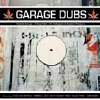 Garage isn’t really my thing. It’s easy to understand why. Garage has something of an image problem. Free Radical Sound sum it up like this: “wandering into Garage land 2001 you could be mistaken into thinking that its all about champagne, cars and the girl next door”. I have this horrible image of Ali G and Gangstas (ending with an a, not an er.)
Garage isn’t really my thing. It’s easy to understand why. Garage has something of an image problem. Free Radical Sound sum it up like this: “wandering into Garage land 2001 you could be mistaken into thinking that its all about champagne, cars and the girl next door”. I have this horrible image of Ali G and Gangstas (ending with an a, not an er.)
So it’s good to see a Garage compilation that owes more to Dub Reggae than to Ali G and doesn’t become obsolete past the age of 14. Garage Dubs comes out of the Garage/Drum & Bass fusion. The 2 Step beats are rough, the bass lines seriously fat, and the tracks seriously lyrical. The classic “Legalise It” by Peter Tosh appears in 2 Step form, veteran junglists like Ratpack add their contributions with tracks like “Clipper”. In another time and place the vocals from this track could have fuelled many an early 90’s Rave anthem, sending hoards of ravers wandering around chanting “whooz got the wheel from me clipper?” – and maybe the same will happen today.
With its blend of Drum & Bass, 2 step, and Reggae, Garage Dubs is a good compilation. You could quite happily sit back and spend the evening … well I wouldn’t be suggesting that you do anything illegal now, would I?
-s5000-
Various – Gems Of Italian Cinema
Label: Amsterdamned Format: CD
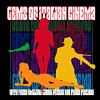 This is an amazing, beautiful collection of soundtrack instrumentals from Italian exploitative cinema of the 1960s through 1970s. Because most of the films that these instrumentals were attached to never reached us in the States, there’s a good chance that not many Americans would have heard any of these highly evocative pieces, or even the composers. Contributors to the disc include Piero Umiliani, whose work instantly evokes scenes of summer beaches and hot city streets; Gianni Ferrio, whose trademark wakka-wakka guitar sound and cheesy electric organ are a standard of porn music; Piero Piccioni, who, unlike many of his contemporaries who jumped on the synth bandwagon , opted to use classical string arrangements and floaty, dreamy soundscapes instead. There’s little doubt (even though I’ve never seen the movies that these were once attached to) that the best part of many of these films was the music, and owning a collection like this is as good as owning a pile of old videos.
This is an amazing, beautiful collection of soundtrack instrumentals from Italian exploitative cinema of the 1960s through 1970s. Because most of the films that these instrumentals were attached to never reached us in the States, there’s a good chance that not many Americans would have heard any of these highly evocative pieces, or even the composers. Contributors to the disc include Piero Umiliani, whose work instantly evokes scenes of summer beaches and hot city streets; Gianni Ferrio, whose trademark wakka-wakka guitar sound and cheesy electric organ are a standard of porn music; Piero Piccioni, who, unlike many of his contemporaries who jumped on the synth bandwagon , opted to use classical string arrangements and floaty, dreamy soundscapes instead. There’s little doubt (even though I’ve never seen the movies that these were once attached to) that the best part of many of these films was the music, and owning a collection like this is as good as owning a pile of old videos.
-Holly Day-
Various – Gothic Industrial Madness
Label: Cleopatra Format: DVD
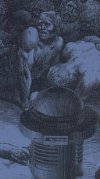 Collecting together videos from Cleopatra‘s late Eighties/early Nineties Industrial Revolution Volumes One and Two and Gothic Industrial Alternative Visuals video tape releases, Gothic Industrial Madness provides three hours of promo clips and excerpts from live recordings. The presentation is simple and straightforward – the only extras are short videographies where available for each band – but it’s a considerable boon to be able to flick forward to, programme or select an individual clip as opposed to all that tedious mucking about with fast forwarding analogue tape. Transfer quality is as good as to be expected from what was tape sourced material in any case.
Collecting together videos from Cleopatra‘s late Eighties/early Nineties Industrial Revolution Volumes One and Two and Gothic Industrial Alternative Visuals video tape releases, Gothic Industrial Madness provides three hours of promo clips and excerpts from live recordings. The presentation is simple and straightforward – the only extras are short videographies where available for each band – but it’s a considerable boon to be able to flick forward to, programme or select an individual clip as opposed to all that tedious mucking about with fast forwarding analogue tape. Transfer quality is as good as to be expected from what was tape sourced material in any case.
With so much footage on hand, there’s something for everyone with a taste for the rather reductive genre titles. The more Industrial/Experimental pieces come from Psychic TV‘s lo-fi droning trip Rock “Catalan” with it’s Dali imagery, and their equally primitivist video for the sunny Pop hit “Godstar”; William S Burroughs reading a suitably sliced and edited “Commissioners Of Sewers” from what appears to be a German TV interview in gruff monochrome style; Chrome‘s grim Eighties vision of Cyberpunk on the underground for “Meet You On The Subway”; Einstürzende Neubauten smashing and screeching through a live version of “Headcleaner”; World War II bombast from Foetus on a great performance of “I’ll Meet You In Poland”the energetic and youthful Throbbing Gristle spanking out “Discipline” before a heaving crowd at their final live action in San Francisco in an excerpt from Mission Of Dead Souls. A strange contribution comes in the shape of the compellingly weird Nik Turner (with sundry guests including Helios Creed) rattling out a suitably deranged version of Bob Calvert‘s “Ejection”, drenched in phasers, feedback and far out synth scribbles to the occasional accompaniment of low-res computer psychedelia.
The preponderence of that era’s brutalist FM keyboard and drum machine followers of Front 242 and Laibach (neither of which make an appearance on the DVD, unfortunately) are represented by the digital riffing and speedy cut ups of Penal Colony and equally grisly spasms form Spahn Ranch, Leæther Strip or the pulverising Cubanate with their hellish Techno stomper “Body Burn”. Electric Hellfire Club have a good line in posing and waving of handguns and satanic imagery in stagey manner to their own brand of doomy Hardbeat, while Frontline Assembly and Clock DVA show just how much fun they could have putting together psychedelic visuals of spiralling CGI layered with jump-cut grime and stark black and white strobe spasms respectively. The funniest promo of the DVD is Die Krupps‘ enertaining one-shot clip for “To The Hilt”, which never fails to provoke amusement thanks to its tongue in cheek (literal) toilet humour and undercutting of pompousness. The two old men foxtrotting are great as well. Their “Fatherland” video is more straightforward piece of charoscuro images and headbanging suited to the stadium Industrial Rock and somewhat obvious anti-Nazi sentiments of the song. Later developments such as Test Dept.’s dive into metal-clattering Techno on “Bang On It” suffer tremendously from their age, with some regrettable MCing offset by their well-developed sense of percussive rhythm, which rather redeems the video in a tranceward spiral of hypnotic beats, industrial imagery and flickering mandalas.
The more Gothic parts of the disc are less capable of redemption, though Killing Joke are at least relatively innovative in their editing and use of fast-cut dollar bill imagery for “Money Is Not God” with a bundle of cash getting torched. However, bands like Rosetta Stone, Mephisto Waltz and Eva O Halo Experience whip up a largely dreary selection of drum machine, chorus pedals and faux-operatic vocals which characterised the dismal dive into self parody or commericialism of the last decade of the century. Just quite how bands with names like Big Electric Cat and Executive Slacks could be taken seriously even if they weren’t the most tedious sort of minor-key MTV Gothery and entirely average road trip Industial/Electro bombast will have to remain a mystery.
Gothic Industrial Madness is well worth it for at least a third of the videos on offer; another third are benignly passable, and the remaining section are easily skipped. Isn’t technology wonderful?
-Linus Tossio-
Various – Hallways: Eleven Musicians And HMSL
Label: Frog Peak Format: CD
Larry Polansky creates piano strains, looking for something. Up and down – but is it a scale? If so, which one? Phil Burk creates an oscillation. Hollow and echoed, warbling in tight and when a mirror is put in front of a mirror, what does it see? It seems to be swallowing its own tail. David Fuqua creates a guitar – from the inside out, and it stops and starts in odd spaces that fall in on themselves – and is it self-examination? Larry Polansky returns to the fore with piano styled of early Rock’n’Roll, which is to say that it comes at both ears from different places and stays relatively stolid. John Bischoff creates a storm of frazzled static hassling each of the speakers. But it is more complex than metaphorical alignment – just as the weather itself is. Now it is something, again, it’s something entirely other.
Polansky, again with the piano that follows in its own footsteps – this time, tentative, and is the instrument a mood-ring of sorts? It would be interesting to know the time span in which his respective pieces were recorded for this compilation. David Rosenboom creates a woodland of sound, with curls and caverns from which extrude the soft and grotty calls of several instruments in conversation. Phil Burk creates the glinting of stars fading in and out of sight – some brown dwarfs; others – black holes. But, again, sounds that are neither here nor there – and that is meant in the cosmological sense. Polansky creates a piano atmosphere that is not to be mist – it crawls like mustard gas, eventually to catch up. Let us now praise all sustain-pedals!
Nick Didkovsky creates a curving slice of guitar and drums, harrowing in its narrowing individuality arrowing along. Straight. And. Carter Scholz creates the sound that moves on water slowly around an airplane crash. Larry Polansky returns again, creating a piece that seems much like what has come before but is this to emphasize how little my ears have been trained as yet? Jeanne Parson creates a piano piece that sounds lovely yet which I cannot notate worth beans. Robert Marsanyi creates a descendant drone, low and gliding in just beneath radar. And UP comes the high pitch! Pink noise, white noise, black noise? Very faintly reminiscent of the stereo test records that are yet to be unearthed from this world’s yard sales. And it’s Larry Polansky, again, creating the piano.
-David Cotner-
Various – Happy Happy Birthday To Me Vol. 2
Label: Happy Happy Birthday To Me Format: CD
 This is an interesting collection of music from the Happy Happy Birthday To Me Records roster – a label I admit I’m not familiar with, but from this collection, it sounds like I should be. Contributions to the collection include tracks from Ross Beach, Scott Spillane (Gerbils, Neutral Milk Hotel), Princeton Reverbs Colonial, and lots more, making 25 tracks in all. Outstanding tracks on here include the surreal, calliope-sounding kazoo-loaded Red Pony Clock‘s “The Day I Became My Lawn,” as well as Dear Nora‘s on-the-edge-and-about-to-jump-off “Up On the Roof,” which is anything anybody ever needs to remember how horrible it is to be just past 18.
This is an interesting collection of music from the Happy Happy Birthday To Me Records roster – a label I admit I’m not familiar with, but from this collection, it sounds like I should be. Contributions to the collection include tracks from Ross Beach, Scott Spillane (Gerbils, Neutral Milk Hotel), Princeton Reverbs Colonial, and lots more, making 25 tracks in all. Outstanding tracks on here include the surreal, calliope-sounding kazoo-loaded Red Pony Clock‘s “The Day I Became My Lawn,” as well as Dear Nora‘s on-the-edge-and-about-to-jump-off “Up On the Roof,” which is anything anybody ever needs to remember how horrible it is to be just past 18.
-Holly Day-
Various – Harcourt
Label: Pehr Format: CD
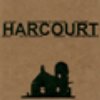 A strange compilation of various new small sounds, from California by way of France. Une: Oldine brings slow, reflective guitar notes and gentle drumming beside, exiting with a whisper into the drone. Un Automne à Lob-Nor sneek in seamlessly behind this, unfurling slowly like a jellyfish and the tap on drums so gently is a heartbeat many hundreds of feet long. Winding a watch swims alongside, watching at odd intervals. Phlegm hawk horns and faintly louder drums, making music with which to gaze out over valleys from high buildings, reflecting and resurrecting. Is slow-fi the next recording rage?
A strange compilation of various new small sounds, from California by way of France. Une: Oldine brings slow, reflective guitar notes and gentle drumming beside, exiting with a whisper into the drone. Un Automne à Lob-Nor sneek in seamlessly behind this, unfurling slowly like a jellyfish and the tap on drums so gently is a heartbeat many hundreds of feet long. Winding a watch swims alongside, watching at odd intervals. Phlegm hawk horns and faintly louder drums, making music with which to gaze out over valleys from high buildings, reflecting and resurrecting. Is slow-fi the next recording rage?
Deux: Aspic‘s “Dam-I-1” shows how the neurons fire in a beaver’s mind as it builds that dam. Dam! Dots and beeps, dots and beeps. For Blue Baboon, it is a rhythmic swirl of signals from the mind of a bacteria, then bacterium, then multi-cellular thing that hiss hisses alive and taps its way across the cloudtops. Darky catches itself in the skipped disc groove and flails its trebly tendrils hither and non in a frantic attempt to be free. The high tones, much like in classical music, are soothing unto soma and the bass notes amble along amicably behind them. Ultra Milkmaids dock in the deep space of oceans and send out their bassy signals along with some skittering and panicked fragments of sound. A slight rattle, and the sounds creep out as their have come in – gently, puzzling and warm…
-David Cotner-
Various – Hate You
Label: V/Vm Test Format: CD, limited LP
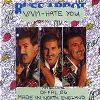 An industry-and media-searing expression and celebration of hatred, this compilation from the vinyl bowels V/Vm Test Recordings comes with the proclaimed intention of “We want to be the worst – The worst around….”. So V/Vm and friends give it their best shot, and guess what? They actually fail to be deserving of the hatred they actively seek.
An industry-and media-searing expression and celebration of hatred, this compilation from the vinyl bowels V/Vm Test Recordings comes with the proclaimed intention of “We want to be the worst – The worst around….”. So V/Vm and friends give it their best shot, and guess what? They actually fail to be deserving of the hatred they actively seek.
The CD edition holds 12 tracks, with four missed off the mini-LP of Hate You; these are Remi Moses‘ “Big Ron”, a needle-jerking cut-up which doesn’t even bother to pretend making itself listenable in the “conventional” sense, battering vocals and beats at ludicrous speeds and through piled-on effects until the walls bleed pure aural horror. A challenge to the noise addict, it’s equalled in intensity by Alien Porno Midgets and their “Mosco^^ Nights”. Here the emphasis is on estrangement, as a what might have been a diva’s voice gets rewarbled and distended queasily into a rolling bellscape which soon becomes nauseous, possibly inducing motion sickness in the right circumstances as it dissolves into ambient slurry. Theer’s a scattershot approach to beat revision on Gai/Jin‘s bouncily devastated “Mod Theme”, as squirming Top Of The Pops 2 cheeriness of Lieutenant Pigeon‘s “Mouldy Old Dough” gets a breakbeat infusion of the demented gunshot and recursive echoing kind. The Caretaker‘s “Reflection” takes a drive-by disturbance ride at ultra-slow speed, oncoiling horripilations through the effects boxes to the point of edgy unease.
So much for the extras: everyone gets “Music Fighter” from Tokyo’s Devil Chan, who takes a Jazz motif to introduce the sound of Judy + Mary‘s shouted/sung Pop harmonies before ripping them into shreds with all the vigour Japanoise can muster until ears and other orifices bleed. But with the groove somehow remains intact among the spasming distortion. Yeah. There are similar eviscerations of a Pop “superstar” as Skkatter attempts a disembowellment of “Hey Mr Dj” in the shape of “Madonna Is A Filthy Slut”. As regurgitative and shot through with rewinds, bleeps and high-density trills and vinyl sweeps as the track is, the sneaking suspicion is that the subject of this apparently disrespectful treatment would probably approve of the results, if only to increase her alleged street cred. Sad, but unfortunately all too likely a prospect.
There’s more rejigging going on on Ray Parker Snr‘s “Ghostbusters”, but not in the expected direction. Insetead, there’s a jaunty air on a series of deeply-delving filters and a flattened melody, which resembles nothing so much as a steam roundabout running on low power. Billy Ray Cyrix does noisy things with hardware on “Achy Breaky Hard Drive (Cracked)”, stomping out a glitch arrhythmia to the hiss and squirm of a beat without much 4/4 repetition to be found intact; Mainpal Inv pours bleeps on tinkles to make a laterally melodic contribution turned from the favourite base material of cheap electronic presets. The results take on a curiously affecting life of their own as the music struggles into some sort of order through a process of accretion. Icon Of Throat examine their environment, play it a piano tune until the hisses bounce off each other under a waft of low strings, and set the tempo down into the gloomy depths before throwing in the redolent screech of metals or circuits or something in electronic distress. The results are oddly moving.
So to the hosts, V/Vm, who top and tail Hate You with an anthem of disgust for DJ Carl Cox (or “Karl Cocks”, as they prefer to name the track) and the title track itself. The former bigs up the House tempo, larges the dancefloor massive, thrills the crowd into Ketamine and bad speed ecstasy through the tried and detested method of aural battery, impure and simple. Dementedly determined rhythms collide with the kind of electronic detritus which creeps out of an overdriven sampler like no other sound, metallic and tastily obscene, just like the trickles of analogue spew which accompany the tune to the bursting point of earbashing repetition which is topped with just enough feedback to make it really irritating. Is it really necessary to state that in this context, “irritating” is a compliment? Precisely the same applies to “Hate You”, a marvellous swarm of floor-sweeping phase, pitch-shift and more-than-excessive delay applied liberally and without let-up to “Hey Jude” for no less than a quarter of an hour. Anyone who sticks through that (or hits the fast forward) is treated to what was probably once Cannon And Ball given the filter-kicking they so thoroughly deserve as the conclusion of this quite occasionally exhilirating dive into naked disgust.
-Antron S. Meister-
<!–nextpage–>
Various – Hmm
Label: Sprawl Imprint Format: CD
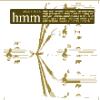 Any album which opens with a speech-synth intoning flatly “Good morning, what a fantastic day” to start a chime’n’kazoo cover of “Morning Has Broken” is only going to make everyone’s life a little bit brighter, especially when the artist responsible is Simon Pyke of the Freeform monniker. The CD in question, The Sprawl club and label’s compilation of hymn-versions may sometimes provoke as much chin-stroking appreciation (a good thing in this case) as its title may invite, but it also has its fair share of laughs along the way.
Any album which opens with a speech-synth intoning flatly “Good morning, what a fantastic day” to start a chime’n’kazoo cover of “Morning Has Broken” is only going to make everyone’s life a little bit brighter, especially when the artist responsible is Simon Pyke of the Freeform monniker. The CD in question, The Sprawl club and label’s compilation of hymn-versions may sometimes provoke as much chin-stroking appreciation (a good thing in this case) as its title may invite, but it also has its fair share of laughs along the way.
Chuckles and chill-outs aplenty from Sprawl conveners Si-{cut}.db‘s clicky-squelchy, dubbed-up “To Be A Pilgrim” and BitTonic doing her best to make “Ave Maria” boom into a post-Catholick hum and drone. Many of the artists take the source to pieces and shred them out in deeply-divergent ways – Kit Clayton‘s “Bryn Calfaria” makes like an Ambient cut-up organ switchback, Osymyso has fun with breakbeats, pitchbenders and “Eternal Father” – and quite how Puppy‘s “Jerusalem” could get the singalongapartyconference crowd going (were any Socialists left to sing it in the sadly Blake-less Labour Party anyhow) unless they turned the event into a shuffling Drum and Bass hoedown… maybe the WI will be more receptive?
Best and funniest of all has to be “Kum By Yah” from Benge – helium-filter vocals, shimmering uber-sweetenered style, a virtual choir and sampled strings wrapped around a twinkling, funky break make for a stunning moment of sheer, joyous brilliance. On more lateral terms, Antye Greie-Fuchs works a wavering disturbance on the former anthem of the DDR to turn “Vaterland” into a clicking, mechano-orchestral paean. All this and highlights like the warmly-wobbly analogue Electro-banjodelics from Shenton Engine, bassy grooves of Kreidler‘s languid burble through “Deutschland” or the clanks and deeper end wallowings generated by Vladislav Delay as “Helie ei Annettu Mitään”.
This and David Toop‘s typically-atmospheric “Let All Mortal Flesh Keep Silence”, a drifting selection of rendered pitches of various frequencies courtesy of Kaffe Matthews, and Apache 61‘s very slo-mo ambient skank “Invocation Of Mantra” and Hmm adds up to a nicely-varied selection of the Greatest Hits of Organised Religion In The World… Everafter. Amen.
-Linus Tossio-
Various– – I Wouldn’t Piss On It If It Was On Fire
Label: Fire Format: 2CD
Proudly exhibiting a decade’s worth of contribution to the development of the Indie scene, this rather splendidly-titled compilation showcases thirty-seven tracks from the recently-revived label’s archive. Starting with The Perfect Disaster‘s four-to-the-floor “Hey Now!” and Spacemen 3‘s “Walkin’ With Jesus” is unfortunately about as good as it gets. What this collection reveals is that far from being ahead of its time, Fire was actually entirely of its era, and one that the remaining dregs of Britpop aspire to emulate. With so many of the names here getting their first (or early) airings via the label (Pulp, Telstar Poinies, Teenage Fanclub) and having progressed very little since then other than in a retro direction, it’s unfortunately more of a nostalgia trip to a decade’s worth of music that may well have been innnovative, exciting and relevant at the time, but now serves only as a reminder of how much has moved on for the better.
Perhaps Fire and others were the conduit for a generation who changed the face of popular music, Smash Hits and Top Of The Pops by bringing Fender Jaguars and less than straightforward guitar techniques into the mainstream. As such, this is a reminder of some old names from the pages of the weekly rags: The Harbourkings; Supermodel; Gigolo Aunts; Neural Milk Hotel. Not only did they get their fifteen minutes of fames, they get a brief revival, and recognition of their place in history for, say five minutes on a three-decade cycle. If bands like The Close Lobsters had a lasting influence on anyone then fair’s fair – it’s just the relevance so much of this music has passed by, and stands as a warning to everyone of the ephemeral nature of popular culture. Still, at least there’s always compilations like this to keep the memories alive for those who want them, and if any start-up teenage bands draw some inspiration from Mega City 4, Leatherface or Midway Still as a result of hearing this collection, then good luck to them.
-Antron S. Meister-
Various – Ignorance Is Bliss
Label: Audio Chocolate Format: CD
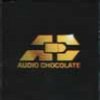 Big noise. Distorted beats. Voices from the aether mashed up into chaotic noisescapes alongside seemingly random music samples. Oodles of distended HipHop beats, and ranting inna Punk style from Patric C, Gina V D’Orio, Hanayo and N1tro. All the hallmarks of a Digital Hardcore compilation, except it’s not now, it’s the debut statement of invective and intent from Audio Chocolate. There’s the same energy of course, and plenty of growling layers of shouted and snarled lyrics stating the assembled artists’s discomfort (to say the least) with the state of so-called Western Civilization, but plenty of joy in their abuse of the technology of said evil empire.
Big noise. Distorted beats. Voices from the aether mashed up into chaotic noisescapes alongside seemingly random music samples. Oodles of distended HipHop beats, and ranting inna Punk style from Patric C, Gina V D’Orio, Hanayo and N1tro. All the hallmarks of a Digital Hardcore compilation, except it’s not now, it’s the debut statement of invective and intent from Audio Chocolate. There’s the same energy of course, and plenty of growling layers of shouted and snarled lyrics stating the assembled artists’s discomfort (to say the least) with the state of so-called Western Civilization, but plenty of joy in their abuse of the technology of said evil empire.
Bomb20 puts a sample collage together on “Redrum”, just to make the point again. “Change the system from within” says one TV soundbite – “You still haven’t learned, have you?” comes the equally ripped response. With fellow noise travellers Peaches and Chilly Gonzales contributing their own unique charms (Chilly G’s project with Patric Catani et al is called Jew Funk) and collaborations galore, Ignorance Is Bliss comes on at full speed before throttling down into an unsteady groove where the fine-tuning of distortion becomes an artform in itself. Especially powerful is the ramming together of Bomb20 and N1tro as Camouflage F*ckstars, and N1tro’s own “Sumo Catacombs”, where they take considerable delight in making ears bleed and suggesting that one use for all those baggy trousers favoured by HipHop fans is to provide room to shit themselves at the gut-churning bass frequencies on offer. Likewise, Hanayo does her spooky wailing thing to the sound of Bomb20 scaring up a soundtrack for horripilating digital string psycopathy on “Shark Attack”, but there’s Punky guitar sampling too on Parasite‘s crackling “Warfarin” which bites in with a riff and then fails to let go for a long time as the structure dissolves into nasty Drum & Bass destruction. The Parasite/DJ Freq (no relation) track “Your A Freak” does similar things, but with decks set to stun, or at least regurgitate.
Still, there’s a community feeling to proceedings on Jew Funk’s “Purple Pro”, where Paul PM (from Fever), Maxwell Turner and Chilly G big each other up. This gets to the point it’s almost touching when it’s declared “Let’s make this a posse thing” among the pulverised beats and the stream of consciousness rap (though the compilation as a whole has a lind of nightmarish flow to it). So they do just that, getting Bomb20 in on the act again to become Pirates On The Moon for the brooding rap threeway mic session “Damage”. In another configuration, D’Orio, Catani and Turner do the post-Punk twist on the clattery digital Skiffle of “Goodbye My Love”. Another oddity is Candy Hank‘s “Leave The Disco”, which lies somewhere between the flat English lyrical observation of, say, James Havoc and the results of emptying a hard disc’s worth of samples into a churned-up, bleepy Pop blender.
All in all, Ignorance Is Bliss shifts the ground its participants may have become known for on DHR into perhaps wider territories, but there’s still a massive enough slab of biting anti-NATO sampling on Bomb20’s grinding “Collateral Damage” to show the politics are still in the mix as strings divebomb into sub-bass explosions. Expect plenty of quality fucked-up noise to come from this label.
-Freq1C-
Various – Institute Of Sonology 1959-69: Early Electronic Music
Label: Sub Rosa Format: CD
“Piano-Forte”, by Dick Raaijmakers, begins this subtle study of the absolute outré – a kind of music (musique concrete et al) pursued in the early days of modern experimental music, for the consuming ethic of “being interested in something”. Various piano sounds, tinkling and thudding, cut-up and blasted, with sudden stops that have only become more blurred as time has passed and our editing technologies have improved. Or have they? Frits Weiland‘s “Studie in Lagen Impulsen” is next, gently whooshing and hissing and building layers of same across a field of musical heating grates which also huff air upward. Ton Bruynel‘s “Reflexen” further challenges the talent to describe sound as it is happening, with its sudden right and left turns, scrabbling in the sonic dirt, and percussive burbling.
Konrad Boehmer, who organised and arranged this particular gem of soundart archaeology, weighs in with “Aspekt”, recorded 1966-1968, at which point more than a few of us were still swimming around someplace. It sputters like electrical live wiring, all pieces doubtless culled from a multitude of sonic fathers (the identity of which is not revealed, even in the liner notes, which are a wealth of history from that time). It shatters through the air in the innocent catastrophe that is entropy itself, falling apart, recombining and recomposing as it changes through the length of the piece. It accelerates in fits and starts, elegiacally presaging the rate and weight of the world in the ensuing decades.
Gottfried Michael Koenig‘s “Funktion Orange” buzzes like citric acid spilt from the fruit into a cut, dull pain over sharp and back again. It crackles and whines with errant magnetic waves but these words aren’t even nearly enough to describe the anarchic majesty of what is currently hassling my speakers. Rainer Riehn‘s “Chants de Maldoror” is the final piece: Jazz record mixed with a faroff and occasional stickbeat. Squeaky hinges and cascading diamonds and rains of crunky frogs follow, and it’s perhaps a bit fallacious to try to assign organic attributes to electronic institutes, but, one does what one must…
With the exception of Ton Bruynel, who died in 1999, these founding fathers of modern experimental music are still alive, and, hopefully, still working. Why not drop them a line, show yr old dad that you care?
-David Cotner-
Various– – International Deejay Gigolos – CD Two
Label: International Deejay Gigolos Format: CD
International Deejay Gigolos is the baby of Munich`s very own DJ Hell. It’s an interesting label, all sorts of stuff has come out on it, including Jeff Mills` Shifty Disco EP. When it comes to the second compilation CD I`m split down the middle: half of it I`m not too keen on, the other half is great.
Ok, lets get what I don`t like out of the way; when it starts getting into the melodic trancey dancey stuff I loose interest. This type of music doesn`t do much for me. It’s too clean and lacks punch – in my opinion. Now for what I do like. Three artists really grabbed me: Miss Kittin and The Hacker, David Carretta, and Christopher Just. This stuff is the great stuff. Miss Kittin and The Hacker serve up large doses of Funky chunky retro Electro, complete with Linn Drum rhythms and early Eighties analogue melodies. The sounds are quite primitive, it doesn`t sound like new technology trying to sound like the old. This is the old stuff. This isn`t coincidence – give “1982” a listen – it says it all.
Their tracks have freakiness reminiscant of Fad Gadget/Frank Tovey`s synth pop experiments – such as “Back To Nature” and “The Box”. And then there’s their little number called “Frank Sinatra”. Crass stated “Punk is Dead”, Miss Kittin and The Hacker say “Frank is Dead.” And well, I never heard Frank sing “Suck my dick, kiss my arse.” David Carretta follows in the same line, class freaky Electro. Lastly there’s Christopher Just – I love DJ Hell`s remix of “Disco Dancer”, countless voices mash around – all saying “I`m a Disco dancer” on top of a mutilated tune. This is Disco dragged kicking and screaming through a hedge, then given the heavy delay treament. I like lots. So, I`m not wholeheartedly in love with this CD. I like it when its being weird and Electro, and it does this damm well.
-Alaric Pether-
Various – Intox
Label: Intoxygene Format: CD
Intox is a 12 track sampler from Paris based Intoxygene containing a generous selection from some of the artists signed to the label: Electrobolt, Y Front, The Young Gods, Peeping Tom, Virtuart, and a solo track from The Young Gods’ Franz Treichler. Between them they encompass quite a wide spectrum of Electronica. The album begins with “Safe And Sound” by Electrobolt, which is a Prodigy-esque turbo charged number where Rock meets Electro head on. And yes, that’s Rock with a capital grrr. This is followed by the equally Rock-fuelled Y Front with big Industrial sounds and the robotic Funk of “Daft Boyz” – can’t think who they are referring to there. Peeping Tom provide a couple of very good Drum and Dass Dub numbers on the compilation.
Influential Swiss experimentalists The Young Gods are represented by stripped down reductionist drums/voice/sampler Electro from their album Second Nature. Franz Treichler’s solo contribution, “Quintet Op 1.”, comes his work with choreographer/performer Gilles Jobin. This could well be my favourite track. Layers of ambient textures float above a rhythm that slowly creeps forwards. Two sides of the Parisian composer and DJ Virtuart, a.k.a. Virtual Olive, a.k.a. Olivier Abitol, are represented on Intox – from the two albums he released on Intoxygene in 2001. On the one hand he gives us the precise and pumping electro trance of “5X ST EX”, on the other hand the wide open spaces and mellow Drum and Bass of “Fantomas” that constantly spirals upwards, and by the end of the track Virtuart has transformed it into a no holds barred rush.
-R.M. Nimbus-
Various – Le Jazz Non – A Compilation Of Norwegian Noise
Label: Samlltown Supersound Format: CD
As quoted on the cover of Le Jazz Non, John Cage has this to say about experimental music in 1957, “New Music: new listening. Not an attempt to understand something that is being said, for if something were being said, the sounds be given the shape of words. Just an attention to the activity of sounds.” OK, so I popped this in the old cd player and tried to continue on with my day thinking not of the meaning or purpose behind the noise, but just the sounds. Sounds are so everywhere and all the time, and all the time I hear them and think, oooo, someone should record that. In fact I am pretty sure that everyone should carry contact mikes around in their pockets, just to be ready.
So here is a bunch of Norwegian artists who may have been doing just that. Twelve tracks of noise, and I don’t know what they are for, don’t know what they are from. Some of them blended so well into the enviromental sounds of an ordinary day that I got confused when the door buzzer went, could not discern between the construction across the road, finally took notice of how clever the washing machine sounds while spinning. Sound. Aurality. Music is never far from my ears for more than a couple of sleeping hours in every 24, but sound is always there. So easily overlooked (overlistened?), so easily blocked out. And to think in Norway, all these people have spent all this time and effort not on making songs, but on making sounds. Noise. Incredible.
I don’t know that this will become my favourite listening CD ever, but there is no doubt that it has fully expanded my ideas about noise. Everything seems to have some use. The odd jam jar makes a great flower holder, toilet roll forms into great emergency smoking paraphenalia. Basically all the world can seemingly be recycled from one thing, into another. Sound should be no different I suppose. And noise can go into being music, or noise can stay noise and be appreciated at that angle. Noise, listen, noise, create. There isn’t much about all this racket that makes one that aware of Norway, but the awareness of sound is worth the listen.
-Lilly Novak-
Various – King Size Dub Chapter 6
Label: Echo Beach Format: CD
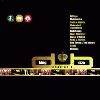 Echo Beach‘s long-running series of Dub compilations now extends into dancefloor cuts with varying degrees of success. Few, if any, of the tracks here are original to the collection (though some are relatively hard to find) and it’s pretty obvious that this selection has its sights set squarely on the commercial sector.. MTV welcomes bass drivers too, it seems, and has done for a while. To get the obvious mixes out of the way first, it’s really perhaps a little unfair to pick on Groove Corporation‘s recasting of Bob Marley And The Wailers in floor-filling style, given that any reinterpretation of a classic tune by a revered artist is going to collect a bunch of flak just for even thinking about the project – witness the generally hostile reception given to the Can remixes when they appeared for example. So it’s fair to report that “Put It On (Again)” retains enough of the original to remain true to the spirit of Dub, while taking the idea into the turn of the Century style, and putting in tweaked echoes, rewinds, drops and fills among the re-arranged vocal track, and in fact is quite an acceptable piece in its own right.
Echo Beach‘s long-running series of Dub compilations now extends into dancefloor cuts with varying degrees of success. Few, if any, of the tracks here are original to the collection (though some are relatively hard to find) and it’s pretty obvious that this selection has its sights set squarely on the commercial sector.. MTV welcomes bass drivers too, it seems, and has done for a while. To get the obvious mixes out of the way first, it’s really perhaps a little unfair to pick on Groove Corporation‘s recasting of Bob Marley And The Wailers in floor-filling style, given that any reinterpretation of a classic tune by a revered artist is going to collect a bunch of flak just for even thinking about the project – witness the generally hostile reception given to the Can remixes when they appeared for example. So it’s fair to report that “Put It On (Again)” retains enough of the original to remain true to the spirit of Dub, while taking the idea into the turn of the Century style, and putting in tweaked echoes, rewinds, drops and fills among the re-arranged vocal track, and in fact is quite an acceptable piece in its own right.
Those G-Corpsters take on Dillinger too, making over his “Cocaine In My Brain” as a Funked up breakbeat editon of the Discofied original, and fiar enough, it’s OK if groovy dancefloor breaks with echoed frills matches the mood for a change. One for the advertisers to filch for something (in)appropriate, like credit cards or something, provided they can get past that nagging cocaine reference? Oh well, maybe not after all… but who can ever tell? Oddly enough, the hup-two-thee-four House rhythms of the versioning done to Mutabaraka‘s dub poetry as “Dis Poem (Reel Houze da Rub)” would probably go down well with those folks and their magpie connections, but, oh dear, is that politics he’s talking about? Best left alone then; but, unfortunately, so are the insistent beats.
Rather more interesting are the Senegalese-Czech outfit Hypnotix, who have apparently been at the controls since before the fall of Communism, and their combination of keyboard brass, electronic squiggles and drifting percussion is at least very pleasant, if a tad over-nice thanks to a) a guitar which gets a little too soaring without progressing beyond repetition, b) a fretless bass which gets upwardly funky to no geat end and c) a flute sample. Shame, but saved by Bourama‘s lyrical delivery and the kicking in of some Digi-Dub stomp. Keiser & Velten seem to have learned more from Kruder And Dorfmeister than just being released on their label, and continue the Eastern/Central European dub expansion in similar laid-back, breakbeaty-bass-boom style. Seeed are from Berlin, but have African and Columbian members too, and are adequately Rootsy with their chants, brass and percussion, and North America get represented by Canadian Jason Irwin as the upbeat and trancey-dancey Watershell and the urgent Avatars Of Dub mix of Thunderball into a dynamic, if ambient, Drum & Bass skank. From the UK-Asian dub scene come Bally Sagoo with his accurately-title “Funky Rickshaw Dub” collision between Bollywood and Digital Roots, and Black Star Liner, whose loping “Harmon Harrot 2” remix by The Rootsman from a long-deleted promo EP revels in a bassy undertow.
So what does King Size Dub Chapter 6 show? That there is a globally-marketable aspect not just to Reggae (Marley and others did that decades ago) but to Dub too, and not just as an adjunct to other genres it was always at least an infiltrator into (Rock) or an underlying aspect of (HipHop, Drum & Bass), but in a foregrounded way which will both energise and probably corrupt for the better a generation which doesn’t find the idea of banks selling mortgages with Augustus Pablo dubs as odd as they should.
-Antron S. Meister-
Various– – Kompilation
Label: Kranky Format: CD
Normally I avoid difficult questions like: “What is post-Rock?” since it seems to apply retroactively or insidiously to a number of unconnected artists who would otherwise be unclassifiable. Post-Rock seems to have something to do with having a lot of Krautrock in one’s record collection and an overfondness for digital delays. If anyone can give me a good definition of “out-Rock” (without reference to whether Sabbath “out-Rock” Led-Zep), I’ll post them a jam donut.
Anyhow, all the acts on the Chicago-based Kranky label will probably slot quite snugly into the space marked “post-Rock”. I’m sure the spelling of compilation with a “K” was originally used by the magazine Kerrang in the mid-Eighties, and anyone familiar with the history of British children’s television will cringe (kringe?) at the name Kranky. This anthology is however a good first stop in any enquiry concerning the late Nineties death of rock.
The ghosts of two bands dominate this album: Hawkwind and Joy Division. Strangely enough, neither band has signed to Kranky. American slo-fi band Low are though. Low are also very good and “Condescend” shows them in fine slow-paced form augmented with some nice simple strings. Bowery Electric are also here. If “Condescend” wouldn’t have been out of place on Joy Division’s Closer then Bowery Electric’s “Long Way Down” could have fitted onto Hawkwind’s Doremi Fasol Latido with minimal alteration. Don’t get me wrong – I liked both of these bands and many of the other acts like Jessica Bailliff and Windy And Carl who plough similar dronescape furrows with at least equal competence.
Perhaps the most impressive outfit on this compilation (I can’t bring myself to spell it with a “K”, grrr!) is Godspeed You Black Emperor whose “The Dead Flag Blues” I am never likely to play to friends in case they abandon me to my own misery. This is an uncompromisingly black piece of apocalyptic music – what we would have called “Goth” once upon a time. The least impressive has to be Dadamah‘s “Brian’s Children,” which comes on like a low-fi Siousie Sioux playing next door. It’s not half bad though! Again we see a gloom that would have fitted onto a badly recorded Nephilim album. Is this what post-Rock really is? Neo-Goth? (How about Post-Goth? – Ed.)
As the sleeve notes point out: each album is meant to be heard as a whole and this disc is basically a low-priced compilation to showcase a number of Kranky acts. All of this it does ver nicely thank you. I’m still none the wiser about post-Rock though…
-Iotar-
Various– Krush Grooves
Label: Groove Attack Format: CD,3LP
Showcasing the talent emerging from Germany’s developing Drum & Bass scene, Krush Grooves opens with the Vocoder-led Roboticisms of Ono Sendai, setting the pace for the deep-bass explorations to come. Taking obvious influence from UK labels and artists from No U-Turn (whose very own Nico shares a production credit on The Uniques’ low-end rumbler “The Ultimate”), Full Cycle to Metalheadz, the mood is dark-ish and the science precise. Free from commercialist vocal wails, cod-jazz smarm or other unwelcome intrusions, there is still room for the easy trip of Myer’s “Sir Alfred” amongst the hardstep and the rolling breaks.
Fine examples of the various breakbeat routes are found in the electro-dub of Einzelgänger’s “Trouble Funk”; in frantic breaks courtesy of the Third Coming, whose “Reset” is an exemplar of metallic abstraction; or the hard clashing of Monophace’s distorted drum ‘n’ brass. Speed comes with the aptly-named Bassline Generation and their chugging steppers loop, only let down by the familiarity of the “Rhythms I Haven’t Used Yet” sample. Smoothness is even catered for with the languid “PN Junction” from DJ Sunrise, but the sub-Photek snare-fests of Fauna Flash and the stuttering hi-hat loops and squelch-bass of Bassface Sascha’s “Answers” which remain more typical of an excellent and varied compilation. More please.
-Freq 1C-
Various – Light EP
Touch Format: CD
 Touch know their Ambience – they’ve just released Biosphere‘s new album Cirque and re-released Substrata so they should. Light is a four tracker with offerings from Hazard, Fennesz, and Biosphere. Hazard’s “Meteosat” is a monolithic drone with crackles of distortion running through it. “C-Street” by Fennesz is an experimental wash of digitally processed guitars and static that merges together forming melodies and rhythms. Then there is Biosphere. Light contains two reworked tracks from the new album – the seriously Dub breakbeat mix of “When I Leave” complete with distant voices discussing “Stairway to Heaven”. Finally there is the superb mix of “Algae and Fungi”, where a beautiful mixture of synth and guitar hang virtually motionless in mid air creeping towards blissful heights.
Touch know their Ambience – they’ve just released Biosphere‘s new album Cirque and re-released Substrata so they should. Light is a four tracker with offerings from Hazard, Fennesz, and Biosphere. Hazard’s “Meteosat” is a monolithic drone with crackles of distortion running through it. “C-Street” by Fennesz is an experimental wash of digitally processed guitars and static that merges together forming melodies and rhythms. Then there is Biosphere. Light contains two reworked tracks from the new album – the seriously Dub breakbeat mix of “When I Leave” complete with distant voices discussing “Stairway to Heaven”. Finally there is the superb mix of “Algae and Fungi”, where a beautiful mixture of synth and guitar hang virtually motionless in mid air creeping towards blissful heights.
-ap-
Various – Lume Lume
Label: Staubgold Format: CD
 Under the liberal leadership of Alexander Balanscu, a collaboration was formed to celebrate the combining of artists from a myriad of backgrounds to soundtrack a multimedia event, Klangpark 2000, beside the Danube river for the Ars Electronica Festival. The central theme of Balanescu’s concept was a musical re-interpretation of the work of Romanian singer Maria Tanase. Over four days, the artists filled the park’s public space with sound, for 57 hours. Lume Lume is a collection of excepts of what was created there by Balanescu and Isabella Bordoni, Rupert Huber, Sergio Messina, Siegfried Ganhor and To Rococo Rot
Under the liberal leadership of Alexander Balanscu, a collaboration was formed to celebrate the combining of artists from a myriad of backgrounds to soundtrack a multimedia event, Klangpark 2000, beside the Danube river for the Ars Electronica Festival. The central theme of Balanescu’s concept was a musical re-interpretation of the work of Romanian singer Maria Tanase. Over four days, the artists filled the park’s public space with sound, for 57 hours. Lume Lume is a collection of excepts of what was created there by Balanescu and Isabella Bordoni, Rupert Huber, Sergio Messina, Siegfried Ganhor and To Rococo Rot
Traditional Romanian folk music combined with electronic processes and everything modern? Indeed. And a funny thing happens in the Folk parts – it sounds like Brian Eno, a long time ago, when his electronics were still very analogue and primitive (and gorgeous). The electronics here are all very sparse and drone-ish and computer lab sort of sounding. There are some bits of drum machine rythyms which might be forerunning the growing re-popularization of 80s dance machine music. Mostly this all sounds like an experiment in many directions of performance and art, as well as fitting nicely into experimental music. Though Lume Lume is merely a set of examples of the music that happened during Klangpark, one can only wonder at the sound of the event in full. Daily ongoing noise sent out for the approval of nature as well as human audience. I get a mental image of a Linz office worker taking a lunchbreak by the river only to be astounded with these sounds, the contemplation of his lesser importance beside a river which caused him and them to be there in the first place.
Highlights include a dramatically evocotive track titled “Too early on Thursday” which is steeped in strings which nearly pulls the tears out of strong men’s eyes. “The River Flows And All Is Well” along with “What Did You Have For Lunch?” are two songs which seem to achieve the most right-on grooves and sound like how a river fits wherever it is, or makes the land conform to accomodate it. One easily hears the influence of nature and indeed this whole collection seems more concerned with the organic than with old versus new or whatever more esoteric juxtapositions might be inferred. A trial by morals to create a musical tribute to a river seems a daunting task. Include the region’s elements of weather to create challenges and obstacles, and confrontation from the background noises of traffic and industry created by being in the middle of Linz… well, to say the least these artists must have felt humbled.
Nevertheless, from what we can hear on Lume Lume, their efforts were valiant, and a great tribute to public space was created. A final approval could only come from the Danube itself, and we are left to guess at that. In the meantime, the recorded bits of days of music give those of us not lucky enough to be there for the actions a chance to experience what eight great minds of sound came up with to represent this waterway that connects as many differing aspects of life and art as the performers who created it.
-Lilly Novak-
Various – Hot Air & Dr. Asswani Presents Medical Milestones
Label: Hot Air Format: CD
 At last, a chance to catch up with all the best bits of Hot Air‘s Medical Milestones 7″ singles, where a variety of dubious artists of notoriety had their chance to get down to some serious stupidity. With a few tracks which didn’t fit in the first time round thrown in for good measure, the collection spits, sputters and cross-cuts at furious pace from the opening blast against plain old-fashioned linear Techno rhythms from Vomit Lunchs to the overheard snippets of postal workers Janek Schaefer taped from inside a recorded delivery package. Packed with impure acoustic chaos flashed with kitschadelic plunderphonics and circuitous electronica via art-theory field recordings to faux-Gabba dementia, there’s a humourous tone to proceedings which is nevertheless undercut with a determined air of arch, often Surreal, intent.
At last, a chance to catch up with all the best bits of Hot Air‘s Medical Milestones 7″ singles, where a variety of dubious artists of notoriety had their chance to get down to some serious stupidity. With a few tracks which didn’t fit in the first time round thrown in for good measure, the collection spits, sputters and cross-cuts at furious pace from the opening blast against plain old-fashioned linear Techno rhythms from Vomit Lunchs to the overheard snippets of postal workers Janek Schaefer taped from inside a recorded delivery package. Packed with impure acoustic chaos flashed with kitschadelic plunderphonics and circuitous electronica via art-theory field recordings to faux-Gabba dementia, there’s a humourous tone to proceedings which is nevertheless undercut with a determined air of arch, often Surreal, intent.
The medical moment to savour or revile, depending on just how strong the listener’s stomach is feeling at the time, is the entirely too-evocative “Constricted Transverse Colon” from Stahlgren And Ferguson, which is probably best glossed over in the description of its rumblings. And of course, no Hot Air collection would be complete without Stock Hausen & Walkman, whose similarly ventral “Sphincter” spills out from intestinal gurglings into a torrent of Kosmische Rock-out flatulence before the concluding flush. They’re also to be found doing the kick, punch and grunt shuffle to the squelch of analogues in a slice of Funky times on the hypertrophied Kung Fu dancefloor with their ever-so cheesy “Fistycuffs”. Vomit Lunchs’ “Blast Avoidance Mix” takes a Japanese meander around a stagnant sine-wave into cacophonous spasms of cartoon FX violence; Speedranch & Janski-Noise make “Tuning Adjustments” the foreground of their contribution in a snippet of in-studio tech discussion on just how to make some increasingly flatulent biological sounds. “What Lola Wants” from The Rip-Off Artist takes a soundtrack whistle and sets it to a vocoder and walking bass Tango chorale of catchily Plunderphonic dimensions while Semiconductor go the other way into the wind-tunnel oscillator churn of “Catwalk” and take liquid pleasure in the snip of tape and click of mouse in “Minimall”.
Los Samplers (AKA AtomTM) weigh in with some Exotica gone crazy on “Demasiado Funcional”, and crinkly round the edges as it is there’s still the whiff of Latin rhythms shimmering through the aural grit as a noisier side to South American musical areas explored by the likes of Cristian Vogel. The lion’s share of the disc goes to Dummy Run (and then Nic Birmingham turns up as his city namesake too), from the descriptively-titled “Squeaks”, which runs through a selection of those sounds to set the teeth on edge accompanied by insouciant whitling via the frenetic breakbeat jollity of “Happy” via “A Himalayan Tale”, complete with Oms and drones among the guttural scrapings and groans and into the bouncy bleeps and clanks of “Organ Transplant” which exudes a somewhat Residential air to its joyously insane sampladelic groove. “Skittles” has a louche Jazz feel of sorts to the wonky splatter of clicking rhythms, and Birmingham’s “Hackney” and “Sick Boy joe” let the filters do the talking in similarly groovesome swathes of scratches and bleeps to a shuffling bass step, while the gloopy feel of “Nintendo” presuably owes a lot to its source instrument’s 8-bit sound.
-Freq1C-
Various – Membranaphonics
Label: Monitor Format: CD
 Now this is interesting, not only because it’s really cool music, but the tracks here are all contributed by various drummers from bands, trying their hand at going solo. Some of the performers here include Kyle Crabtree from Shipping News, Damon Che from Don Caballeo, Simone Pace from Blonde Redhead, Pat Sampson from US Maple, and Jeremiah Green from Modest Mouse, just to name a few – and they’re not just doing Led Zeppelin drum solos, either. These are all actual songs on here, from Kraftwerk-sounding, cold electronic pieces to near-acoustic instrumentals to some really spooky-sounding tribal shit.
Now this is interesting, not only because it’s really cool music, but the tracks here are all contributed by various drummers from bands, trying their hand at going solo. Some of the performers here include Kyle Crabtree from Shipping News, Damon Che from Don Caballeo, Simone Pace from Blonde Redhead, Pat Sampson from US Maple, and Jeremiah Green from Modest Mouse, just to name a few – and they’re not just doing Led Zeppelin drum solos, either. These are all actual songs on here, from Kraftwerk-sounding, cold electronic pieces to near-acoustic instrumentals to some really spooky-sounding tribal shit.
-Holly Day-
Various – MM
Label: World Serpent Format: CD
Algiz speeds through a welter of French – and how deep are the roots of the concept of time in folk music? Flute, guitar; sudden swelter of bongos. The music moves swiftly – to what end? I mean that literally. Backworld effuse through violins about “The Devil’s Plaything.” Are Folk music and semiotexte two tribes never destined to meet? Are there inroads in folk music, yet to be explored? Or, are those inroads in ruins? Der Blutharsch rain drums and tubular bells upon the earth that excoriates titles. Bryin Dall states that he is so lonely he could cry, stretching out the fingers of this mood through guitar and strings. Cyclobe curve through the strings and drums bursting into a ringing of telephone and scuttled voices cutting through the first five minutes after sleep. Darkwood intone over guitars (whither goeth the number of strings?) and German, as if something is indeed waiting in that dark wood – waiting from behind.
Dawn & Dusk Entwined unfurl voices and melding tones and those voices build – point, counterpoint? Is there a chance to build something over hours and months and years – is this the legacy of Folk music: the gradual build? Leutha take their focus – “Wind” – and breathe through it, into it, around it – or do they mean “Wind”? There is no small amount of crossings and movement in the sounds – bells become air and air moves through cylinders. It trembles into the final seconds, vanishing as nature becomes time. Nobody‘s voice rings clear as the bells that succeed it – fractured blossoms of feedback warble from the sound-sources – and it is not for nothing that the concept of “longing” is the capstone to the arch of Folk. Novy Svet rend the proceedings with rude organ and la la lowing – playing while this Rome burns, like one of the twelve Caesars – “La Aroma Lola”? ? A hey hey, a hey hey.
Ozymandias. Look for the coming interview in which it is revealed that his favourite poem is not, in fact, “Ozymandias”. Piano emerges, and slyphs out as gently as it had come. Pantaleimon study the strings of their guitar as through a pastoral life, as though a pastoral life. There is a sound behind them that suggests someplace in the country where someone let fall an arrow. The string section bows for an extended period of time. Much unexpectation. Regard Extreme bring drums and synthetics to tromp l’oeil for the joy of the princess. And so it goes. Skald offer their respect to days gone by, with plucking and bowing, plucking and bowing. It is surprising how many of these sounds are intensely visual, telling stories left and right and down again. The Soil Bleeds Black feature flute and big bass drum. Would the compact disc format doom the musicians herein to a drowning or a burning at the stake were they transported back to a simpler time? Tor Lundvall, in “My Weakness”, calls from a fog – a veil of bells and wails, a mist of sounds not missed; of vice and ether/or – regret? Nostalgia?
-David Cotner-
Various – MNW Records Group 2000
Label: Industrivägen Format: CD
It’s funny. I’ve gotten a few of these compilations from Sweden, and I’ve noticed that I’ve been consistently bowled over by the cool opening song – usually some weird folk-thing with accordions and off-key vocals – but then been disappointed by the stock Pop songs that comprise the rest of the compilation. I’m thinking that these opening songs that I actually like on these compilations is really just a big joke that’s supposed to throw people off instead of titillating them wildly like it’s been doing to me. Some people could claim the same thing of the rest of my record collection, I suppose.
Anyway, I love the opening track on this provided by Doktor Kosmos, and aside from the Ray Wonder and the Bamma B songs, nothing here really sticks out. Pretty much every kind of popular music is covered here, though, which is interesting – how many Swedish Rap bands are you familiar with?
-Holly Day-
Various– Modulation & Transformation 4
Label: Mille Plateaux Format: 3CD
Three packed CDs, lovingly pakaged in a nice card gatefold with accompanying texts by a couple of the artists involved, and the patron saints of Mille Plateaux themselves, Gilles Deleuze and Felix Guattari. Their extract from A Thousand Plateaus expounds on the ambiguities inherent in the synthesis of disparate (musical) elements, warning of the dangers of noise accreted into chaotic, unlistenable soup, seeming to demand simplicity and some kind of selective rigour involved in the collation of sound. With specific reference to music produced or filtered through machines as the basis of the question raised by Mille Plateaux’s Achim Szepanski, “How does electronic music function” and his own answer “Music follows a paradox model, making (the) inaudible audible…”, Modulation & Transformation 4 sets out to explore the possibilities.
With some of the better-known electronic artists involved, from Mouse On Mars (and Lithops) via Panacea,Techno Animal or Steel to Ultra Red, Terre Thaemlitz and Ryoji Ikeda, there’s plenty of low-key glitching and/or grinding sampler-skewing present. Pretty much the whole spectrum of Electronica gets a look in, Isolationist, Ambient, Musique Concrète, or just atmospheric, with the emphasis on the textural rather than the energising (though Panacea et al have a good bash at the searing crush of distorted samples); mind- and subconscious-pleasing sounds beating body music almost every time in the contributors’ interpretation of the process.
There are outings from less familiar or foregrounded names like Brusseller Platz 10 A Musik (concealing Marcus Schmickler in collaborative guise, as well as his own Pluramon identity, taking the opportunity to make a quite controlled racket), Blue Byte‘s creeping stumble through alarming, fragmented Jazz Dub Noise, or the controversially-named (Consume &) DJ Paedofile, whose “Bitch My Smack Up” is a turntablist snack of suitably splurging proportions. By no means one-dimensional, Modulation…4 contains a wealth of experiments, explorations and even exegesis on the subject of contemporary directions in electronic music. An anthology of such behemoth-like proportions can hardly fail to engage on whatever level the listener cares to bring; background, foreground or sensurround – it takes the time and breadth of examination needed for an exponentially-expanding area of this enormity, and fulfils the remit imposed by its compilers, if never (oddly enough) coming any where near providing a definitive answer: as if there could be one.
-Antron S. Meister-
Various – Movie Musicals
Label: Nimbus Format: CD
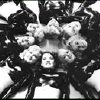 This is a great CD for anyone who’s into classic film musical numbers, especially since a lot of these songs aren’t what you usually find on collections like this. There is, of course, lots of Al Jolson songs, selections from The Jazz Singer and the Shirley Temple classic, “On the Good Ship Lollipop” – however, there’s also Mae West (in her absolute prime) singing the title track from I’m No Angel, Fred Astaire singing Irving Berlin‘s”Let’s Face the Music and Dance,” and Judy Garland singing the whole movie version of “Dear Mr. Gable (You Made me Love You)” from Broadway Melody.
This is a great CD for anyone who’s into classic film musical numbers, especially since a lot of these songs aren’t what you usually find on collections like this. There is, of course, lots of Al Jolson songs, selections from The Jazz Singer and the Shirley Temple classic, “On the Good Ship Lollipop” – however, there’s also Mae West (in her absolute prime) singing the title track from I’m No Angel, Fred Astaire singing Irving Berlin‘s”Let’s Face the Music and Dance,” and Judy Garland singing the whole movie version of “Dear Mr. Gable (You Made me Love You)” from Broadway Melody.
This collection also wisely takes into consideration how bad musicals started to suck after the 1930’s, and makes the cut right at 1938 with Broadway Melody, a movie which, in retrospect, seems to have been the death knoll of the whole genre.
-Holly Day-
Various – A Mutated Christmas
Label: Illegal Art Format: CD
 Illegal Art‘s very own seasonal album of Plunderphonics mashes up, regurgitates and spits out all those cheesy Xmas songs that TV loves to use as advertising jingles on sentimental journies into commercial holiday paradise, in association with digital pranksters ®TMark. Opening with a stunning scratchadelic medly of “White Christmas” from CD compiler Corporal Blossom, where Louis Armstrong soundclashes with Elvis, Sinatra, Bing AND Dianna Ross to a Funky breakbeat loop, the disc proceeds through DJ Olive‘s plangently sugar-filled “I Saw Mommy Kissing Santa Claus” – but the sugar is just to hide the taste of Illbient almonds in the icing, and the deconstructions whirl off into a maze of sonic detritus before a final revisiting of the gloopy original and a sardonically-sampled “Fuck That!”
Illegal Art‘s very own seasonal album of Plunderphonics mashes up, regurgitates and spits out all those cheesy Xmas songs that TV loves to use as advertising jingles on sentimental journies into commercial holiday paradise, in association with digital pranksters ®TMark. Opening with a stunning scratchadelic medly of “White Christmas” from CD compiler Corporal Blossom, where Louis Armstrong soundclashes with Elvis, Sinatra, Bing AND Dianna Ross to a Funky breakbeat loop, the disc proceeds through DJ Olive‘s plangently sugar-filled “I Saw Mommy Kissing Santa Claus” – but the sugar is just to hide the taste of Illbient almonds in the icing, and the deconstructions whirl off into a maze of sonic detritus before a final revisiting of the gloopy original and a sardonically-sampled “Fuck That!”
Fognode make a pleasant sleigh-bell and piano chug as “Carol Of The Bells” tinkles into a snowy atonal oblivion of stop-start brushed drums and bass thrums among the refried Lounge. Corporal Blossom has a few more workings up his sleeve: “The Christmas Song (Chestnuts)” pushes more charity shop recording stars through the turntable mincer in a fury of ironic breakbeat and strings which eventually give up any pretence at melody in favour of stomach-turning juxtapositions. The condensed festivities continue on the rather fabulously Funked-up “Little Drummer Boy”, where diverse interpretations become a delightfully catchy HipHopster’s Christmas theme: wall of sound vocal groups, mellow acoustic guitar, chunky Funk, Pinky’n’Perky timestretches and heavenly choir alike bringing a chirpy grin to the concept of copyright theft. Weirdest of all is the concluding take of “Santa Claus Is Coming To Town”, which sounds like it should have been Caresse P-Orridge who recorded the little girl lyrics (in fact it was one Lori Holloway in the early Seventies) to the synthetic string and tumbling breakbeat cacophy in the background. Funny and disturbing at the same time.
Other highlights include No-L‘s crooner-chopping “Have Yourself A Merry Little Christmas” where the usual extensive cast of has-been MOR suspects (including a frighteningly upbeat snippet of The Jackson Five)get their glitchy come-uppance in the depths of the sampler; Mom And Daddy‘s downtempo piano Jazz and choir-sample workover into “O Holy Night” which somehow ends up sounding bizarrely like a deranged and discordant Sigur Rós covers band; the darkly explosive rendering of “Silent Night” from Lustmord harks right back to the Western Front with it’s intrusion of artillery salvoes and machine gun rattles into the still-moving drift from organ chorale via campfire humalong into reverberated voices from the aether; and Grassy Knoll’s equally Scrooge-like dismalisation of the Christmas spirit into a gloomy multi-sourced medly of “Silver Bells”‘. Further sinister jollity comes from Lovecraft Technologies on the upbeat morass they make from jingly bells, sped-up vocal trills and propulsive beats before letting it rip into a chaos of rewinds and restarts. Least immediately grabbing are the brief run-through of “Let It Snow” from Steven and DJ Kudzu‘s Jazzy stuck-record sample frenzy “Do You Hear What I Hear” which drifts off rather aimlessly into bombast.
Probably the most illegal Christmas album in the world. Ever?
-Linus Tossio-
Various – A New Breed OfDub, Issue Two
Label: Dubhead Format: CD
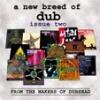 Second installment in Dubhead‘s ongoing series of collections showcasing Dub recordings from the UK and beyond in Digital Roots style, Issue Two of the New Breed Of Dub strand shows off the label’s enduring commitment to advancing the genre. More of a recent and upcoming release sampler than their Dubhead compilations, there are still some choice cuts on offer, not least being the two heavyweight tracks taken from Twilight Circus‘s Dub Plates Volume 2 – which incidentally are the only non-label offerings here and fit the mood just right too, leavening the sequenced feel with some pure analogue dub. Also in place is the energetically-phased “Niyim One Drop” from The Hydroponics‘ Let The Light Shine CD, and thirteen more pieces from the sometimes bewildering array of identities the scene throws up in its diverse collaborative guises.
Second installment in Dubhead‘s ongoing series of collections showcasing Dub recordings from the UK and beyond in Digital Roots style, Issue Two of the New Breed Of Dub strand shows off the label’s enduring commitment to advancing the genre. More of a recent and upcoming release sampler than their Dubhead compilations, there are still some choice cuts on offer, not least being the two heavyweight tracks taken from Twilight Circus‘s Dub Plates Volume 2 – which incidentally are the only non-label offerings here and fit the mood just right too, leavening the sequenced feel with some pure analogue dub. Also in place is the energetically-phased “Niyim One Drop” from The Hydroponics‘ Let The Light Shine CD, and thirteen more pieces from the sometimes bewildering array of identities the scene throws up in its diverse collaborative guises.
Among the less familiar names, “A Little Rain” by The Cool Breeze Sound System offers a sloping skank in the old style with some nifty (sampled?) brass work giving a Latin edge to the process, while The Truth‘s “Garage Dub” take crisply filtered drums on a loping bass ride around the houses of Roots in straightforward Tech-Dub fashion. There’s related workouts from Urban Dub, who take a more frenetic path on their “Dragon Dub”, nodding in breakbeat directions, and Music Family have a similar sense of urgency to their blend of trancey digital keyboards and piano phasings. Then their are the label stalwarts; Centry, Messenjah, Armagideon, Manasseh, all of whom pull various bass and percussion wranglings into sturdy shape… if you know the form, you know what to expect, and it’s more than adequate, especially Iration Steppa‘s field-terted “Rejection Festival Mix”. Last shout out then to The Bush Chemists, whose “Dubbing Places” is as stately in its melodica fragments and as low-end heavy as ever, and their collaboration with Culture Freeman on “Rasta International Dub” which offers up some dropped-out and cut-up toasting in true Digital Roots two-stepping style.
Above all it’s the mix of new Dub styles which make this a compilation to get a teasing taste of the latest offerings of technologically-driven urban soul and/or spliff music. Any one of the records on offer can provide the necessary bulging bass and uptempo rhythms required; the problem is, of course, is that there’s almost too many to choose from…
-Linus Tossio-
Various – No More Rock N Roll
Label: Spikey Format: CD
 The glory that was Prog and the grandeur that was Rock get a thorough pasting from those modern visigoths of punk iconoclasm, the hardcore digital noise merchants. Still, just like their Punk forebears, they sometimes seem to have a hankering to re-invent as much as destroy, so maybe it’s a form of atavistic envy driving them after all? Who cares, enough of the analysis and Classical analogies, on with the noise!
The glory that was Prog and the grandeur that was Rock get a thorough pasting from those modern visigoths of punk iconoclasm, the hardcore digital noise merchants. Still, just like their Punk forebears, they sometimes seem to have a hankering to re-invent as much as destroy, so maybe it’s a form of atavistic envy driving them after all? Who cares, enough of the analysis and Classical analogies, on with the noise!
Hellfish & Producer set the scene with the kick-ass “No More Rock And Roll” itself, smashing and pulping their way through stadium anthemics and bigly beating Hardcore Techno rhythms. Pounding or what? The rewind, the brutal phase and outrageous flange effects serve to mash things up, and couldn’t have expressed the intentions of this compilation better. Naturally, Bomb 20 joins the fray with an almost palpablly eager gleam in his eye and a twinkle of thoroughly devastated pop cultural referencing with the interrupted surface noise HipHop breakbeat distortions of “Blood Money”, and DJ Scud does exactly what he promises on “Mash The Place Up”, throwing Drum & Bass confusion to the four winds like his sampler is in agony under the weightof all the Ragga soundbites and interlocked tearing basslines.
Original Digital Hardcore gang Atari Teenage Riot not only know the score, they practically invented it, and so they bring out a track of the same name to prove their intentions are entirely Punk. Shouty as yer like, furious timestretched screams of “Digital Hardcore – 1234!!!!!!!!!!!!!!!!!” punctuate the spluttering sound of drum machines on overdrive. Exhausting enough, so fellow denizens of the digital noise underground Cobra Killer‘s “Six Secs” comes as a relatively relaxed mangling of Ska pop sensibilites in anti-girl power mode, fucking with the other great influence on Punk with scant regard for homage, cutting up the rhythms into disjointed new forms, but with obvious love all the same. 2nd Gen proves he’s one of the rising stars of piercing Industrial noise as well as his ear for a title with the bludgeoning “Sunshine And All The Bollocks That Goes With It”, shattering more than a few drill bits in someone’s teeth along the way by the sound of things.
The Hardcore Techno frenzy of Kid Spatula manifests as “Hard Love” to initially upbeat vocoded effect before bashing the rhythms hard against the wall, and that other juvenile deck delinquent Kid 606 brings the murk on “Kidrush”, which manifests as a dystopian churn around the politics of ecstatic abandonment in sheets of layered, bass-heavy noise to a clattering beat. Panic Stepper‘s “Biter” mixes sleaze and whiplash electronic noise over regurgitating breakbeats until everything goes quesy, and then some; Slang do similar things to HipHop, sirens, song and Rap samples and all until the traffic noise and spot FX explode into fragments, while Trip The System are keen exponents of the sludge approach, with “Faster”‘s furious noise assult not letting up for a second as its vocal samples “Hard and fast” and “Just go for it!” aptly indicate.
Apahaisic prefer to scrawl the beats around a nasty humming sound, sputtering like they really are suffering from short term memory loss as far as remembering to slow down the feedback control on their echo effects is concerned – and no, that’s not a bad thing. Medusa‘s “Slapper” dredges its “How Low can You Go?” Raps thoroughly enough around the hedges, turning the distortion up to 11 along the way, while The Fighting Cocks bring in some dirty old loops and scratching to their guitary Punk cacophony and harmonised ranting of “King Of The Street”, interrupted oddly by a cuckoo clock non-sequiter. Rabble rousing and then some, it’s a weird cross between Lolita Storm and The Beastie Boys that works well enough on its own terms.
-Linus Tossio-
Various – Nonplace Souvenirs
Label: Ooze.bâp Format: CD
“(heterohomgenous digital art, a cross situation). Sometimes, people abduced by technotoys. Teens or childs 30 years old. Music mades by itself. Powerbooks outside the library – a nonpower library – executing the music style – a nonfreestyle. Digital diaries of the immediate. Laptop lash technolapsed [Fun&tech co.\. Monophonic macs apple masks. Entertainment and its art residues.”; From the liner notes on the cover – fucking-a RIGHT!
The players: Christof Migone, Vert, Artificial Memory Trace, Klunk, Pablo Reche, Criterion, David Loss, Remot. In order. First a hiss and then the seeming floating of the big-breasted woman in water nudging up against the oscillating bell put in place of the foghorn. A repetition, for Mr. Migone. A hum, a humming. It’s a very live setting, although one suspects that it is a series of soundfiles played in a particular order. Well, perhaps the files themselves were recorded live. I just keep shrugging those shoulders
The snuffling, shuffling beasts (digital, naturally) of Klunk’s piece create their own veldt but where are the inevitable Snauses? Remot weighs in with a zowie melody and the kind of hollowed drums reminiscent of a blue wastebin but this building does not collapse, it builds itself up around oneself as the tones crystallise from the harmony of the speakers, gentle tones knitting together the eaves of your own private sepulchre… Vert’s “The Tide Goes In and the Tide Goes Out” does just that, bringing in a gentle eddy of melody along the jutting digital divide of coral reefs, and a bird! David Loss follows it up with a faroff static storm, and then a lightly-tapped out melody, although you don’t really hear the tapping, but it does sound like it came from a computer. I mean, not the fan part. That other part. No, not the cupholder. That part right there.
Artificial Memory Trace brings a certain amount of factory ambiance to the piece, moving it through both speakers as if he is delivering something from one department to the next, and eventually to yours. A very quiet factory with occasional anomalous spots of rhythm and squelches, various voices ebbing and reaching out of the darkness. Pablo Reche’s “Instalación” grumbles along in measured time, but lest you turn your speakers up you will be dealing with a particularly ornery kind of speaker-eater, as it rockets past various high tones, a bit like a skipping record, come to think… and the final piece by Criterion summons the urge to put on sunglasses and stride purposefully as the meathook killer always does, through a landscape of the mind now fractured into cold digital, ones, and fittingly enough, zeroes.
-David Cotner-
Various – No Watches. No Maps
Label: Fat-Cat Format: CD
 Spanning many nationalities and genres, Fat Cat‘s compilation No Watches. No Maps is a collection of material they received through the post from unsigned artists. The philosophy is that you don’t need to be into some cliquey scene or a big name DJ. You’re someone with a tape, and that’s what matters. Any album with these origins is going to get my instinctive sympathy, even if I don’t like the music that much. But hold on, No Watches. No Maps isn’t one of those albums where I support the cause more than I like the music. There’s been some very good music falling through Fat Cat’s letterbox, and that’s what’s on this CD.
Spanning many nationalities and genres, Fat Cat‘s compilation No Watches. No Maps is a collection of material they received through the post from unsigned artists. The philosophy is that you don’t need to be into some cliquey scene or a big name DJ. You’re someone with a tape, and that’s what matters. Any album with these origins is going to get my instinctive sympathy, even if I don’t like the music that much. But hold on, No Watches. No Maps isn’t one of those albums where I support the cause more than I like the music. There’s been some very good music falling through Fat Cat’s letterbox, and that’s what’s on this CD.
Like previous compilations, No Watches. No Maps encompasses a wide range of styles. From the abrasive and broken data transfers of QT?, to the quirky jerk Electronica of Com.A, skist, and Duplo Remote; and the lovingly lethargic Post Rock of The Balky Mule, this compilation maintains a consistently high standard. Proof that, in a world dominated by slickly and cynically produced MuzakTM, the bedroom and garage can put the studio to shame. Whichever way I think about it, No Watches. No Maps is a wonderful album.
-ap-
Various – Operatica: “O”, Volume 1
Label: E-Magine Entertainment Format: CD
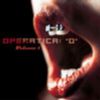 How could they do this? How could anyone take a perfectly wonderful, world-class Opera singer – Maureen O’Flynn – and pair her with a selection of arrangements that barely showcases her voice? I don’t mind that this is mostly Dance music – in fact, I love the idea of classic Opera combined with contemporary forms-but the music reminds me more of Michael Jackson‘s “Thriller” than anything else, and I can’t stand “Thriller.” The few rare glimpses we get of O’Flynn’s talent are rare and spectacular; spectacularly wasted on this. Shame, shame, shame.
How could they do this? How could anyone take a perfectly wonderful, world-class Opera singer – Maureen O’Flynn – and pair her with a selection of arrangements that barely showcases her voice? I don’t mind that this is mostly Dance music – in fact, I love the idea of classic Opera combined with contemporary forms-but the music reminds me more of Michael Jackson‘s “Thriller” than anything else, and I can’t stand “Thriller.” The few rare glimpses we get of O’Flynn’s talent are rare and spectacular; spectacularly wasted on this. Shame, shame, shame.
-Holly Day-
Various – Or Some Computer Music: Issue 2
Label: Or Format: CD
 The eight tracks on Or Some Computer Music Issue 2 step through the processes and processing of various software utilised to manipulate and create music from diverse sound sources. Farmersmanual bring forward two slowly-evolving excepts from alive performance in Belgium, tolling and trilling, chirruping and chiming into mantric spaces of stillness becoming voluminous, then more so again. Density is also the key to Alberto de Campo‘s “Imaon”, where synthetic replications of acoustic spaces and sounds associated with the spiritual aspect of music are constructed into a virtual koan for an (un)free Tibet, swirling melliflously in layers from chomping glitched sonority into more abstracted rhythmic paradigms of computer music.
The eight tracks on Or Some Computer Music Issue 2 step through the processes and processing of various software utilised to manipulate and create music from diverse sound sources. Farmersmanual bring forward two slowly-evolving excepts from alive performance in Belgium, tolling and trilling, chirruping and chiming into mantric spaces of stillness becoming voluminous, then more so again. Density is also the key to Alberto de Campo‘s “Imaon”, where synthetic replications of acoustic spaces and sounds associated with the spiritual aspect of music are constructed into a virtual koan for an (un)free Tibet, swirling melliflously in layers from chomping glitched sonority into more abstracted rhythmic paradigms of computer music.
Jim O’Rourke can be relied on for taking his Mac to the sound sources he feeds into it with a large dose of cybernetic salts: “Like Urine Loves Cold Slate” could have taken its title from a random sentence generator as much as from a volume of decadent poetry. The music matches, bleeping and shuffling elements of brushed-up onetime Jazz riffs, musique culinare (the sounds of pots and pans?), human voices and the detritus of a hard disc defragmenting through the audio output. Atau Tanaka and Eric Wenger choose images as their input devices, passing photos of Nobuyoshi Araki through filters both acoustic and graphic to achieve the more grounded psycho-electronic windward swirls and eventually rhythmic bassy writhings of “Bondage”. The process is not specifically visible in the music, even if the reverse could be said to be true – at least as far as the computer programme is concerned.
Curtis Roads is writing a book on Microsound for MIT, and teaches the manipulation of acoustic particles at the University of California, Santa Barbara. His “Half-Life Part 1” takes these more-than theoretical fundamental bits of sound and makes them turn the glitch-trick in fractal evolutions from snicker and pop into chattering splurges and abstruse rhythms strangely evocative of butterfly-aging lifeforms slithering across virtual surfaces in search of sustenance. Phoenecia provide a handy diagram showing in flow chart form how voice and cello are processed through yet more Macs and software via Or to this disc; their music only reveals any of this information implicitly. By now there must be software fans who can detect the sound of patches in Supercollider much as analogue musos can tell a Strat from a Gibson Les Paul, but “Non-Specific Acoustic Simulation” defies such nerdery by being at once generic and indivisibly unique in it shuffling of breath-beats and slurping glitches into the vanishing point of electro-acoustics.
As for Tom Wallace‘s software, it seems to be set to the same parameters initially, but with the tempo racked up a few notches into a skittering avalanche of those little bits of sound which let the rattling glass and cutlery(?) sample sources emerge in and out of the digital morass. He even slips in the odd bit of idly-picked and strummed guitar or drum machine beat… how retro they sound among the emergent digital dub fragments and the welter of post-boredom tinkerings of “Givingup Goingon” – and how human too.
-Freq1C-
Various – Osmosis
Label: Leaf Format: CD
Sampling tracks from forthcoming releases on one of, if not, the leading UK Electronica labels, with bonus exclusive tracks (all at budget price) Osmosis shows just how far Leaf have come since they were set up to release Boymerang‘s debut single in 1994. Notable too is how global their roster is becoming, with tabla-sampling from New Yorkers/Seattlites 310, Cologne’s (naturally) freakily-funked-out House merchant Beige (and Pole in groove and bass soundclash with Four Tet), and Japanese equally funky Technician Susumu Yokota (though here in semi-acoustic mode). Old label favourites The Sons Of Silence, Richard Thomas and A Small Good Thing (in dustbowl cod-Mex-Western style) are also present, and judging by the tracks presented here, the next year should be an eclectic one for Leaf.
Another intriguing collaboration comes from Lou Ciccotelli with Richard Olatunde Baker as Eardrum, making a percussion-led exploration of Ethnodelic Jazz motifs on a couple of bass-heaavy workouts, again with quite a 23 Skiddoo Funkiness going on. There’s even some slow and smotth flute-attracting suaveness courtesy of Gorodisch, for those who like that sort of thing, and a similarly epic torch song “As Usual (Version)” from Gripper, complete with swirling organs – how things have developed at Leaf…
-Freq1C-
Various – O Superman Remix
Label: ERS/Staalplaat Format: CD
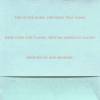 In many ways Laurie Anderson‘s seminal electronic pop hit “O Superman” has been ripe for remixing for many a long year, though there has been the odd cover emerging every now and then. In the case of this collection, the distinction is largely indeterminate and ultimately irrelevant; what it comes down to is nine versions in a wide variety of styles from some of the less obvious choices for such a project – as is rightly to be expected for one involving Staalplaat.
In many ways Laurie Anderson‘s seminal electronic pop hit “O Superman” has been ripe for remixing for many a long year, though there has been the odd cover emerging every now and then. In the case of this collection, the distinction is largely indeterminate and ultimately irrelevant; what it comes down to is nine versions in a wide variety of styles from some of the less obvious choices for such a project – as is rightly to be expected for one involving Staalplaat.
The most club-friendly interpretation is Com.a‘s “To My Friend” mix, where Age Yoshida takes the simple beauty of the original and rinses it out through his laptop, the result emerging as a shiny confection glittering happily around some crunchy software beats. Likewise, the sped-up vocal rhythm of “O Hyperman” from this CD’s compiler Radboud Mens shifts gear into smeared kinetic grooves and time-stretched dynamics, the mood taken down into hesitant expectation by the pervasive layers of drones which fill the space above and below the digital rhythms. The whole builds into an urgent conclusion as the “O Superman” melody and Anderson’s by now denatured robo-lyrics trickle brightly into the mix. Team Doyobi‘s remix uses similar multi-faceted combinations of that famous “huh-huh-huh”, editing the lyrics and basic rhythm into a paineful-sounding chaos of virtual screams and moans, at once mechano-sexualized and inhumanly threatening. Amiga speech synthesis mutters ominously veiled threats from the words of the song deep in the spluttering mix, which evoloves crunchily into a cacophony of carefully-selected disorder with its own internal melody eventually emerging triumphant.
Dutch artist Danny de Graan provides two interpretations, and he also uses the speech-synth as cover artist approach on “O Super Mom”, with the shifting liquid squiggles and drags of the sloooow churning digital-acoustic sounds, which are incidentally all dervied from the intitial “huh” of Anderson’s song. Thanks to the deadpan delivery of the computer’s artificially-emotional voice and the ambient landscape of transiting electronic vehicular activity and curiously mechanical clinks which accompany it, this mix is probably the most unsettling on the compilation, providing a suitable expansion on what was already a dystopian original. As Origin Of Sound, de Graan constructs a more beat-oriented “Chaos Mix”, retaining and re-using more of the original work while staying in less than upbeat mood in a downtempo ripple of breakbeats, ominous pulsations and minor chords.
The real chaos comes in the shape of Massimo‘s version, which bristles with his trademark glitch overloads tweaked into shill brightness and visceral digital spasms of the main “O Superman” theme. Drenched in FX and processing until it buckles under its own weight, for a brief interlude the original melody remains until excoriated constructions return to dish out manifold levels of battering noise. Thankfully, there are also quieter versions, none more so than the gentle cover of the song from Electric Company, which twinkles with slippery bleeps and glitches, Brad Laner‘s emotional take on the vocals Vocoded among the birdsong, a voicemail message from his father and a haltingly abstracted melody which rides gracefully along on his own “huh-huh-huh” rhythm. Frans de Waard of Beequeen et al pushes the track through scratched hard disc in his Freiband guise, making “Superpoem” slip past with several degrees of distance placed between the original and the final minimal result.
Lastly, the Staalplaat Soundsystem speed Anderson up to chipmunk velocity and beyond for some (apparentl) light relief as “Five Diamonds & Two Eyes”, the song exploding into a new dimension interlaced with radio chatter and aetheric cracklings. At this speed, something very sad emerges from “O Superman” on a tide of Morse Code desperation and the results of reducing a long-drawn out paean to a brief set of chords and that pervasive “huh-huh-huh” slipping past almost unnoticed into the glimmering future.
-Freq1C-
Various – Pay It All Back Volume 4
Label: On-U-Sound Format: CD
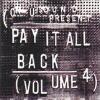 A welcome re-release for 1993’s feast of dub. (God, what a cheesy intro! I’ll smoke some more and try to do better as I go along.) ‘Cuz there was always two kinds of Dub – Dub and the On-U Sound System. Like a collective King Tubby, or a too-stoned-to-be-angry Crass label, they bunged out album after album of fucking blinding dub-related nonsense. From Noah House Of Dread‘s devotional cover of the Neighbours theme tune to the paranoid rants and sheet-metal guitar of Mark Stewart, On-U between them skinned up days and days’ worth of top-quality high- grade dub.
A welcome re-release for 1993’s feast of dub. (God, what a cheesy intro! I’ll smoke some more and try to do better as I go along.) ‘Cuz there was always two kinds of Dub – Dub and the On-U Sound System. Like a collective King Tubby, or a too-stoned-to-be-angry Crass label, they bunged out album after album of fucking blinding dub-related nonsense. From Noah House Of Dread‘s devotional cover of the Neighbours theme tune to the paranoid rants and sheet-metal guitar of Mark Stewart, On-U between them skinned up days and days’ worth of top-quality high- grade dub.
And even their compilations were top. The Pay It All Back series became a kind of Now That’s What I Call Music for people who weren’t wankers, and this one is no exception. The awesome Dub Syndicate open up with “Chapter 4”, and it doesn’t let up. The “golden tonsils” (as it were) of Bernard Fowler grace Strange Parcels‘ reworking of Mark Stewart “High Ideals and Crazy Dreams”. Jalal of the Last Poets preaches his way through “Mankind”, before the legendary Little Annie (Anxiety) leads “Bless Those” while the bass hangs about at a low frequency and gets caned. The late Andy Fairley‘s “Segue” is just plain weird, but kinda cool, and wouldn’t be out of place on some speculative Hawkwind/dub transfusion, and then it’s into the really rather marvellous Twinkle Brothers and the Trebunia Family Band, in which Polish folk music receives the On-U treatment and coumes out sounding fucking mental.
The very odd John Peel favourite “The Legs of Bobby Moore” pops up here, Andy Fairley and Barmy Army getting ripped to the tits at a football match and taking the whole game back into space with them. Doug Wimbish and Skip McDonald kick some serious shit with the brutal “Stop the Clock part 2”, before what the sleevenotes describe as “what sounds suspiciously like a rock out left over from the worst of the Tack>>Head sessions”, Strange Parcels & Basil‘s “Danger”, and, true, Tack>>Head were notoriously patchy, but I think this one’s okay, if not brilliant. It’s pretty cool to see that kind of self-deprecating honesty in an album’s own sleevenotes too. Actually, now I listen to it, that last track’s growing on me – maybe that last bonghit’s just kicked in…
-DeuterOn-E-Mu 90210 lying facedown in a field somewhere-
Various– Play
Label: Sideburn Format: CD
Swiss drum & bass? Why not? No reason at all, except that whatever the origins of the twelve tracks on this compilation, there’s still only limited interest to be found in jazzy samples, wailing vocal trills and sub-orchestral synth sweeps. Selector DJ Minus 8 himself opens with a Wagner-sampling track, “Recently at the Opera”, which staggers over and around fragments of The Ring Cycle with some distinction, but the tone is lowered immediately by the otherwise-competent “Not Enough Love” (Mas-P), which has both an irritating vocal sample and a dull selection of twinkling ambient bleeps working against it. Capitaine Nemo’s “Escape” doesn’t fit the drum & bass subtitle of the record either, being an above-average slice of HipHop rather than anything particularly Junglist.
The number of easy Jazz inflections which afflict tracks by Le Gooster, Differenz et al reveal a goatee-stroking problem of Roni Size proportions: smooth, slick, and unassumingly mellow. Fine for wallpaper music in cafes from Soho to Amsterdam, and unfortunately there’s also the small matter of completely gratuitous, smokey saxophone solos intruding into both Skrupel’s otherwise fine “Reminder” and the ambient breakbeats of A.M.P.’s “Is Isn’t”. At least Bel Air Project stir up some funk motion with the virtual drum solos of “Full Contact”, but head-nodding rather than booty-shaking will probably be the prevalent reaction to most tracks here.
Equally, the promising rolling bassline and two-step breaks of Herbalist Foundation’s “Summertime” are disrupted by a shoddy vocal snippet, and it’s left to the sqittering analogue TripHop-isms of Fatembalo and Super’s slow-burning bass-buzz dubs to provide much-needed relief. Play is an unfortunately uninspiring collection which never rises to any great heights, being content with an air of neo-Jazz smugness.
-Freq N-
Various – Plus 8 Classics
Label: Novamute Format: 2 x 12″
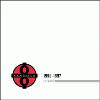 If any record label merits a collection of “classics” Plus 8 Records is surely one of them. The names alone say it all: Richie Hawtin, John Acquaviva, and Kenny Larkin to mention a few.
If any record label merits a collection of “classics” Plus 8 Records is surely one of them. The names alone say it all: Richie Hawtin, John Acquaviva, and Kenny Larkin to mention a few.
Plus 8 was formed in 1990 by Hawtin and Acquaviva. This record – a sampler from the double album – resurrects some of the classics from the first three years. Richie Hawtin appears in many guises. The Sing-a-long favourite “Substance Abuse” by Fuse is on the record – this is Hawtin outside of his Plastikman guise on top form. The record oozes 303 drenched plasticity. Cybersonik brings Hawtin and Acquaviva together along with Daniel Bell for another analogue epic “Technarchy”.
Plus 8 Records is a major landmark on the Techno map. Over a period of seven years, they released some ground breaking music. This record is just a small slice…
-ap-
Various
– Phil Pratt Thing
– Don’t Call Us Immigrants
Label: Pressure Sounds Format: CD
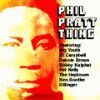
Back in the Seventies, when Reggae and Dub were in their most experiemtal phase, there were producers who have since become iconic – e.g. King Tubby, Augustus Pablo, Lee Perry – and others whose names are more known to the seven-inch hunters of specialist import shops and flea markets the length of Britain’s cities. Phil Pratt is one such, and his Thing is celebrated on a Cd often mastered direct from surviving vinyl copies. This scratchy groove ambience , far from distracting from the music, adds a patina of age and venerable charm to many of the eighteen tracks collected here from the heyday of the early part of the decade, warmth almost oozing from the mixing desk and sound rooms of studios resonating with musical history – Channel One, Black Ark, Randy’s.
With vocalists of the calibre of Big Youth, Dillinger and the unusal stylings of Al Campbell on hand, this disc echoes with history and emotions from Ken Boothe‘s impassioned, quite beautifully sung, “I’m Not For Sale” via Bobby Kalphat‘s melodica-inflected “Raw Roots”, Pat Kelly and Dillinger’s upbeat “Talk About Love” sprightly keyboard-led discomix to the dignified skank of Campbell’s “Take These Shackles”, also appearing as the Sunshot Band‘s “Shackles Dis Yah Dub” version, all sinuous bass rhythms and vocal echo trails. With musicians like Robbie Shakespeare, Sly Dunbar and Chinna Smith on board these tracks, it’s as precise a drum and bass snapshot as could be desired.
As is so often the case, Phil Pratt suffered at the hands of labels in the UK, getting ripped off so much he dropped out of the production business. Britain’s first and second generation Reggae producers were getting short shrift of their own, not just from a post-Colonial society still coming to terms with its loss of empire and power (with all the attendant racism) but also from some of the fans who found the tendency towards novelty cover versions somewhat lame in comparision to the massive output of Jamaican import singles. So, as Adrian Sherwood recounts in the sleeve notes, it came as a stimulating change to have some home-grown talent emerge in the shape of producers like the estimable Dennis Bovell, whose band Matumbi brought UK Reggae into chart success from 1970 onwards. Their “The Man In Me” is a fair example of heavy Seventies Roots, and likewise then-upcoming young groups (who tended to form actual bands rather than being formed from floating collectives of session musicians in the Jamaican manner) like Misty, Steel Pulse and Aswad show off their politically-charged “Suffers” sound here, with the emphasis on Marley-derived harmonies and quite easy grooves on the whole.
 The title track from Tabby Cat Kelly has a sweetly-sung lyric, just about summing up the climate of the times with its plea for equality and justice – a musical part of which encompassed the growth of shared tours and collaborations with the burgeoning Punk movement of the times, laying the groundwork for the end of the century and its post-modern pan-culturalism. Equally redolent of sound-systems and wardrobe speakers and the Rock Against Racism campaign is Reggae Regular‘s “Where Is Jah,” typifying the Rasta influence which accompanied the growth of Black consciousness and struggle in Britain. In all, Don’t Call Us Immigrants buzzes with the energy of a rapidly-evolving interplay of multiculturalism on all sides, and also of an era when important battles were fought and parties thrown, and the musical map of Britain, and also the world, changed forever – for by far the better.
The title track from Tabby Cat Kelly has a sweetly-sung lyric, just about summing up the climate of the times with its plea for equality and justice – a musical part of which encompassed the growth of shared tours and collaborations with the burgeoning Punk movement of the times, laying the groundwork for the end of the century and its post-modern pan-culturalism. Equally redolent of sound-systems and wardrobe speakers and the Rock Against Racism campaign is Reggae Regular‘s “Where Is Jah,” typifying the Rasta influence which accompanied the growth of Black consciousness and struggle in Britain. In all, Don’t Call Us Immigrants buzzes with the energy of a rapidly-evolving interplay of multiculturalism on all sides, and also of an era when important battles were fought and parties thrown, and the musical map of Britain, and also the world, changed forever – for by far the better.
-Antron S. Meister-
Various– Rauschen 14 – Mixed By DJ Rush
Label: Force Inc. Format: CD
 This is quite a hard CD to actually sit down and listen to. It begs to be blasted out of huge speakers in the depths of a club and doesn’t translate to home listening that well. The music is good and banging – if little else – but you really need to be banging alongside it to fully appreciate it. Sunday afternoons no, havinit late night parties yes.
This is quite a hard CD to actually sit down and listen to. It begs to be blasted out of huge speakers in the depths of a club and doesn’t translate to home listening that well. The music is good and banging – if little else – but you really need to be banging alongside it to fully appreciate it. Sunday afternoons no, havinit late night parties yes.
The music itself is OK, it tends to fall around the-beat-don’t-stop techy Housey area with numbers from the likes of Ian Pooley, Thomas P. Heckmann, and DJ Rush himself. It’s minimal, but its not the kind of minimalism that staggers you with subtle changes, or creeps up on you unexpected, it’s the kind of minimalism that demands pogoing.
If you’re going to throw a party and can’t get your hands on a DJ, Rush could well come to your aid. Otherwise … well, you’ll find it as hard to listen to as I did – and I like Techno.
-T. Mephistati-
Various – ********* Records, Tokyo: The Remixes
Label: Bungalow Format: CD,2LP
Readymade Records is the label run by Tokyo’s most famous exponents of the quirky Pop beat, Pizzicato Five, strangely represented as *********. This is their remix album – or rather two remix albums combined into one by Berlin DJ duo le Hammond Inferno, the first being versions of the theme music from the Manga show Lupin The 3rd (titled Punch The Monkey) to celebrate his 30th anniversary, while the second features the label’s artists rejigged by sundry international DJs and producers.
“The Theme from Lupin The 3rd” gets tackled from various decades: the “’78 Walther P99” mix of Yuji Ono‘s title music by United Future Organization‘s Toshio Matsuura is in a suitably Jazz-Funk spy-movie mood, with bongos, hammonds and brass sections flying all over the place. Former Blow Up resident DJ Masanori Ikeda takes Ono’s “’80 Latin Love & Peace Calcutta” through further electro-gunshot and siren paces, while Pizzicato Five and Fantastic Plastic Machine have Takeo Yamashita‘s more Sixties-sounding composition(s) as their source, recasting it by turns into a furious swirl of chugging breakbeat Mambo and Loungecore fuzz’n’flutes choral Mashed Potato-inducing psychedelia respectively. All quite exhausting, if the programme matches its music, and fortunately each mix is scattered at strategic points in the album to avoid an overdose of driving car-chase music.
As for the Pizzicato Five mixes, they fall into the orchestral stomp (by Electropez), high-energy sampladelic breakbeat Funk (le Hammond Inferno) or softly-sinuous Easy Listening phase-out (Maxwell Implosion) modes (generally with a Latin beat), though Thievery Corporation‘s transformation of “Porno 3003” opts for a relaxing low-end throb. Likewise FPM are taken on a Big Beat ride by Japanese group Escalator Team, though the oddest mix on the album has to be by Tokyo Ska group Rude Bones of “Please Stop! (Ra Ra Ra?),” which skanks the collection to a Two-Tone close.
-Freq1C-
Various – A Rendering Of The Veil
Label: Beta-lactam Ring Records(US)/Beta-lactam Ring Records(UK) Format: CD
 This compilation of what might best be termed uneasy ambience (in the widest possible sense) and estranged texture opens with the shifting delay patterns and recursively-spiralling electronic noises of Spiral Limbus‘ “Genes For-bid”, setting the echoing tone for what soon emerges as an hallucinatory listening experience overall. Even if their name is a bit of a tongue twister while fully sober, Brekekexkoaxkoak pursue similar themes of nutted edginess and dropped-down low recovery-position subliminals. Rick Reed‘s two pieces, “Waddittu” and “Ottomia” go for the close-miked sound of just about what it sounds like being dragged slowly through a metal pipe backwards wearing hob-nail clothing and a subsequent surfacing into a confined space with limited air to breathe and no obvious means to scrabble an escape respectively. These two pieces are so close as to be dense in their depiction of a sense of dread without recourse to music per se as to be highly disturbing.
This compilation of what might best be termed uneasy ambience (in the widest possible sense) and estranged texture opens with the shifting delay patterns and recursively-spiralling electronic noises of Spiral Limbus‘ “Genes For-bid”, setting the echoing tone for what soon emerges as an hallucinatory listening experience overall. Even if their name is a bit of a tongue twister while fully sober, Brekekexkoaxkoak pursue similar themes of nutted edginess and dropped-down low recovery-position subliminals. Rick Reed‘s two pieces, “Waddittu” and “Ottomia” go for the close-miked sound of just about what it sounds like being dragged slowly through a metal pipe backwards wearing hob-nail clothing and a subsequent surfacing into a confined space with limited air to breathe and no obvious means to scrabble an escape respectively. These two pieces are so close as to be dense in their depiction of a sense of dread without recourse to music per se as to be highly disturbing.
Eric Lanzillotta and Dave Knot continue the mood of Musique Concrét improvisation/dissection of the interior workings of their instruments or utensils as the case may be. The sound of the microphone itself in collision with whatever thuds, scrapes and burrs they can lay hands on does what all the best of such explorations should: dissociates sound from the obvious sources; does what the title of this compilation suggests, and lifts that veil or normality for a while through sound. Karl Miller does this too on his incongruously-named “Toe Tapper”, but to much more restrained, tightly leashed-back effect. His slippery synth pulses work through minimal accretions into a build-up of reverb-led rhythm and squeak without taking on anything much like a groove for long without sending in the low-end disruption team to make things queasily avant-garde and bleepily noisy.
It’s left to the Legendary Pink Dots to produce anything remotely resembling melody, via the alarmingly creaking, squittery Funk of “On The Swords”, which sounds like a live jam where the analogues were given full steam ahead into a strangely scratchy workout of indeterminate direction. Last up for the coast away from the stranger realms of soundscapes and soundscrapes is Steric Entropy‘s “Green Pants”, which only ensures the levels of discordant synthesis are properly unwholesome to those holding their breath in anticipation of an early release from sonic distopia. A Rendering Of The Veil dissipates into quietude, and apparent acoustic normality is resumed. Best take another dose, then, and do chill out to this album – with a warning to mind the old head….
-Antron S. Meister-
Various – Resonance Volume 7, Nos 1 & 2
Label: London Musicians Collective Format: Magazine+CD
Resonance is the house publication of The London Musician’s Collective, purveyors, instigators and disseminators of the finest in experimental music for the last few decades, and the people to thank for nurturing so much of what is now accepted practice in electronic, Jazz, Improv and other critical sidelines to the mainstream. What’s more, they’re still in there, keeping the debates about theoretical as much as artistic elements of what it is to make and absorb music in a changing century alive and heated, within the letters pages, record reviews or essays as appropriate.
Each issue comes complete with a CD relating to the themes explored within the magazine – in these particular cases they are Maverika (Vol 7 No.1), concentrating on American outsider composers including Terry Riley, Pauline Oliveros, Jim O’Rourke and La Monte Young, while No.7 is Taking The Pulse Of The World’s Musics. In both cases there is plenty of (sometimes contentious) discussion of the ins and outs (and even passing) of their subjects – the …World’s Musics issue is particularly fascinating, ranging from Borneo via Siberia to English folk (this latter in a notably different take on the current state of a fast disappearing form being eaten up by creeping commercialism on one hand and disinterest on the other).
The CDs are especially welcome when discussing musics which the average person will not be likely to have come across, with some fabulously evocative pieces once again accompanying No.2. Both CDs make the magazine well worth their moderate selling price too, with original live recordings and commissioned pieces from Thurston Moore & John Tilbury, Oliveros, John Cage Musicircus et al to challenge and skull-scrape in Issue 1. As resource as much as entertainment is where the benefit of Resonance lies; crucially balanced between the financial pressures of a news-stand publication and the exuberent scholasticism of the specialist magazine, the erudition and enthusiasm on display here is a vital part of any healthy music scene. Rarely glib but often stimulating, Resonance is nothing short of essential in the darkling days of global musical commodification.
-Antron S. Meister-
Various – Boyd Rice Presents Music For Pussycats
Label: Caciocavallo Format: CD
 Yes, this really is an album of favourite Sixties girl group songs selected by the bad boy of experimental noise, and Social Darwinism’s very own Avant-Lounge crooner, Boyd Rice. Somehow, in the extensive sleevenotes, Rice still includes references to only the strongest surviving in Pop music, but his intentions in bringing this collection to the world are entirely abmirable, rescuing a selection of curiosities and blatantly gleeful songs for the CD era from their obscurity in the discographies of record collectors and specialists.
Yes, this really is an album of favourite Sixties girl group songs selected by the bad boy of experimental noise, and Social Darwinism’s very own Avant-Lounge crooner, Boyd Rice. Somehow, in the extensive sleevenotes, Rice still includes references to only the strongest surviving in Pop music, but his intentions in bringing this collection to the world are entirely abmirable, rescuing a selection of curiosities and blatantly gleeful songs for the CD era from their obscurity in the discographies of record collectors and specialists.
From the brash treble rush of Diane Ray‘s “Please Don’t Talk To The Lifeguard” with its longing choruses reflecting on the muscular hunk of the title via the lush string and horn arrangements of Susan Rafey‘s “The Big Hurt”, Music For Pussycats soon sweeps everything before it in a massive Spector-esque wall of sound. It’s clear listening to this album where Rice found some of his inspiration on his less martial releases such as Music, Martinis and Misanthropy and of course as Spell with Rose McDowall. Cheesy, schmaltzy and even twee as some of the songs in the collection may be, it’s ultimately a tribute to the talent of the assembled singers from Priscilla Paris to Honey Ltd. (whose “The Warrior” is a remarkable anti-Vitnam song about a lost soldier sweetheart which, as Rice notes rather gleefully, includes the lyrics “We must kill more people/Strong Men are what we need”) that the overpowering swoon of emotional uplift and energy soon becomes quite infectious, just as good Pop should be.
-Linus Tossio-
Various – Ringtones
Label: Touch Format: CD
 Once again Touch are ahead of the game, bringing out a selection of 99 (in/un)famous name artistes’ idea of how an MP3 mobile ringtone should sound just as the phones are about to become more of a widespread reality. Some of the funniest/more alarming selections of the 177 snippets included to brighten up the commuter carriages, theatres and bus platforms of cities worldwide come from Chris Watson‘s barking, chirping and ullulating field recordings of animals grunting, groaning and whirring. Other options include babies wailing, radio weather forecast fragments, string introductions and anything else which can be sampled, looped and put to the vibrating alert in trouser pockets everywhere.
Once again Touch are ahead of the game, bringing out a selection of 99 (in/un)famous name artistes’ idea of how an MP3 mobile ringtone should sound just as the phones are about to become more of a widespread reality. Some of the funniest/more alarming selections of the 177 snippets included to brighten up the commuter carriages, theatres and bus platforms of cities worldwide come from Chris Watson‘s barking, chirping and ullulating field recordings of animals grunting, groaning and whirring. Other options include babies wailing, radio weather forecast fragments, string introductions and anything else which can be sampled, looped and put to the vibrating alert in trouser pockets everywhere.
Want to surrealise your life? Add a Gilbert And George spoken word or two or three or even four! How about an extracorporeal “Hello”, Leif Elggren‘s cry for “help” or an ominous washing machine to counterpoint the spin of the drum in the launderette? Ringtones for every occasion, even if they might be ones of an unexpected nature – so who better to provide a sax run than Evan Parker? Chimes and drones, trills, mechanations and exclamations from New Order to Mika Vainio, calls to prayer from the downtown muezzin on the move to engine throbs and flying saucer trills, orgasms, air-raid sirens, wedding marches, static pulses, military bands and Rockouts. There are plundered choral telephonics from People Like Us, metallic noise deconstructions from Hazard and the Theremin “Therering” from Atau Tanaka to summon the recipient too. Chillingly, 11.09 provide “09.11”, with it’s recorded message warning “all circuits are busy now; please try your call later”.
Some choose to use the form for sardonic titles, like Main‘s crackly micro-burst tranmissions with such classics as “Where The Fuck Are You”, “I’m On The Train” and “My Battery’s Going”. DJ Guacamole provides “A Concise History of Californian Rock Music in Under 5 Seconds” – set it on repeat for the full subliminal ultra-speed tape loop tone to impress your friends! – and likewise with the fragments of Åke Hodell‘s “1234” and Law & Order” for the best effect. There’s so many options included here that it just remains for the damn things to go on sale to pump the tones into the memories and set about the general public with – though, alongside the warning essay on the less savoury aspects of mobile phone production, Thomas Brinkmann has thoughtfully provided a (now quaintly old-fashioned) type-in ringtone for immediate use. Now if only that geezer with the gigantic mobile on Trigger Happy TV could be sampled shouting “HELLO!!” – but then again, it’s an almost dead cert that he will be.
-Antron S. Meister-
Various – Ringtones
(A Second Opinion) “…Respect to everyone who refused to be on it because they hate mobile phones or were too busy to contribute.“
The tenor of the times. Or the tones, as the case may be. Ambivalence follows hot on the heels of this particular kind of computer love – but I think it’s fucking great, this whole thing. It’s rather reminiscent (but in no way derivative of) the Big City Orchestra sound effects catalogues series of CDs, and, in a lesser way, the library music of Joel (Brainticket) Vandroogenbroeck, et al. Further, it makes a fab and poptastic companion piece to The Answering Machine Solution compilation CD released by Staalplaat a few years ago.
Oh, and it’s a metric shitload of sounds you too can program into your cellphone. We have enough noise pollution in the world without some of it coming from our team. Go, team! This includes the usual Touch / Ash International roster (Chris Watson, Bruce Gilbert, Disinformation, S.E.T.I., etc.) and entries from Kaffe Matthews, C.M. von Hausswolff, Gilbert & George, New Order, et, cetera, and so on. It smells like fresh cardboard and the moire of the cover is not the black that carries your fingerprints on it until kingdom-fucking-come (when, exactly?). All good things. Highly recommended because it touches on the first of three fundamental human responses (humour; the other two being sex and violence) to spur the modern response of can you get that?
-David Cotner-
Various – Rough Trade Shops Electronic 01 Sampler
Label: Mute Format: 12″
 Culled from the Electronic 01 double CD set which celebrates 25 years of Rough Trade Shops, this sampler 12″ sways into view with the deranged lounge Bossanova sounds of Rod Freeman and The Blue Men under the direction of Joe Meek with their “I Hear A New World” from 1960. Thanks to a combination of chipmunk voices, plangent guitar and a steady coffeeshop rhythm, plus crooning which speaks of an electronic future as the brief use of oscillators fades out, it’s a strange trip into the past of futuristic Pop. Likewise the steady beat and swarming analogue buzzes of “Hot On The Heels Of Love” from Throbbing Gristle in their post-Abba Pop guise circa 1978 steers well clear of the experimental danger the group could create, and instead presages the sleazy joys of Chris & Cosey, the Electro-rave phases of Psychic TV and a million darkling Synthpop shimmys to the crack of an electronic whip.
Culled from the Electronic 01 double CD set which celebrates 25 years of Rough Trade Shops, this sampler 12″ sways into view with the deranged lounge Bossanova sounds of Rod Freeman and The Blue Men under the direction of Joe Meek with their “I Hear A New World” from 1960. Thanks to a combination of chipmunk voices, plangent guitar and a steady coffeeshop rhythm, plus crooning which speaks of an electronic future as the brief use of oscillators fades out, it’s a strange trip into the past of futuristic Pop. Likewise the steady beat and swarming analogue buzzes of “Hot On The Heels Of Love” from Throbbing Gristle in their post-Abba Pop guise circa 1978 steers well clear of the experimental danger the group could create, and instead presages the sleazy joys of Chris & Cosey, the Electro-rave phases of Psychic TV and a million darkling Synthpop shimmys to the crack of an electronic whip.
Christian Zanesi‘s “Marseille 2” shows that the distance between the early days of electronic squeaks and tones to 1998 can be quite relatavistic. Unintelligibly-processed words squitter out between the cracks in atonal hiss and shimmers which pulsate below the normal range of listening frequencies, and this brief interlude proposes the question – is there anything there beyond the noise itself? Does there need to be? Arovane might not care to know, instead bringing a perky brightness to their glitch rhtyhms, just like a certain duo from Manchester and a South Western maverick owner of a used armoured car did all those years back in the Nineties. Fair enough, there is much more than a little discernable difference to the works of Autechre and Aphex Twin (both of whom naturally feature on the complete Electronic 01 CD set) in the soothingly warm bass, twittering blips and ringing, vaguely Jazzy arrangements of deracianted samples, it just sometimes feels like there’s hasn’t been a huge amount of real progress in this area for a good while.
So to Stereolab, whose “Freestyle Dumping” encapsulates everything about the band around ’96 from swirling organs, massed keyboard wall of electronic sound and perky rhythms, to the “ba ba bas”, “wooooooo-oos” and Francophone lyrical bounciness which drives listeners to fevered enjoyment or distraction, depending on taste. On the evidence presented on this disc and its accompanying complete tracklist, the full selection of what’s given the UK’s best-known independent record shop its collective electronic kicks for more than two decades is well worth investigating.
-Freq1C-
Various – Scissors
Label: Play Format: CD,2LP
This is the second Dub compilation from Tokyo based label Play. It follows on from their successful album Stone. Scissors features tracks from artists such as Luke Vibert and DJ Spooky. The album explores and expands the new skool Dub territory mixing in elements of breakbeat Funk, Electro, and Detroit Techno. Burnt Friedman‘s “Our Definition of XYZ/Take 1” has moments of ambient Loungecore amongst the infinite Dub delays. Quante Jubila, who are Play’s own A&R director Jeff Hammond alongside Takuya Matsumoto, come pretty close to the mechanised Soul sound of Detroit Techno, but none are more Electro or Detroit than Bongoloid‘s “3 Way Blubberball”. This track deserves a prize alone for the name. The result is a good and highly listenable new skool Dub compilation.
-s5000-
Various – Style Scott Presents RAS Showcase
Label: Lion & Roots Format: CD,2LP
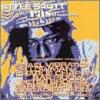 Marking the moment when Reggae went digital, Dancehall tends to get forgotten in circles beyond the genre itself, so Style Scott, drummer with the Roots Radics on all the tracks here, has selected some favourites. Released on Scott’s own Lion & Roots label, the production duties are largely the work of Doctor Dread, AKA Gary Himmelfarb of Real Authentic Sound Records in New York twenty or so years ago. Not surprisingly, there’s often a close affinity with the Dub Syndicate sound of the Eighties as it’s basically the same backing band, and the variation comes throguh with the vocalists – Israel Vibration, whose “Soldiers Of The Jah Army” opens the set with a finely harmonised melancholy. Key ingredient on this collection are the Dub versions of each track, with mixes from Scientist, Jim Fox and Mad Professor and the digital sounds of all those drum machine presets soon becomes a keynote of the record. Peter Broggs‘ eco-agricultural praise of the herb and the eccentric wavering vocal delivery of Ras Pidow make for intriguing, smoke-fuelled stepping in a squiggly technical style. They may not be well-known Reggae names in all parts, but Yellowman certainly is, and his “Wild Wild West” is of more than just historical interest for its characteristicly arch rap and reverbed mechanical beat.
Marking the moment when Reggae went digital, Dancehall tends to get forgotten in circles beyond the genre itself, so Style Scott, drummer with the Roots Radics on all the tracks here, has selected some favourites. Released on Scott’s own Lion & Roots label, the production duties are largely the work of Doctor Dread, AKA Gary Himmelfarb of Real Authentic Sound Records in New York twenty or so years ago. Not surprisingly, there’s often a close affinity with the Dub Syndicate sound of the Eighties as it’s basically the same backing band, and the variation comes throguh with the vocalists – Israel Vibration, whose “Soldiers Of The Jah Army” opens the set with a finely harmonised melancholy. Key ingredient on this collection are the Dub versions of each track, with mixes from Scientist, Jim Fox and Mad Professor and the digital sounds of all those drum machine presets soon becomes a keynote of the record. Peter Broggs‘ eco-agricultural praise of the herb and the eccentric wavering vocal delivery of Ras Pidow make for intriguing, smoke-fuelled stepping in a squiggly technical style. They may not be well-known Reggae names in all parts, but Yellowman certainly is, and his “Wild Wild West” is of more than just historical interest for its characteristicly arch rap and reverbed mechanical beat.
Barrington Levy takes Rootsier directions with his emotive “Jah A The Creator”, perhaps more of an acquired taste, and Brigadier Jerry shows off his “Lyrics Of Mine” in rolling, keening style with a toasty melodic warmth. There’s a Deejay run through of “General” from Charlie Chaplin to keep things partified though with a particularly splendid Jim Fox version, and again and again the shifting tendencies from Roots to the origins of Ragga can be discerned on the tracks showcased on the album.
-Antron S. Meister-
Various – Rhythmic Anthology Volume 01
Label: Secret Level Recordings Format: CD
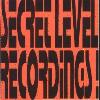 Banging techno is one of the constants of the universe. If Einstein had only been born half a century later, he would have been forced to modify the theory of relativity. Rhythmic Anthology Volume 01 from Secret Level Recordings falls into the fucked up Acid Techno category of compilations, like an Acid Fever compilation without the LSD tab sleeve. This is the torture ground of analogue synthesis where pained and distorted squeals are wrung out of synthesisers.
Banging techno is one of the constants of the universe. If Einstein had only been born half a century later, he would have been forced to modify the theory of relativity. Rhythmic Anthology Volume 01 from Secret Level Recordings falls into the fucked up Acid Techno category of compilations, like an Acid Fever compilation without the LSD tab sleeve. This is the torture ground of analogue synthesis where pained and distorted squeals are wrung out of synthesisers.
This compilation includes tracks from Bleacher, Chroma, Daemon X, Man-Machine Connexion, and Neural. The two tracks by Bleacher, “Consideration of the Future” and “Chrome Dome”, are my personal favourites from the compilation. Both tracks have a slow, nasty, and dirty quality that’s appealing (to me at least.) Chroma is the most banging analogue acid Techno, and after that the compilation heads out towards some fearsome and mutilated areas of the form. Functionality demands the utmost volume in this case. At least you know your tinitus is well earned with this kind of assault.
-AP-
Various – Select Cuts From Blood & Fire
Label: Select Cuts Format: CD
 Echo Beach could hardly have chosen a better label for the fourteen remixers who contributed to this album to draw on for source material from the vaults of Dub (except maybe Pressure Sounds) for their Select Cuts remix series. With classic works from the likes of King Tubby, I Roy and Tappa Zukie as the starting point, Select Cuts From Blood & Fire emerges as one of the best Reggae remix albums. In the world. Ever.
Echo Beach could hardly have chosen a better label for the fourteen remixers who contributed to this album to draw on for source material from the vaults of Dub (except maybe Pressure Sounds) for their Select Cuts remix series. With classic works from the likes of King Tubby, I Roy and Tappa Zukie as the starting point, Select Cuts From Blood & Fire emerges as one of the best Reggae remix albums. In the world. Ever.
How could anyone go wrong with Yabby You‘s “Conquering Lion” as the basis of a track? Smith & Mighty and Groove Corporation liked it so much, they both remade it in their own stepping digital image, the former cascading the breaks in a wash of echo and a supremely tasty bass rhythm, while G-Corp make a more relaxed versioning featuring some nifty scratching and a snippet of Horace Andy‘s vocal from “Youths Of Today” – which itself is made over by Kaleidoscope. This is quite a feature of Select Cuts… – fragments of one track such as Keith Hudson‘s vocal “I’m Alright” will crop up on Pressure Drop‘s stunningly groovy Drum & Bass rinse-out “When The Three Nines Clash” which uses elements from “Version 78 Style” by Glen Brown & King Tubby, and the following mix of the same track by The Orb in completely different, smoke-infused style.
Sample-spotting is facilitated by the comprehensive sleeve notes from Blood & Fire and one of the great UK Reggae fans and radio DJs, the ubiquitous Steve Barker – but this is largely of academic interest. What makes Select Cuts From Blood & Fire such a pleasing record is the flow of the overall mix, as festival stalwarts Dreadzone, heavyweight skankster Nick Mannaseh or the warmly ambient Sounds From The Ground tweak their sliders, faders and samplers into a familiar bassload courtesy of source material of such high quality the results are even better than could have reasonably been expected. The aforementioned re-appearance of samples, vocal or instrumental, just adds to the delicious confusion until a whirl of timestretched Dub pleasure is acheived.
This album stands out precisely because its compilers and remixers have a deep love of their subject matter – from the Stereo MCs to Small Axe vs. Terminal Head (AKA Ruts members Dave Ruffy and Segs Jennings) via ex-Renegade Soundwaver Danny Briottet in his energetic Subsonic Legacy guise and Count Dubullah of Translobal Underground – each and every remix oozes respect. This is one of those compilations where the individual artist, original or remixer, disappears into the whole, one which demands constant repeat, rewind and shuffle play.
-Freq1C-
Various – Select Cuts From Blood & Fire Chapter Two
Label: Echo Beach Format: CD,2LP
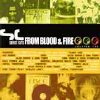 Once again, the selection of remixees of classic roots and dub tracks from the Blood & Fire back catalogue of (mostly) Seventies re-issues on Select Cuts 2 can hardly be faulted. As with Chapter One, the mix flows from one track to another, largely as is to be expected in Digital Roots style, though elements of psychedelic Technoid synth phasings make the odd appearance, and Kid Loco‘s “One Arm DJ Block Party Mix” of Morwell United Meets King Tubby‘s “Morpheus Special” gets the HipHop scratch treatment on the basic rhythm.
Once again, the selection of remixees of classic roots and dub tracks from the Blood & Fire back catalogue of (mostly) Seventies re-issues on Select Cuts 2 can hardly be faulted. As with Chapter One, the mix flows from one track to another, largely as is to be expected in Digital Roots style, though elements of psychedelic Technoid synth phasings make the odd appearance, and Kid Loco‘s “One Arm DJ Block Party Mix” of Morwell United Meets King Tubby‘s “Morpheus Special” gets the HipHop scratch treatment on the basic rhythm.
So among the heavyweight stepping of Zion Train (who turn King Tubby, Soul Syndicate and Prince Alla‘s “Great Stone” into a festival-friendly post-Old testament chant), Leftfield (their excellent “Lambsbread Dub” follows naturally from Nick Mannaseh‘s equally booming “Lambsbread J Outernash”) and Apollo 440 (making excellent sampladelic Dub time of Yabby You‘s “Rally Dub”) comes the surprise jolt of Black Star Liner‘s versioning of Prince Jammy‘s “Step It Up”. Taking the Eighties digital turning point of the “Sleng Teng” bassline and flavouring things with a robotic spice of stuttered Vocoded lyrics, subtle sitar and a guest sampling from Glen Brown, their track in possibly the only one on Select Cuts 2 to startle.
There’s Drum & Bass tweakings and stylings too, and the combination of breakbeats and thundering Dub bass shows just how the genre can really work to glisteningly delerious effect on tracks like the doing over of Prince Alla’s “Lot’s Wife” from Iration Steppas Vs Kitachi and Plexiq‘s relaxed trip over Linval Thompson‘s “Twelve Tribes Of Israel”. But most prefer to keep a respectful control on any tendencies to go overboard, and perhaps this is the only caveat – and a minor one – that no-one goes into the outer reaches much beyond expectation. Still, the artists homage does them credit, and there’s no shortage of invention when it comes to spreading the extended echo and bass warmly around the programmed and sampled percussion licks and rhythms.vocals and brass sections of the likes of Mr Scruff, Dubphonic (who bring a meandering psych guitar solo to Thompson’s “Jah Jah Is A Guiding Star”) and the mellow grooves of Seven Dub‘s slo-mo take on Horace Andy and King Tubby‘s “Guidance Dub”. Still, Jah Wobble doesn’t bother sampling much of I-Roy‘s “Double Warning” beyond the intor, preferring instead to do a cover with that characteristic bass sound to the fore and some ethnodelic horns weaving their trance motions around the tune.
Roll on Chapter 3.
-Freq1C-
Various– Solar Volume 2
Label: Soleilmoon Format: CD
Subtitled A Music Travelogue, Solar Vol. 2 collects environmental, experimental and improvised sound sources in a genre-avoiding journey through imaginary and real sonic spaces. Scanner is on fine form, making up for the dullness of some recent releases with a Linguaphone-sampling French-based piece which recalls some of his early mobile phone pieces with its combination of curiously-echoed voices and unsettled backdrops. Michael Prime pursues the bioacoustic recordings he has previously expoloded both as part of Morphogenesis and solo recordings, this time using the electrical activity of a clump of Honey Fungus as his main sound source for “Armillaria”. The result is rather insect-like, and overlaid with developing patterns of mechanical and environmental sound, becomes deeply engaging without straying into ambient mush.
It’s the recording of the interior of the Taj Mahal by Andrew Hulme however, which stands out as the CDs highlight. Possessing phenomenal acoustics, the hallucinatory effects generated by the building’s natural reverb throw back the chatter and clatter of the tourists in waves of dizzying echoes. Dissociated from physical presence in Agra, the effect of listening to this piece can be wholly disorienting – a full-length CD of the interior would be an interesting, if challenging, listen. Hulme’s recording of a Bangkok Buddhist Prayer Ceremony is almost an audio postcard by comparison, conveying a sense of place, but with little lasting impact, and fading irritatingly before the prayer is completed.
Dallas Simpson’s “Adoration, First Movement” is also an environmental recording, in this case of a journey through Nottingham, but despite its avowed theme of spiritual communion with objects through sound, essentially it remains a walk in the park, with percussion. Equally, Freeform’s “Paving”, while initially diverting, lacks substance, and it falls to Eddy Sayer’s fusion of multicultural riual and ceremonial percussion with subtle studio electronics to provide the album’s most rhythmic moment. Occasionally soporific, Solar 2 is best listened to in a state of semi-consciousness (or perhaps in an isolation tank), where its blend of natural and processed sounds becomes, literally, entrancing, and the longuers part of the process.
-Antron S. Meister-
Various – Sonig Comp
Label: Sonig Format: CD
Sonig Records, home to the less commercially-oriented, more experimental elements of Mouse On Mars and related projects such as Lithops, bring forth their multiplying stable of Zero-Decade bleeps and blends from artists who are sometimes also themselves and friends. These include of course such well-known collaborations as Microstoria (Jan Werner from MoMars and Markus Popp of Oval) who shimmy gainfully from the distended tracks of CD bumps into a steam-cleaned and re-rinsed electronic continuum of stuttering anti-ambience. Other identities assumed include Dü, which is Werner and F.X Randomitz making the seemingly random appear out of the actually arranged, while Werner’s Lithops track “Me We” is set loose with the aim of making people grin and groove to its third-gen Reggae deep-bassline and smartly stepping keyboard melody.
Mouse on Mars themselves are in beat-mangling mood, persuading the bare bones of sample-sequences to jump through not only the expected Dubspace hoops, but some prickly multi-layered resampling ones as well. “Syc” emerges as a variagated Gameboy theme as done by a producer not only with their hand on the fast forward, but scratching it erratically too, with queasily infectious results. New Sonig signings Scratch Pet Land are in Electro jam-confusion mode, serving up hypermodern Avant-Noodle snippets in such a way as to undercut the regularized notions of rhythm and melody with some groaning panache, and in similar vein C-Shulz & Hajsch conjour their “Compilation Track” from a Concrète wall of sirens, carhorns and Electro-Acoustic streams – it’s rather like being stuck in a heavy traffic jam with a heavily distorting radio signal warning of impending aural explosion. Vert provides possibly the most unusual piece though, and one which stands out almost eccentrically from the others thanks to its use of a simple piano line offset to distractingly benign effect by some low level electronic playfulness before breaking into a squeaky rush towards the coasts of Electronica. These areas are also explored by Wang Inc.‘s shuffling proposal for the slo-mo benefits of music-box games and warmly-blooming bass frequencies, to largely soothing effect.
Comp is not only Sonig’s first CD issue but a pause before setting off into the heady spaces of further artist albums on compact disc beyond their previous vinyl excursions. Showcase or statement of intent, it’s also a damn good listen, convoluted and contrary and very much of these refreshingly active Electronic times.
-Linus Tossio-
Various – Soundscapes Be)for(e 2000
Label: Soundscapes Before 2000 Format: 2CD
Selected by the jury at the Soundscapes Be)for(e 2000 festival held in Amsterdam during late November 1999, this double CD set documents the prize-winners’ entries. As the accompanying booklet notes, the aim of the festival’s main originators, the Centre For Electronic Music, is to investigate the Soundscape as the phenomenological process of might elsewhere be termed ambient musics; to take the compositional aspects away from notions of individual musical genius into collaborative emergent properties of sounds arranged rather than necesarily inspired. Rather like the cinema or radio plays, soundscapes act upon the audience in a different way to music made from notes and melodies, telling stories, guiding the listener along pathways into other worlds, and often made as collaborative works wich in some cases, here and in other forms, are redolent and dependent on the sounds or sights of specific locations.
The five pieces here take that dictum to heart, showing their efforts as the placement of real-world sounds into a new context, not always in the jump-cut or accretional context of Ambient, which aims to work in the arena of sound as trigger for emotional or psychological states alone, but to have more impact as a process, a narrative. Water does burble and play; children do call, birds call, intruments are played – this much is shared on the surface with Ambinet’s chill-out purpose. True enough, any track from this set would work ideally as reflective, headphone fodder, soothing, enveloping or calming as required.
Most evocative however, is Sibylle Pomorin‘s Prayer for the Sun Before Travelling, a radio piece setting a modern development of Aztec poems and spells (read in the original Nahuatl on location) among the filed recordings of Mexico and arranged by Pomorin into a fascinating travelogue, slipping from pastoral village sounds through braying donkeys and into flute, percussion and soprano voice arrangements of simple elegance. With pieces working on as many levels as these, Soundscapes Be)for(e 2000 makes some interesting manouvres in along the peripheries of several forms, slipping the process if not necessarily the sounds and meanings themselves into the background, sometimes seamlessly entering altered states of perception along the way.
-Antron S. Meister-
Various – Star Switch On
Label: Touch Format: CD
 Taking Chris Watson‘s field recordings of wildlife on Outside The Circle Of Fire and Stepping Into The Dark as their starting point, six artists were ask to do what they willed with the source material, partly as a resonse to the observation that Watson’s recordings of animals bore a certain relationship to the glitchery emanating from musicians’ and sound artists’ laptops.
Taking Chris Watson‘s field recordings of wildlife on Outside The Circle Of Fire and Stepping Into The Dark as their starting point, six artists were ask to do what they willed with the source material, partly as a resonse to the observation that Watson’s recordings of animals bore a certain relationship to the glitchery emanating from musicians’ and sound artists’ laptops.
Mika Vainio‘s crackling minimalism is a sparse abstraction of Outside The Circle Of Fire into a hollow-filtered rise into dense arrival at a point of Zen fulfilment. Philip Jeck brings two of the avian subjects of the same disc together as foregrounded loops and dubs as electrical background noise crepitates in asynchronous reverbed parallel to a fragmentary melody to rumbling, hallucinatory effect. “Pannonique” is Fennesz‘ channelling of “Mozambique Nightjar” by way of valves into a piece which is unnervingly similar to the modulation and resonance adjustment of an analogue synth, a placid pastorale which peaks into a short sharp dissonance.
“Goat Behaviour” provides AER with a rhythmic source of clattering bells and the deep, rumbling wingbeats of owls to create a suitably Pannish piece of caprice, the hoots resonating eerily into the jangle. Hazard uses hyenas and deathwatch beetles for his measured “Debugged”, where warm plateaux of low-end wash to the swarming irritant of electronically-treated insect life and the arpeggiating laughs of the scavengers; likewise Biosphere‘s cicada and bird choral arrangements flicker into life as a multi-layered evocation of circadian rhythms on “Night & Dawn”, charging the result with a celebratory joie de vive.
To compare and contrast, Watson also contributes two new recordings: timber wolves howling hungrily in the forest as they hear a human hunter’s rifle signal a new source of meat, and the voices of animal herders in Rajasthan carried and Dopplered on gusts of warmed air as dusk approaches, and the interplay of environment with inhabitants both human and avian again reveals the music of the ecosphere in all its glory – perhaps even to the comparative sdetriment of the human rearrangements on Star Switch On themselves.
-Richard Fontenoy-
Various – Staubgold
Label: Staubgold Format: CD
 This CD came to me via a subscribers copy of The Wire, though it is also available free with any order from Staubgold if you don’t happen to subscribe to that august publication. Staubgold is a label which specialises in a variety of , mostly, electronic/experimental musics and these 14 tracks provide a range of different styles that may induce you to try full length CDs from some, if not all, the artists.
This CD came to me via a subscribers copy of The Wire, though it is also available free with any order from Staubgold if you don’t happen to subscribe to that august publication. Staubgold is a label which specialises in a variety of , mostly, electronic/experimental musics and these 14 tracks provide a range of different styles that may induce you to try full length CDs from some, if not all, the artists.
Alexander Balanescu‘s track is one of the least electronic pieces here, featuring, to begin with, a simple violin melody over what sounds like a mass of treated strings laying down a powerful percussive backdrop. The violin continues to dance ecstatically between melodic and more abstract stylings and it is a compelling start to the selection. Groenland Orchester are, in contrast, more electronically percussive with keyboards driven by a series of rhythmic percolations. It’s pleasant enough, as is Mapstation‘s “Watch The Stars” which should be listened to under a summer evening sky since it’s equally gentle and spacious.
I found Ekkehard Ehlers‘ two contributions most intriguing. The first, “Plays Albert Ayler (edit)” consists of doleful cello amid cut up samples and electronic noises. He has used samples of Ayler‘s work in other contexts and this is part of a trio of mini albums which will deal with Hubert Fichte and John Cassavetes. It is brief and left me wishing for more, if only to see how the Ayler influence further manifests itself. His second offering, from the Cassavetes album this time, features more reflective use of the strings to create an ambient wash of colour that floats and brings the CD to a close. Again, I would have liked to hear more. But before the end of the album there are other interesting explorations, such as those from the guitar of Rafael Toral who has worked with John Zorn and Keith Rowe among others. He does have a wide range of influences. His work, as you might expect, is not conventional guitar music but uses some of the more electronic aspects of the instrument to create dense layers of sound through which the strumming of strings is just discernable.
To Rococo Rot have one selection from their Kölner Brett cd. This album’s title and construction is taken from the name of a building in Cologne that attempts to integrate working and living spaces. I’m not sure how that translates into musical terms but this is a fairly sparse terrain in which the beats are foregrounded while limpid guitar/keyboards drift around. A soundtrack for inhabitants of a minimalist loft, maybe. That appellation could also apply to Oren Ambarchi & Martin Ng whose “Surfacing (edit)” is redolent of wind chimes gently disturbed in the candle light of a Zen retreat. Space in which to consider koans. You could do worse. And on that meditative note I will recommend that you make a space for this diverse sampler and, as I’m sure I will, check out some of the individual albums.
-Paul Donnelly-
Various– Sushi 4004
Label: Bungalow Format: CD
A lot has been written recently about the new Japanese music. Artists such as Cornelius, DJ Krush and Pizzicato Five have dutifully appeared in the fashionable press and just as some months ago we were being told confidently that brown is the new black it seems that Japan is now the new France. Such crap would cause a lesser reviewer to reach for Marshall McLuhan, instead I intend to review the damned disc.
The story goes something like this: Bungalow, a German label, put out a compilation called Sushi 3003 after discovering that there were not just a few fucked-up pop groups coming out of Shibuya but whole skip loads of them. So for a second time the dubiously named Le Hammond Inferno has strung a whole bag of the best together and wrapped it all with his very own futurist, kitsch and most of all yellow design.
Before you start to get the idea that I hated the whole damn shebang to spacelounge heaven, I was actually rather intrigued, enchanted and mostof all entertained by this disc. Yes, some tracks were barely distinguishably from all the other well-constructed drumnbass you’ve ever heard. But I’m not going to tell you about them. Instead let us marvel at the Bat-out-of-Hell-meets-electro that is Neil & Iraiza’s “Tragedy of the Softrocker” – incomprehensible and irresistable as it is. Then let us try to get our heads around the problem of Hi Posi and Yukari Fresh – real people? Cartoons? Girly syrupy pop is clearly a growth industry in spite of the uncertain Japanese economic climate. Balk, for that is the only civilised reaction, at the Gary-Glitter-as- cutesy-indie of Takako Minekawa’s “Fantastic Cat.”
Easy listening shakes hands with Electronica and the synthesised madness of Tomita has finally reached its logical conclusion. It also becomes evident now that Japan has always had its foot in the door of international pop. The high priests of the genre Cornelius and Towa Tei spray their ubiquitous postmodernist airbrush over the whole ambience. Collaboration is the name of the game. This isnt the Jap-core of Yamatsuka Eye or the studied krautrock of Ghost, this ain’t the glossy rocknroll of Vow Wow or the towering dub of Audio ctive. This is something lighter, brighter and generally more digital. Worthwhile as an introduction to a whole ballpark of imminently fashionable things and likely to last as long as such things normally do.
-Iotar
Various – Swim Team #1
Label: Swim Format: CD
A budget CD sampler of upcoming and rare releases from Malka Spigel and Colin Newman‘s well-established home of the fringes of guitary Rock and more breakbeat-centred Electronica. The two openers, Spigel’s own “Tall Grey Buildings” and Danish post-Rockers Silo‘s “Templates” (from the album Instar are perhaps better qualified as hybrids of the two areas, melodic snatches of a pleasantly drifting kind. They also provide a new demo track, “Bulk”, which concentrates on heads-down to the pedals bass guitar riffs with touches of Electronica in the rhythm section underlying feedback and FX swirls of fairly unremarkable but pleasant aspect. Collectors however will be most pleased to find a return visit for the rare Newman and Corrado Izzo track “The Narrativ” (soon to be released as a 7″ too), a piece which builds some quite bitter discursive vocals from Newman on foundations of shifting electronic Dub.
Likewise with the step into sample loops and Jazzy frills which Dol-Lop produce in “Phase” – it’s pretty effortlessly easy listening, all synth doodles and shuffling beats. Ronnie & Clyde also manage to riff on the the new “Mikki Maus” track, somehow being Big Beat on a smaller scale, with one of those crisply-cleansed breaks rolling along as the undercarriage of what has quite a twangy Rock heritage audible among the sub-bass sweeps. Music for swaying to before spinning out on the swathes of synthetic pulses and echoed drums and the gradual application of reverb to the main guitar loop. There is a fair division between the soaring moments (Spigel’s “The Fishes In The Shining Sea” or the jangly Spigel*Newman*Colin*Malka combination of flanged acoustics with booming bass-beats as “Strumgliding”, the liquidly mellow (Legion Of Green Men‘s skankingly groovy stone-in “Constellation”, edited from the very relaxed Floating In Shallow Water CD) and the more intricately-patterned moments (Mick Harris‘s remix of Spigel/Newman’s Immersion project track “Walkabout” and their own more string-riding twirl “Dahab”). As a whip-through of the Swim catalogue past and present, and as a blast from the ragged fringes of Rock too, this collection has much to recommend it.
-Freq1C-
Various – Swim Team 2
Label: Swim Format: CD
This is a mixed compilation that made me want to hear more of some but not all the people involved. For example Toucaen from Manchester provide some sparkly keyboard froth that won’t offend the ears but is soon forgotten. There are a number of collaborative affairs between various Swim artists including those based in Berlin and London. Host offer an aptly titled “In Suspension” in which sounds seem to literally hang and hover in the air. The voice of Malka Spigel is featured, not exactly singing the words but more as another instrument. She also appears in collaboration with Colin Newman whose “Tsunami” re-creates the big waves through huge fuzzy guitar and drums. Elsewhere Spigel sings either forwards or backwards and in either Hebrew or English. I’m not sure which but it doesn’t matter since it’s an intriguing sound. Her and Newman team up again as Immersion and deliver the catchily titled “2Mstens”, a minimalist loop that may also have a use as an instrument for extracting confessions in some tinpot regimes around the globe.
In case you are thinking this is pretty much a two horse affair there is chap called Bumpy, who may have a Newman family connection and produces some youthful Electronica. But there are other non-related pieces such as that from Symptoms. “Stale Air On A City Morning” actually sounds like that. It is a ponderous and somewhat alien soundscape with weird traffic and mutant commuters rubbing shoulders beneath a sunless sky. It is odd and hypnotic and might give some tender souls migraine. I also enjoyed Beatkitten for the use of almost deadpan female voice over rhythms that reminded me of a primitive version of Can – bass, choppy guitar and precise drumming. I’d be curious to hear more.
As with any compilation I found myself skipping tracks and replaying others to destruction. Enough to keep me interested.
-Paul Donnelly-
Various– Three Compositions For Machines
Label: Staalplaat Format: CD
Recorded largely at the Masterclass festival in Den Haag in September 1997, Three Compositions For Machines consists of works written in the run up to the event to test the skills of three musicians in areas outside their usual expertise, on musical machines devised by C. Schläge. First up on the resulting CD is Maika Vainio of Pan Sonic and Ø, producing some intriguingly visceral sounds from the selection of instruments available, though seemingly concentrating on the rauscher (rustler).
Sounding more like a vacuum cleaner played like a digeridoo at first, Vainio’s piece has a basso profundo tone which (alarmingly) somewhat resembles the evisceration of a cow by its milking machine. Pita (Mego Records founder Peter Rehberg) applies himself to the whirring bells and buzzes of the schellenbaum or crescent, building an opening movement from its curiously chiming movement. The second section explores the rhythmic possibilities of the instrument (whatever it may resemble), building a cycling series of clicks and percussions into a accretion of intricate beats and rattles before winding down into the sound of other participants in the festival – who seem to be speaking into a megaphone in the distance.
The legendary Charlemagne Palestine has a more readily identifiable instrument to work with, making a beautiful blend of overtones and whines from one or more sirens, reaching a tremendously charged plateau which sounds like the interior of a dynamo winding up and back down, or a power drill working through soft material – lovely. As a bonus, there’s a perfectly exquisite improvisation by Vainio and Rehberg for typewriter from Staalplaat’s later Cocktail event in Berlin, which is even stronger in its interplay of rhythm and some unexpected (if unsurprising – either could have generated them) bass tones. Hypnotic in its use slowly shifting bangs and strikes of metal on metal as parts of the typewriter become percussors and other sound sources, the piece is sustained admirably throughout more than seventeen minutes of the performance. Pulsing, scratching and shivering in close-up, the result makes for a stunning work of Techno Concrète.
-Antron S. Meister-
Various – Too Legit For The Pit: Hardcore Takes The Rap
Label: Radical Format:
 You know, some of the stuff on here I love, and some just seems pointless. The record is essentially a bunch of Hardcore bands covering classic Rap songs, which, unfortunately, makes for a lot of crossover covers that sounds like what Limp Biskit and Korn their ilk have been flooding the airwaves with, while other just seems like boring standard 4/4 time Punk Rock with Rap lyrics superimposed over the fast guitars and percussion. Some of the cooler things that actually do work on this album are Stretch Arm Strong‘s cover of N.W.A.‘s “Express Yourself,” The Movielife‘s cover of Public Enemy‘s “I Can’t Do Nuttin’ For Ya Man.” Absolute shameful wastes of valuable listening time include Throwdown‘s cover of the classic Sir Mix-A-Lot tune “Baby’s Got Back” and Hoods‘ unbearable mangling of L.L. Cool J‘s “Mama Said Knock You Out.”
You know, some of the stuff on here I love, and some just seems pointless. The record is essentially a bunch of Hardcore bands covering classic Rap songs, which, unfortunately, makes for a lot of crossover covers that sounds like what Limp Biskit and Korn their ilk have been flooding the airwaves with, while other just seems like boring standard 4/4 time Punk Rock with Rap lyrics superimposed over the fast guitars and percussion. Some of the cooler things that actually do work on this album are Stretch Arm Strong‘s cover of N.W.A.‘s “Express Yourself,” The Movielife‘s cover of Public Enemy‘s “I Can’t Do Nuttin’ For Ya Man.” Absolute shameful wastes of valuable listening time include Throwdown‘s cover of the classic Sir Mix-A-Lot tune “Baby’s Got Back” and Hoods‘ unbearable mangling of L.L. Cool J‘s “Mama Said Knock You Out.”
-Holly Day-
Various – Trash 2: Where The F**k Is Mr.Millions?
Label: Trash Format: 2LP, CD-R
It’s been a long time in the running, but at last – it’s Trash. It was late arriving, then I was late arriving, then everybody was late arriving. You know how it goes. So, now we`re all here, what have I got to say?
It’s fucking great. What else can I say? Can I go home now?
Ok, I think I`ve a little more to say on the matter. You see, Trash has got a little bit of everything thrown in: House, Techno, Drum and Bass, Jungle, Gabba, Trance, HipHop – and its all been hideously contorted – every last track. It sounds like Radio 1 on the day Alec Empire takes over the controls. Its the kind of record that`ll have you checking the needle for dust time after time, but there won’t be any dust because that’s what it’s meant to sound like. Each track is like the corpse of a once generally pleasant genre.
The album has some impressive names on the credits, doing their part to debase music: N. Landstrum and C. Vogel … (now who might they be?) and let us not forget Speedranch and Jansky Noise (Perish the thought! – Ed.). The credits make great reading generally. Here are some of the artists: Milky Boy, Chuck Shite & Carlos Ortiz, Disastronaut. In terms of song titles we have: “Krakodile”, and “Fuckin’ Harmonicas and the Bastard Sickfantz who follow their Paths to Glory” (an opus gouged out by our very own Speedranch and Jansky Noise.) And last but by no means least we have the ditty “The World is coming to an Endies” by DJ Paedofile (I just hope to god he doesn`t perform under that name, I can just picture the disgust caused now.)
Who can forget Milky Boy’s cement mixer HipHop slurry with a punk moaning apathetically over the top: “Fucking arse’oles, fucking cunts…”; DJ Paedofile produces a twisted sound that does indeed sound like the end of the world. A personal favourite of mine is “Daiski” by DJ Decay vs Wiggle, with Mr Vogel adding a helping hand at production time. I`m sure this could have been a lovely ditty, but as it stands, “Daiski” sounds like The Prodigy or CJ Bolland in the last stages of a terminal illness. It’s horribly misformed and contorted – I can’t think of a better compliment.
Trash serves us by helping stagnating music forms on their way to oblivion. Make no mistake, this record is an abomination – and a very good abomination at that. The word grotesque sums this album up well, and I recommend it. (And so say all of us – Ed.)
-E.coli-0137-
Various– A Tribute to Spacemen 3
Label: Rocketgirl Format: CD,2LP
Now that Spacemen 3 have joined the pantheon of those influential enough to have had a wide impact on a broad variety of other bands sufficient to inspire their collection into an album’s worth of covers, perhaps there’ll be a flood of homages to late Eighties groups to follow those of the Seventies. Despite the inherent tendency towards pot-luck assortments in such endeavours, at least given the variety of artists worthwhile in their own right who usually get involved, there are bound to be some gems (provided the band being covered were of interest in the first place….). Therefore A Tribute to Spacemen 3 should have some fine tracks, and fortunately this turns out to be the case.
Following the established pattern of covers albums, there are those who stick closer than others to the source material. As these are Nineties versions, TripHop beats and pieces figure prominently; skyscraping in the case of Bowery Electric’s marvellous “Things’ll Never Be the Same”; sing-song for Flowchart’s “Ode To Street Hassle”; or chiming when Mogwai tackle “Honey”. Arab Strap contribute the most radical reading, via a seemingly phoned-in version of “Revolution” which both neatly undercuts and emphasises the stoned plea of the original for drug legalisation. When Bardo Pond submerge “Call the Doctor” in feedback though, the spirit of heavy psychedelic fuzz which Kember and Pierce always drew on is murkily revived, and there’s further sustained notes and rock percussion in Frontier’s drawled-out “Hey Man”, and phased space-rock (as might be expected) from Asteroid #4. These are perhaps the closest to the original methodology of Spacemen 3, along with Accelera Deck’s efforts to simulate the apparently lazy wash of “I Believe It”, a song which characterised their more reflective moments.
Low, however, are probably the band best suited to covering the spiritual side of Spacemen 3, and their “Lord Can You hear Me?” reveals a song made for their simultaneously uplifting and heart-rending style. Likewise Amp’s brief “So Hot” – though less effectively, and with little added to the original – and Piano Magic’s neatly-sequenced rendition of the sublime “How does It Feel”. These last three are grouped nicely towards the album’s close, lending an essential feel of the comedown to the proceedings, slightly let down by the unsatisfying, even if somehow appropriate, bluesy treatment of “Billy Whizz” by Transient Waves.
– Antron S. Meister –
Various – 21st Century Ska 2001
Label: Free Radical Sounds Format: CD
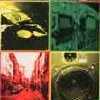 Ska is one of those genres which should always be popular on the dancefloor, if only for the simple fact that it’s just about perfect for skanking and grooving to. Add in some sampling technology and the manipulation of decks to the equation, and the reults found in 21st Century Ska are enjoyably happy and groovy enough to get the feet synched to the backbeat.
Ska is one of those genres which should always be popular on the dancefloor, if only for the simple fact that it’s just about perfect for skanking and grooving to. Add in some sampling technology and the manipulation of decks to the equation, and the reults found in 21st Century Ska are enjoyably happy and groovy enough to get the feet synched to the backbeat.
The compilation kicks off with a right stormer, Freaky Beanz‘ “Pearly King Skank”, which slips some cheeky scratching in among the digital beats, part-Hi[pHop, part-Ska, and all-around catchy fun with a hook bigger than could be imagined chuckling around some seriously-swirling horns and echoed piano breaks offset by whoosing down-draughts of synthy tickles. With the the smiles brought into overdrive at the start, things proceed off into more serious head-down skanking directions with Hardwire’s mix of DJ Stix’ “Two Tone Tables”, a piece destined to put the nutty into Trance. Likewise, The Woodshed is stacked with some deep bass among the cyclical chops on “Scar Wars”, bleep-Dub style.
LL Nino brings up the tempo and the noise on “One Eyed Giant”, filling the wall of sound with brass, siren and vocal fragments among the densely-interlocked breakbeats sourced from the original Ska material. The full-tilt hardcore dance party mood is maintained by Judgemental on the darkly Drum’n’Bassy “Son Of Thunder” which soon whirls off into the stratosphere on a skein of furious breakbeats, E-churning synths and Old Testament vocal echoes from on high, topped off with yet more siren and Dub breakdowns. Pretty much the same applies to “Fabric Session” from Rumblefish (also known as The Dub Pistols‘ Barry Ashworth), but with a more stoned vibration to the shimmer of fulsome beats and stepping bass.
Things get a little more political on the Subculture Soundsystem‘s phased-loops of “Asylum Seekers”, combining a Deep House rhythm with a purposeful walking bass synth line to get the sound system pumping dynamically in militant uptempo style. Afterwards there’s an opportunity to lean back into the thud and groove of the bass of “Sinsimilia” from Soul Of Man‘s remix of Stopper, perhaps while sampling a little of the title substance to accompany its unwinding digital Dub chunder. By this point, some of the Ska-ness seems to have become submerged in the breakbeat science, but Amsterdam’s SkankAround Soundsystem and the inimitable Terry Edwards Ska Allstars soon put a lively step back into proceedings with “P.I. Skank” and “The Liqidator”. The former uses live Ska act the Top Cats as sample material, turning out a Film Noirish tune with everything which properly signifies Ska in place, from the muted cornet solos to the brassy backup and the chickawacka guitar, processed through a digital blender into an atmospheric insturmental, complete with xylophone interlude.
Edwards and friends (including some members of Madness) pump out a deliciously upbeat version of classic Ska piece “The Liquidator”, given a rewind and crackle remake by The Long Throw Specialist, but keeping the transcendental Hammond melody rightfully intact among the slightly intrusive sampled “yeahs!”. Scratching and HipHop techniques creep back to furiously funky effect from Outcast on “Take Heed”, where the bass pressure is unleashed to rumbly warp-propelled accompaniment of cross-echoed bleeps and neighs, “Lissen up!” and Rastaman samples, and a gurgling riff of drain-like dimensions to turn the head inside out. “Spectres” from Justin Robertson (Lionrock) in Gentleman Thief kicks back into a mellower blend of repetetive beats and extensive delay accretions, allowing the Ska to flow gently outwards at its own evenly-spaced pace – with the emphasis on the spaced, naturally. Pfink‘s “Ska Plains Drifter” is another energetic Ska-Hop romp, sampling Spaghetti Westens, horn fills and a big-sized beat to fruity levels of gunshot and whinny-flavoured frenzy, complete with C&W-tinged guitar. Finally, Urban Dub use a digital steel drum to introduce the respectfully-Ska’d “Jump Jump”, where horns and cowbells mesh to the pervasive bass and drum rhythm to bring the album down to a pleasant old school conclusion.
-Freq1C-
Various – Underground Trance
Label: Classic Pictures Entertainment Format: DVD+2CD
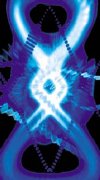 There’s little about this DVD + 2 CD set that isn’t epic in proportions. 30 unmixed banging club trance tracks featuring Yahel, Impact, Hardy Heller, Ray Boye, Vision, Massey, Trance Society … and of course what compilation would be complete without a bit of Frankie Goes To Hollywood in the form of Nalin And Kane‘s remix of “Welcome To The Pleasure Dome”. On top of this is a DVD packed with acidic visuals from clubs around Europe and Ibiza.
There’s little about this DVD + 2 CD set that isn’t epic in proportions. 30 unmixed banging club trance tracks featuring Yahel, Impact, Hardy Heller, Ray Boye, Vision, Massey, Trance Society … and of course what compilation would be complete without a bit of Frankie Goes To Hollywood in the form of Nalin And Kane‘s remix of “Welcome To The Pleasure Dome”. On top of this is a DVD packed with acidic visuals from clubs around Europe and Ibiza.
Musically, you should know exactly what to expect. It says Trance on the cover and that’s precisely what you get: lots of it, no ifs or buts. Big big Trance with massive arpeggiator OD and enormous build ups somewhere on the other side of the stratosphere. Fat analogue basslines and melodies are driven by pounding Techno rhythms straight from the dance floors of European clubs. Trance tends to be at the harmonic end of Techno; it isn’t just about seeing what unworldly noises you can squeeze out of a sampler, it’s about epic anthemic musical structures that lift you up and then blow your mind with a five minute long drum roll. Underground Trance is pumping. It demands volume.
So now you know. If you put Underground Trance on and settle down for a quiet Sunday afternoon you’ve only got yourself to blame. If, on the other hand, you want a compilation that’s every bit as epic as the music it contains this will be the one for you.
-iChannel0-
Various – Variable Access
Label: Active Suspension Format: CD
Interesting French electronic music (so the sticker sez) from My Jazzy Child, Shinsei, Aerosol, MILS, Hypo, O.Lamm, Dorine_Muraille, Encre, Osaka, Melodium, and Domitic. I list them all for the various shout-outs that should happen in these dopey reviews, as well as to lure you searchers out there on the Internet to find these groups. I’m so thoughtful. The sounds range from tinkly bells and scratching vinyl (My Jazzy Child) to gritty grates of sound so intensely expanded by modern laptop technology; cut-up drumbeats and itchy tingles of sound to pleasant crunchy rhythmic diddlies; to children’s voices interspersed amongst a manic landscape and various chirps and singing; to strummed guitar and shivering waves of ambience and foreplay; to dishwashing music that dovetails nicely into the subsequent heartbreaking fuck music.
Ironically, it-s somehow remote and removed from other electronic music around these days, if such a thing can be discerned by such dissonant elephantine tones and happy harmonies as appear on this compilation. This is not a bad thing – after all, Jean-Louis Tritignant was in Funerale en Los Angeles (aka The Outside Man , 1972), and he was the outside man, and he was badass. Look for Frog-Rock (French progressive music) to make an alarming leap into public consciousness within the reasonably near future tense! Well, after you read the nice little catalogue they include with the package, that is.
-David Cotner-
Various – Vertical Forms
Label: Vertical Form Format: CD
It smells beautifully, of maple syrup. Unfortunately, there ain’t no fucking sleeve notes. Thanks, penurious promo people! It begins with a vaguely Asian passage of music and shortwave mixed in amongst the fine fuck music beats, which is to say that it is suited for the late-night drive of figuring out something about him or her, and the way that uncertain something makes you smile and run that third red light… Listen and don’t let anyone else’s voice disturb your enjoyment of it. A more simple, crunchy rhythm conspires along with various beeps and frazzled tones, bringing in the occasional tubular bell. Vertical Forms, yes – insofar as one overriding visual is that of 0s and 1s falling over one another in a cavalcade of patterns and shapes, at odd times and in startling motions, and then slowing up for the final gentle melody of an ant foraging…
Very icebox, this.
-David Cotner-
Various– We Are Reasonable People
Label: Warp Format: CD, 3×12″
Having reached their one hundredth single release, seminal purveyors of fine elctronica (or even ambient bleep artists) Warp celebrate in traditional style by collecting together their finest singings to mark the event. Rather than a retrospective of nine years’ worth of descent from near-mainstream success to cult status, We Are Reasonable People showcases the current roster, from hardy perrenials Squarepusher and Aphex Twin (here collaborating in frantic breakbeat style) to newbies Plone.
If there is such a thing as a (stereo)typical Warp artist or sound, perhaps the pristine constructions of Plaid, the watery electro trance propulsions of Two Lone Swordsmen or even the shuffling digital ambiences of Boards of Canada spring to mind. However, the artists who ensure the label lives up to its name are well represented too; Autechre push their sound sources through the digital wringer, ensuring minimal dancability and maximum deconstruction; Mira Calix deploys distortion and layered repetition to good effect; while the presence of Jimi Tenor on any record guarantees a sleazy cocktail interlude (with a twist).
Pretty much every aspect of electronic music’s established spectrum gets a look in, with the cheerful Bontempi bleeps of Plone or Nightmares On Wax’s funksome “Fishtail Parker”, and Broadcast turn in a icily ominous post-rockish instrumental, overcoming lingering memories of their uninspiring 1997 debut album. With the twangy, instrumental JazzHop of Red Snapper and Mark Bell’s noisily anthemic “A Salute To All Those People Who Say Fuck You” too, the snapshot of a label completing some kind of rite of passage is complete.
– Freq 1C –
Various – Wild Planet
Label: Subconscious Communications/Nettwerk Format: CD
 I’m always excited to hear a new album by my fave band, Various Artists. Apparently they’re touring soon, with To Be Announced supporting them. This time Download‘s Cevin Key, ex of Skinny Puppy, has chosen some top tunes to tickle your turntables. And it’s all cool Industrial stuff in a Skinny Puppy vein (including a remix of “Rodent” by everyone’s favourite anti-vivisection Canadians themselves), but with a lot more Dub than I expected. Sure, Twilight Circus, wonderful though “Ultra Binghi” undoubtedly is, aren’t surprising anyone by being all bassy and drummy, but at other points – for example, Download’s “Toooly Hooof” remix – the Reggae elements come as a pleasant surprise. Although I guess “pleasant” probably isn’t the effect you get from most of the album – lots of nasty sheet-metal noises, pumping bass synths and screeching is more in the order (or, indeed, Chaos) of things.
I’m always excited to hear a new album by my fave band, Various Artists. Apparently they’re touring soon, with To Be Announced supporting them. This time Download‘s Cevin Key, ex of Skinny Puppy, has chosen some top tunes to tickle your turntables. And it’s all cool Industrial stuff in a Skinny Puppy vein (including a remix of “Rodent” by everyone’s favourite anti-vivisection Canadians themselves), but with a lot more Dub than I expected. Sure, Twilight Circus, wonderful though “Ultra Binghi” undoubtedly is, aren’t surprising anyone by being all bassy and drummy, but at other points – for example, Download’s “Toooly Hooof” remix – the Reggae elements come as a pleasant surprise. Although I guess “pleasant” probably isn’t the effect you get from most of the album – lots of nasty sheet-metal noises, pumping bass synths and screeching is more in the order (or, indeed, Chaos) of things.
‘Cuz this is very much a world descended from Eighties Industrialism, all big boots and eyeliner, and as such should be something of an education and well-needed history lesson to today’s big-shorted Nine Inch Nails/Filter crowd. It didn’t used to be all catchy teen angst/mid-life crisis stuff – I remember when all this was factories. The other thing that always differentiated the various Puppy/Key projects from the rest of the industrial scene was a certain amount of just plain weirdness. Unexpected samples, screechy noises when you least expected ’em, drum patterns that seemed to be making it up as they went along. The tracks here are no exception, even down to the against-all-the-odds combination of Key and the Legendary Pink Dots’ very own Edward Ka-Spel to form the a-bit-like-the-Dots-only-Gothier or a-bit-like-Skinny-Puppy-only-totally-different (depending on how you look at it) Tear Garden project, who are fucking marvellous here (as ever) with a typically twisted tale of domestic life, “Things That Go Bump In The Night”. The Dots are on themselves, too, of course, with a new version of the lovely “Fate’s Faithful Punchline” from Nemesis Online.
More modern-stylee Techno pops up on Philth‘s “Sanity Shovel”, but still of the very spooky and sinister kind – lots of echo and insistent bass to go with its keyboard washes. “FoundFlap” by Floatpoint comes on like a dubbier “My Life In The Bush Of Ghosts” only recorded in space. On ketamine. And the whole thing’s topped off with Dead Voices on Air meets Dropstar‘s “Rijn” – lots of atmospheric space swooshy noises with a persistent throb and a whispered vocal track. Smart.
So yeah, apart from its kinda lame title, this is a top fucking album. Essential listening for anyone with a soul, and very useful as an education tool for these young upstarts who think Industrial music is Metal with a drum machine.
-Deuteronemu 90210 on a stick-
Various – You Don’t Need Darkness To Do What You Think Is Right – New Geographic Music
Label: Geographic Format: CD
Not so much a label sampler as a showcase, You Don’t Need Darkness To Do What You Think Is Right presents exclusive new tracks from Geographic‘s roster of friends and relations of The Pastels. As such, a certain lo-fi sound is the order of the day, though the current definition of low fidelity has perhaps drifted beyond tapehiss and into the realms of digital home cooking.
So the hosts make the introduction with an instrumental track of that name and the hushed brass and not-quite sung words of “Everybody Is A Star”, which wriggles into shape as a slow Lounge number, complete with “ba-ba-bas”, and ends up somwhat more Hippyish than Thelemite in the process (if there is really a difference). Yet more anti-singing from International Airport‘s Tom Crossley, who keeps the jangle and the out of tune feel of “Cordial Arrest” shambling along somehow into a respectable cartoon chug of considerable tweeness. Much better is the scrawled horn intro to the cod-Reggae “Remember Fun (Like We Was Young)” from Future Pilot AKA, which oozes cheery positivity among its chimes, tweets and lumbering breakbeats before drifting off into a mostly convincing TripHoppish meander.
The whistling sound of the Bill Wells Octet shuffles up a cheery Jazz smokiness of decidedly suave aspect, while Maher Shalal Hash Baz deliver degenerated Pop of shambolic dimensions as the lateral “Stone In The River”. Then there’s Japanese melancholy and mouth organ from Nagisa Ni Te, who sound like they’ve escaped from the soundtrack to a Sixties movie sunset moment; acoustic walking blues from Sister Vanilla, who just happen to be Linda, Jim and William Reid (plus Ben Lurie) doing their best to emulate the Velvet Underground (again) without stepping on a fuzz pedal once; “Amber” from Pedro kicks a stuttered beat around with the electronic shimmers of Minimalism to decently dynamic effect; Barbara Morgenstern sings her German lilt to the scuttle of barebones clicks, drones and filtered keyboards while the bassline revolves warmly to the emergent groove and the cut-up makes things interesting.
Empress sing in folkish mood, baring souls like Low do on a slowcore acoustic pluck; “The Language In things” from Appendix Out looks backwards to reedy drones and yet more shambling melodies, tugging at nostalgic heartstrings just like they were in the room; then there are the Folk Rock stirrings of The Telstar Ponies, calling “Farewell, Farewell” like the Twentieth Century never happened other than as an outlet for the electricity needed to plug in the guitars; Directorsound have a washed-up desert Western atmosphere with a lo-fi twang straight out of The Third Man; “No More Rides” from National Park is a slow-motion Indie lament; Plinth make their homespun piano-led hesitant curlicues of simple elegance appear and disappear without noticable passage of time; and lastly, Kevin Shields performs the “Outro” as a counterpoint to the sparse guitar motif lifted from The Pastels’ own “Intro”, making a musical as well as album loop whirl things back to the core of cyclical repetition…
-Linus Tossio-

